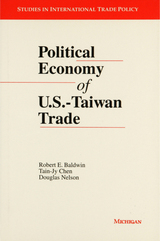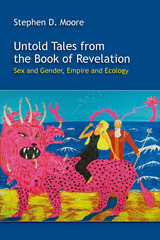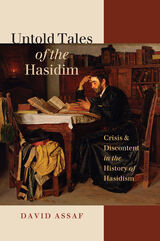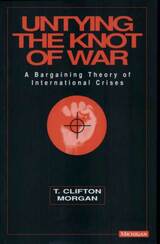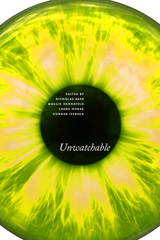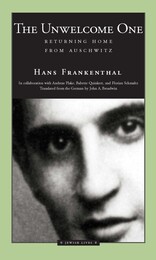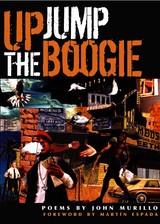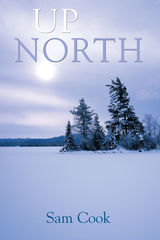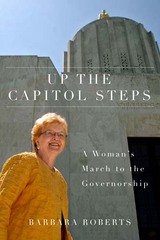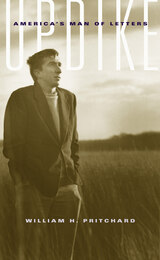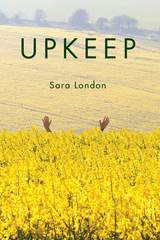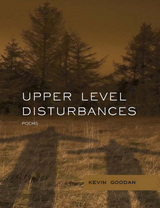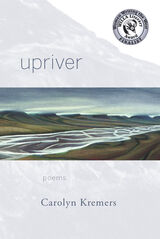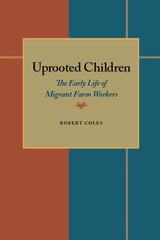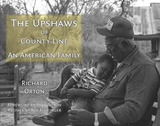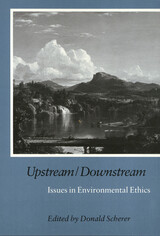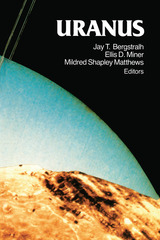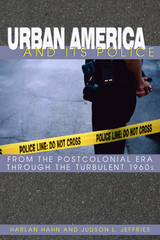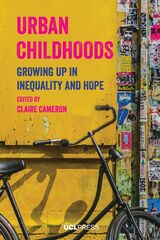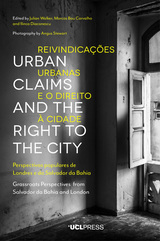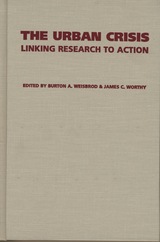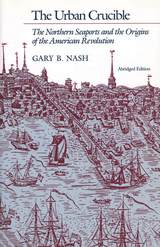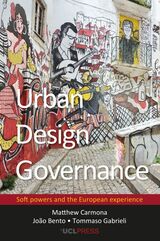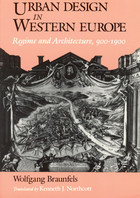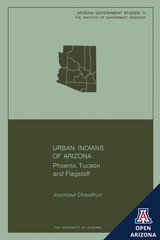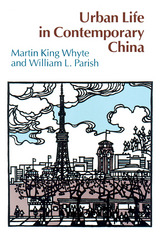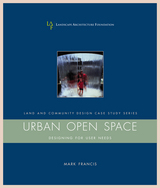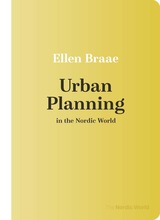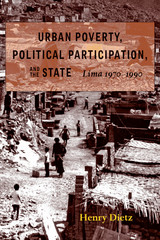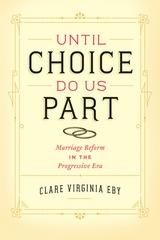 Until Choice Do Us Part: Marriage Reform in the Progressive Era
Clare Virginia Eby
University of Chicago Press, 2013 For centuries, people have been thinking and writing—and fiercely debating—about the meaning of marriage. Just a hundred years ago, Progressive era reformers embraced marriage not as a time-honored repository for conservative values, but as a tool for social change. In Until Choice Do Us Part, Clare Virginia Eby offers a new account of marriage as it appeared in fiction, journalism, legal decisions, scholarly work, and private correspondence at the turn into the twentieth century. She begins with reformers like sexologist Havelock Ellis, anthropologist Elsie Clews Parsons, and feminist Charlotte Perkins Gilman, who argued that spouses should be “class equals” joined by private affection, not public sanction. Then Eby guides us through the stories of three literary couples—Upton and Meta Fuller Sinclair, Theodore and Sara White Dreiser, and Neith Boyce and Hutchins Hapgood—who sought to reform marriage in their lives and in their writings, with mixed results. With this focus on the intimate side of married life, Eby views a historical moment that changed the nature of American marriage—and that continues to shape marital norms today.
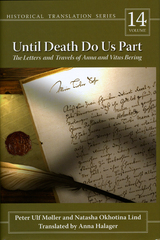 Until Death Do Us Part: The Letters and Travels of Anna and Vitus Bering
Edited by Peter Ulf Møller and Natasha Okhotina Lind
University of Alaska Press, 2008 Eighteenth-century Danish explorer Vitus Bering led historic expeditions to the Russian Far East and Alaska under the patronage of Peter the Great, and his wife Anna Christina accompanied him on his expedition to Okhotsk in 1739. The sixteen letters that they wrote over the following year make up the core of this volume, which features facing-page translations from the original German. The documents offer an intimate look into eighteenth-century customs, as well as the explorer’s family life and daily routine. Also featured is an inventory of goods that Anna Christina brought back to Moscow after Bering’s death in 1742, revealing key insights into the types of goods available in Russia at the time. Until Death Do Us Part is a richly informative volume that will be essential for all those interested in European history and travel writing.
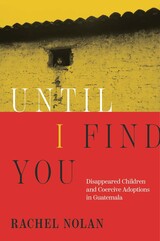 Until I Find You: Disappeared Children and Coercive Adoptions in Guatemala
Rachel Nolan
Harvard University Press, 2024 Finalist for the Pulitzer Prize in Nonfiction
The poignant saga of Guatemala’s adoption industry: an international marketplace for children, built on a foundation of inequality, war, and Indigenous dispossession.
In 2009 Dolores Preat went to a small Maya town in Guatemala to find her birth mother. At the address retrieved from her adoption file, she was told that her supposed mother, one Rosario Colop Chim, never gave up a child for adoption—but in 1984 a girl across the street was abducted. At that house, Preat met a woman who strongly resembled her. Colop Chim, it turned out, was not Preat’s mother at all, but a jaladora—a baby broker.
Some 40,000 children, many Indigenous, were kidnapped or otherwise coercively parted from families scarred by Guatemala’s civil war or made desperate by unrelenting poverty. Amid the US-backed army’s genocide against Indigenous Maya, children were wrested from their villages and put up for adoption illegally, mostly in the United States. During the war’s second decade, adoption was privatized, overseen by lawyers who made good money matching children to overseas families. Private adoptions skyrocketed to the point where tiny Guatemala overtook giants like China and Russia as a “sender” state. Drawing on government archives, oral histories, and a rare cache of adoption files opened briefly for war crimes investigations, Rachel Nolan explores the human toll of an international industry that thrives on exploitation.
Would-be parents in rich countries have fostered a commercial market for children from poor countries, with Guatemala becoming the most extreme case. Until I Find You reckons with the hard truths of a practice that builds loving families in the Global North out of economic exploitation, endemic violence, and dislocation in the Global South.
 Until I Find You: Disappeared Children and Coercive Adoptions in Guatemala
Rachel Nolan
Harvard University Press Finalist for the Pulitzer Prize in Nonfiction
Shortlisted for the 2025 Juan E. Méndez Book Award
“Detailed and heartrending . . . uses years of research to show the way that a country destabilized by war can invite merciless profiteers to break apart families” —John Washington, Harper’s
The poignant saga of Guatemala’s adoption industry: an international marketplace for children, built on a foundation of inequality, war, and Indigenous dispossession.
In 2009 Dolores Preat traveled to a small Maya town in Guatemala to find her birth mother. At the address retrieved from her adoption file, she was told that her supposed mother, one Rosario Colop Chim, never gave up a child for adoption—but in 1984, a girl across the street was abducted. At that house, Preat didn’t meet her mother, but she did meet Colop Chim, who turned out to be a jaladora—a baby broker.
Preat and some 40,000 other Guatemalan children, many Indigenous, were kidnapped or otherwise coercively parted from families scarred by poverty and civil war. Amid the US-backed army’s genocide against Indigenous Maya, children were wrested from their villages and put up for adoption illegally, mostly in the United States. Eventually adoption became a private enterprise, overseen by lawyers who made good money matching children to overseas families.
Drawing on government archives, oral histories, and a rare cache of files from war crimes investigations, Until I Find You reckons with the human toll of an industry that builds loving families in the Global North out of exploitation, endemic violence, and dislocation in the Global South.
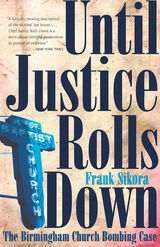 Until Justice Rolls Down: The Birmingham Church Bombing Case
Frank Sikora
University of Alabama Press, 2005 It was a time when Martin Luther King Jr. and other leaders rallied black youth and adults to march for their civil rights, a time when the Ku Klux Klan was active in cities and throughout the countryside of the Deep South, employing 19th-century tactics to intimidate blacks to stay “in their place.” It was also the year that the worst act of terrorism in the entire civil rights movement occurred just as Birmingham, Alabama, was coming under close national scrutiny.
This book tells the story of one grim Sunday in September 1963 when an intentionally planted cache of dynamite ripped through the walls of the Sixteenth Street Baptist Church and ended the dreams and the lives of four young black girls. Their deaths spurred the Kennedy administration to send an army of FBI agents to Alabama and led directly to the passage of the Civil Rights Act. When the Justice Department was unable to bring anyone to trial for this heinous crime, a young Alabama attorney general named Bill Baxley began his own investigation to find the perpetrators. In 1977, 14 years after the bombing, Baxley brought one Klansman to trial and, in a courtroom only blocks from the bombed church (now a memorial to the victims), persuaded a jury to return a guilty verdict. More than 20 years later two other perpetrators were tried for the bombing, found guilty, and remanded to prison.
Frank Sikora has used the court records, FBI reports, oral interviews, and newspaper accounts to weave a story of spellbinding proportions. A reporter by profession, Sikora tells this story compellingly, explaining why the civil rights movement had to be successful and how Birmingham had to change.
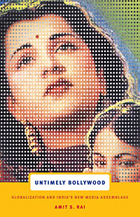 Untimely Bollywood: Globalization and India's New Media Assemblage
Amit S. Rai
Duke University Press, 2009 Known for its elaborate spectacle of music, dance, costumes, and fantastical story lines, Bollywood cinema is a genre that foregrounds narrative rupture, indeterminacy, and bodily sensation. In Untimely Bollywood, Amit S. Rai argues that the fast-paced, multivalent qualities of contemporary Bollywood cinema are emblematic of the changing conditions of media consumption in a globalizing India. Through analyses of contemporary media practices, Rai shifts the emphasis from a representational and linear understanding of the effects of audiovisual media to the multiple, contradictory, and evolving aspects of media events. He uses the Deleuzian concept of assemblage as a model for understanding the complex clustering of technological, historical, and physical processes that give rise to contemporary media practices. Exploring the ramifications of globalized media, he sheds light on how cinema and other popular media organize bodies, populations, and spaces in order to manage the risky excesses of power and sensation and to reinforce a liberalized postcolonial economy. Rai recounts his experience of attending the first showing of a Bollywood film in a single-screen theater in Bhopal: the sensory experience of the exhibition space, the sound system, the visual style of the film, the crush of the crowd. From that event, he elicits an understanding of cinema as a historically contingent experience of pleasure, a place where the boundaries of identity and social spaces are dissolved and redrawn. He considers media as a form of contagion, endlessly mutating and spreading, connecting human bodies, organizational structures, and energies, thus creating an inextricable bond between affect and capital. Expanding on the notion of media contagion, Rai traces the emerging correlation between the postcolonial media assemblage and capitalist practices, such as viral marketing and the development of multiplexes and malls in India.
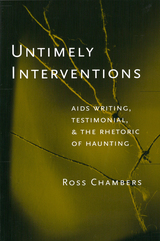 Untimely Interventions: AIDS Writing, Testimonial, and the Rhetoric of Haunting
Ross Chambers
University of Michigan Press, 2004 As atrocity has become characteristic of modern history, testimonial writing has become a major twentieth-century genre. Untimely Interventions relates testimonial writing, or witnessing, to the cultural situation of aftermath, exploring ways in which a culture can be haunted by its own history. Ross Chambers argues that culture produces itself as civilized by denying the forms of collective violence and other traumatic experience that it cannot control. In the context of such denial, personal accounts of collective disaster can function as a form of counter-denial. By investigating a range of writing on AIDS, the First World War, and the Holocaust, Chambers shows how such writing produces a rhetorical effect of haunting, as it seeks to describe the reality of those experiences culture renders unspeakable. Ross Chambers is Professor of Romance Languages at the University of Michigan. His other books includeFacing It: AIDS Diaries and the Death of the Author.
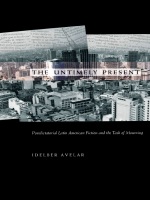 The Untimely Present: Postdictatorial Latin American Fiction and the Task of Mourning
Idelber Avelar
Duke University Press, 1999 The Untimely Present examines the fiction produced in the aftermath of the recent Latin American dictatorships, particularly those in Argentina, Brazil, and Chile. Idelber Avelar argues that through their legacy of social trauma and obliteration of history, these military regimes gave rise to unique and revealing practices of mourning that pervade the literature of this region. The theory of postdictatorial writing developed here is informed by a rereading of the links between mourning and mimesis in Plato, Nietzsche’s notion of the untimely, Benjamin’s theory of allegory, and psychoanalytic / deconstructive conceptions of mourning. Avelar starts by offering new readings of works produced before the dictatorship era, in what is often considered the boom of Latin American fiction. Distancing himself from previous celebratory interpretations, he understands the boom as a manifestation of mourning for literature’s declining aura. Against this background, Avelar offers a reassessment of testimonial forms, social scientific theories of authoritarianism, current transformations undergone by the university, and an analysis of a number of novels by some of today’s foremost Latin American writers—such as Ricardo Piglia, Silviano Santiago, Diamela Eltit, João Gilberto Noll, and Tununa Mercado. Avelar shows how the ‘untimely’ quality of these narratives is related to the position of literature itself, a mode of expression threatened with obsolescence. This book will appeal to scholars and students of Latin American literature and politics, cultural studies, and comparative literature, as well as to all those interested in the role of literature in postmodernity.
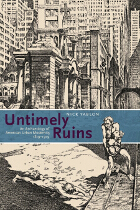 Untimely Ruins: An Archaeology of American Urban Modernity, 1819-1919
Nick Yablon
University of Chicago Press, 2009 American ruins have become increasingly prominent, whether in discussions of “urban blight” and home foreclosures, in commemorations of 9/11, or in postapocalyptic movies. In this highly original book, Nick Yablon argues that the association between American cities and ruins dates back to a much earlier period in the nation’s history. Recovering numerous scenes of urban desolation—from failed banks, abandoned towns, and dilapidated tenements to the crumbling skyscrapers and bridges envisioned in science fiction and cartoons—Untimely Ruins challenges the myth that ruins were absent or insignificant objects in nineteenth-century America. The first book to document an American cult of the ruin, Untimely Ruins traces its deviations as well as derivations from European conventions. Unlike classical and Gothic ruins, which decayed gracefully over centuries and inspired philosophical meditations about the fate of civilizations, America’s ruins were often “untimely,” appearing unpredictably and disappearing before they could accrue an aura of age. As modern ruins of steel and iron, they stimulated critical reflections about contemporary cities, and the unfamiliar kinds of experience they enabled. Unearthing evocative sources everywhere from the archives of amateur photographers to the contents of time-capsules, Untimely Ruins exposes crucial debates about the economic, technological, and cultural transformations known as urban modernity. The result is a fascinating cultural history that uncovers fresh perspectives on the American city.
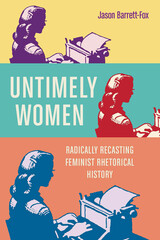 Untimely Women: Radically Recasting Feminist Rhetorical History
Jason Barrett-Fox
Ohio State University Press, 2022 Untimely Women recovers the work of three early-twentieth-century working women, none of whom history has understood as feminists or rhetors: cinema icon and memoirist, Mae West; silent film screenwriter and novelist, Anita Loos; and journalist and mega-publisher, Marcet Haldeman-Julius. While contemporary scholarship tends to highlight and recover women who most resemble academic feminists in their uses of propositional rhetoric, Jason Barrett-Fox uses what he terms a medio-materialist historiography to emphasize the different kinds of political and ontological gender-power that emerged from the inscriptional strategies these women employed to navigate and critique male gatekeepers––from movie stars to directors to editors to abusive husbands. In recasting the work of West, Loos, and Haldeman-Julius in this way, Barrett-Fox reveals the material and ontological ramifications of their forms of invention, particularly their ability to tell trauma in ways that reach beyond their time to raise the consciousness of audiences unavailable to them in their lifetimes. Untimely Women thus accomplishes important historical and rhetorical work that not only brings together feminist historiography, rhetorical materialism, and posthumanism but also redefines what counts as feminist rhetoric.
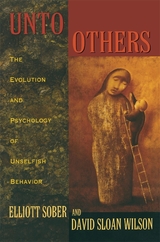 Unto Others: The Evolution and Psychology of Unselfish Behavior
Elliott Sober and David Sloan Wilson
Harvard University Press, 1998 No matter what we do, however kind or generous our deeds may seem, a hidden motive of selfishness lurks--or so science has claimed for years. This book, whose publication promises to be a major scientific event, tells us differently. In Unto Others philosopher Elliott Sober and biologist David Sloan Wilson demonstrate once and for all that unselfish behavior is in fact an important feature of both biological and human nature. Their book provides a panoramic view of altruism throughout the animal kingdom--from self-sacrificing parasites to insects that subsume themselves in the superorganism of a colony to the human capacity for selflessness--even as it explains the evolutionary sense of such behavior.
Explaining how altruistic behavior can evolve by natural selection, this book finally gives credence to the idea of group selection that was originally proposed by Darwin but denounced as heretical in the 1960s. With their account of this controversy, Sober and Wilson offer a detailed case study of scientific change as well as an indisputable argument for group selection as a legitimate theory in evolutionary biology.
Unto Others also takes a novel evolutionary approach in explaining the ultimate psychological motives behind unselfish human behavior. Developing a theory of the proximate mechanisms that most likely evolved to motivate adaptive helping behavior, Sober and Wilson show how people and perhaps other species evolved the capacity to care for others as a goal in itself.
A truly interdisciplinary work that blends biology, philosophy, psychology, and anthropology, this book will permanently change not just our view of selfless behavior but also our understanding of many issues in evolutionary biology and the social sciences.
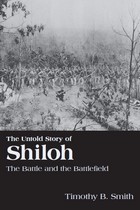 The Untold Story of Shiloh: The Battle and the Battlefield
Timothy B. Smith
University of Tennessee Press, 2008
At the mention of Shiloh, most tend to think of two particularly bloody and crucial days in April 1862. The complete story, however, encompasses much more history than that of the battle itself. While several accounts have taken a comprehensive approach to Shiloh, significant gaps still remain in the collective understanding of the battle and battlefield.
In The Untold Story of Shiloh, Timothy B. Smith fills in those gaps, looking beyond two days of battle and offering unique insight into the history of unexplored periods and topics concerning the Battle of Shiloh and the Shiloh National Military Park.
This collection of essays, some previously unpublished, tackles a diverse range of subjects, including Shiloh's historiography, the myths about the battle that were created, and the mindsets that were established after the battle. The book reveals neglected military aspects of the battle, such as the naval contribution, the climax of the Shiloh campaign at Corinth, and the soldiers' views of the battle. The essays also focus on the Shiloh National Military Park's establishment and continuation with particular emphasis on those who played key roles in its creation.
Taken together, the essays tell the overall story of Shiloh in greater detail than ever before. General readers and historians alike will discover that The Untold Story of Shiloh is an important contribution to their understanding of this crucial episode in the Civil War.
Timothy B. Smith is on staff at the Shiloh National Military Park. He is author of Champion Hill: Decisive Battle for Vicksburg and This Great Battlefield of Shiloh: History, Memory, and the Establishment of a Civil War National Military Park.
 The Untold Story of the Talking Book
Matthew Rubery
Harvard University Press, 2016 Histories of the book often move straight from the codex to the digital screen. Left out of that familiar account are nearly 150 years of audio recordings. Recounting the fascinating history of audio-recorded literature, Matthew Rubery traces the path of innovation from Edison’s recitation of “Mary Had a Little Lamb” for his tinfoil phonograph in 1877, to the first novel-length talking books made for blinded World War I veterans, to today’s billion-dollar audiobook industry.
The Untold Story of the Talking Book focuses on the social impact of audiobooks, not just the technological history, in telling a story of surprising and impassioned conflicts: from controversies over which books the Library of Congress selected to become talking books—yes to Kipling, no to Flaubert—to debates about what defines a reader. Delving into the vexed relationship between spoken and printed texts, Rubery argues that storytelling can be just as engaging with the ears as with the eyes, and that audiobooks deserve to be taken seriously. They are not mere derivatives of printed books but their own form of entertainment.
We have come a long way from the era of sound recorded on wax cylinders, when people imagined one day hearing entire novels on mini-phonographs tucked inside their hats. Rubery tells the untold story of this incredible evolution and, in doing so, breaks from convention by treating audiobooks as a distinctively modern art form that has profoundly influenced the way we read.
Untold Tales from the Book of Revelation: Sex and Gender, Empire, and Ecology
Stephen D. Moore
SBL Press, 2014 An interlinked collection of essays representing the best of Stephen D. Moore’s groundbreaking scholarship
This collection of previously published essays is a companion to The Bible in Theory: Critical and Postcritical Essays (2010). Chapters engage postcolonial studies, cultural studies, deconstruction, autobiographical criticism, masculinity studies, queer theory, affect theory, and animality studies—methods Moore believes present unprecedented challenges to the monochrome model of Revelation scholarship based on traditional historical-critical methods.
Features:
- Nine essays on biblical literary criticism including two co-written with Jennifer A. Glancy and Catherine Keller
- Contextual introductions for each essay
- Annotated bibliographies
Untold Tales of the Hasidim: Crisis and Discontent in the History of Hasidism
David Assaf
Brandeis University Press, 2011 This fascinating volume reveals some of the dark, dramatic episodes concealed in the folds of the hasidic cloak—shocking events and anomalous figures in the history of Hasidism. Using tools of detection, Assaf extracts historical truth from a variety of sources by examining how the same events are treated in different memory traditions, whether hasidic, maskilic, or modern historical, and tells the stories of individuals from the hasidic elites who found themselves unable to walk the trodden path. By placing these episodes and individuals under his historical lens, Assaf offers a more nuanced historical portrayal of Hasidism in the nineteenth-century context.
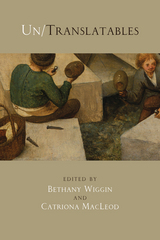 Un/Translatables: New Maps for Germanic Literatures
Edited by Bethany Wiggin and Catriona MacLeod
Northwestern University Press, 2016 The term "Untranslatables" is rooted in two explorations of translation written originally in German: Walter Benjamin's now ubiquitous "The Task of the Translator" and Goethe's extensive notes to his "tradaptation" of mystical Persian poetry. The essays collected in Un/Translatables unite two inescapable interventions in contemporary translation discourses: the concept of "Untranslatables" as points of productive resistance, and the Germanic tradition as the primary dialogue partner for translation studies. The essays collected in the volume pursue the critical itineraries that would result if "Untranslatables," as discussed in Barbara Cassin's Dictionary of Untranslatables, were returned, productively estranged, to their original German context. Thus, these essays explore Untranslatables across Germanic literatures—German, Yiddish, Dutch, and Afrikaans—and follow trajectories into Hebrew, Arabic, Mandarin, Japanese, English, and Scots.
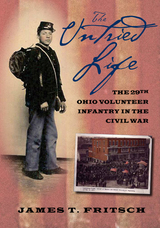 The Untried Life: The Twenty-Ninth Ohio Volunteer Infantry in the Civil War
James T. Fritsch
Ohio University Press, 2012 Told in unflinching detail, this is the story of the Twenty-Ninth Ohio Volunteer Infantry, also known as the Giddings Regiment or the Abolition Regiment, after its founder, radical abolitionist Congressman J. R. Giddings. The men who enlisted in the Twenty-Ninth OVI were, according to its lore, handpicked to ensure each was as pure in his antislavery beliefs as its founder. Whether these soldiers would fight harder than other soldiers, and whether the people of their hometowns would remain devoted to the ideals of the regiment, were questions that could only be tested by the experiment of war. The Untried Life is the story of these men from their very first regimental formation in a county fairground to the devastation of Gettysburg and the march to Atlanta and back again, enduring disease and Confederate prisons. It brings to vivid life the comradeship and loneliness that pervaded their days on the march. Dozens of unforgettable characters emerge, animated by their own letters and diaries: Corporal Nathan Parmenter, whose modest upbringing belies the eloquence of his writings; Colonel Lewis Buckley, one of the Twenty-Ninth’s most charismatic officers; and Chaplain Lyman Ames, whose care of the sick and wounded challenged his spiritual beliefs. The Untried Life shows how the common soldier lived—his entertainments, methods of cooking, medical treatment, and struggle to maintain family connections—and separates the facts from the mythology created in the decades after the war.
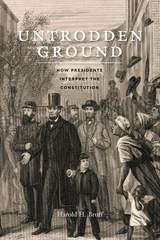 Untrodden Ground: How Presidents Interpret the Constitution
Harold H. Bruff
University of Chicago Press, 2015 When Thomas Jefferson struck a deal for the Louisiana Purchase in 1803, he knew he was adding a new national power to those specified in the Constitution, but he also believed his actions were in the nation’s best interest. His successors would follow his example, setting their own constitutional precedents. Tracing the evolution and expansion of the president’s formal power, Untrodden Ground reveals the president to be the nation’s most important law interpreter and examines how our commanders-in-chief have shaped the law through their responses to important issues of their time.
Reviewing the processes taken by all forty-four presidents to form new legal precedents and the constitutional conventions that have developed as a result, Harold H. Bruff shows that the president is both more and less powerful than many suppose. He explores how presidents have been guided by both their predecessors’ and their own interpretations of constitutional text, as well as how they implement policies in ways that statutes do not clearly authorize or forbid. But while executive power has expanded far beyond its original conception, Bruff argues that the modern presidency is appropriately limited by the national political process—their actions are legitimized by the assent of Congress and the American people or rejected through debilitating public outcry, judicial invalidation, reactive legislation, or impeachment. Synthesizing over two hundred years of presidential activity and conflict, this timely book casts new light on executive behavior and the American constitutional system.
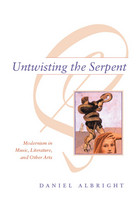 Untwisting the Serpent: Modernism in Music, Literature, and Other Arts
Daniel Albright
University of Chicago Press, 2000 From its dissonant musics to its surrealist spectacles (the urinal is a violin!), Modernist art often seems to give more frustration than pleasure to its audience. In Untwisting the Serpent, Daniel Albright shows that this perception arises partly because we usually consider each art form in isolation, even though many of the most important artistic experiments of the Modernists were collaborations involving several media—Igor Stravinsky's The Rite of Spring is a ballet, Gertrude Stein's Four Saints in Three Acts is an opera, and Pablo Picasso turned his cubist paintings into costumes for Parade.
Focusing on collaborations with a musical component, Albright views these works as either figures of dissonance that try to retain the distinctness of their various media (e.g. Guillaume Apollinaire's Les Mamelles de Tirésias) or figures of consonance that try to lose themselves in some total effect (e.g. Arnold Schoenberg's Erwartung). In so doing he offers a fresh picture of Modernism, and provides a compelling model for the analysis of all artistic collaborations.
Untwisting the Serpent is the recipient of the 2001 Susanne M. Glasscock Humanities Book Prize for Interdisciplinary Scholarship of the Center for Humanities Research at Texas A&M University.
 Untying the Afghan Knot: Negotiating Soviet Withdrawal
Riaz M. Khan
Duke University Press, 1991 Diplomatic efforts to resolve the Afghanistan crisis began almost immediately after the Soviet Union’s military intervention in that country in December 1979. Untying the Afghan Knot offers the first detailed account of the diplomatic process set in motion by that intervention and culminating in the April 1988 Geneva Accords—a milestone in multilateralism and United Nations (UN) peacemaking.
Riaz M. Khan, a senior Pakistani diplomat, participated actively in all meetings on Afghanistan in the United Nations, the Non-Aligned Movement, and the Organization of the Islamic Conference, and in all of the Geneva negotiating rounds (1882–1988). Drawing upon his personal experience, official documents, scholarly literature, and press accounts, he provides a unique insider’s view of these precedent-setting negotiations, which were often shrouded in secrecy and misperceptions.
Khan examines the interests, positions, and behind-the-scenes maneuverings of the major players—Afghan governments and resistance groups, Pakistan, the Soviet Union, the United States, and UN mediators—and assesses the impact of military and political developments inside Afghanistan and elsewhere, including the advent of Mikhail Gorbachev. Khan’s authoritative account of these critical diplomatic initiatives sheds important light on the internal dynamics of the multilateral Afghanistan negotiations.
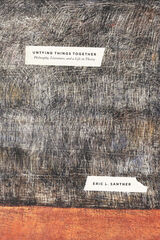 Untying Things Together: Philosophy, Literature, and a Life in Theory
Eric L. Santner
University of Chicago Press, 2022 Untying Things Together helps to clarify the stakes of the last fifty years of literary and cultural theory by proposing the idea of a sexuality of theory.
In 1905, Freud published his Three Essays on the Theory of Sexuality, the book that established the core psychoanalytic thesis that sexuality is central to formations of the unconscious. With this book, Eric L. Santner inverts Freud’s title to take up the sexuality of theory—or, more exactly, the modes of enjoyment to be found in the kinds of critical thinking that, since the 1960s, have laid claim to that ancient word, “theory.” Santner unfolds his argument by tracking his own relationship with this tradition and the ways his intellectual and spiritual development has been informed by it.
Untying Things Together is both an intellectual history of major theoretical paradigms and a call for their reexamination and renewal. Revisiting many of the topics he has addressed in previous work, Santner proposes a new way of conceptualizing the eros of thinking, attuned to how our minds and bodies individually and collectively incorporate or “encyst” on a void at the heart of things. Rather than proposing a “return to theory,” Santner’s book simply employs theory as a way of further “(un)tying together” the resources of philosophy, art and literature, theology, psychoanalysis, political thought, and more.
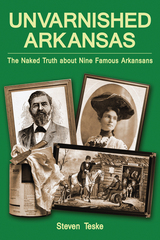 Unvarnished Arkansas: The Naked Truth about Nine Famous Arkansans
Steven Teske
Butler Center for Arkansas Studies, 2012 A man squanders his family fortune until he is penniless, loses every time he runs for public office, and yet is so admired by the people of Arkansas that the General Assembly names a county in his honor. A renowned writer makes her home in the basement of a museum until she is sued by some of the most prominent women of the state regarding the use of the rooms upstairs. A brilliant inventor who nearly built the first airplane is also vilified for his eccentricity and possible madness. Author Steven Teske rummages through Arkansas’s colorful past to find--and "unvarnish"--some of the state’s most controversial and fascinating figures. The nine people featured in this collection are not the most celebrated products of Arkansas. More than half of them were not even born in Arkansas, although all of them lived in Arkansas and contributed to its history and culture. But each of them has achieved a certain stature in local folklore, if not in the story of the state as a whole.
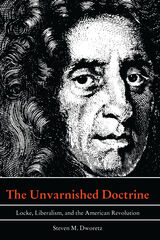 The Unvarnished Doctrine: Locke, Liberalism, and the American Revolution
Steven M. Dworetz
Duke University Press, 1990 In The Unvarnished Doctrine, Steven M. Dworetz addresses two critical issues in contemporary thinking on the American Revolution—the ideological character of this event, and, more specifically, the relevance of "America’s Philosopher, the Great Mr. Locke," in this experience. Recent interpretations of the American revolution, particularly those of Bailyn and Pocock, have incorporated an understanding of Locke as the moral apologist of unlimited accumulation and the original ideological crusader for the "spirit of capitalism," a view based largely on the work of theorists Leo Strauss and C. B. Macpherson. Drawing on an examination of sermons and tracts of the New England clergy, Dworetz argues that the colonists themselves did not hold this conception of Locke. Moreover, these ministers found an affinity with the principles of Locke’s theistic liberalism and derived a moral justification for revolution from those principles. The connection between Locke and colonial clergy, Dworetz maintains, constitutes a significant, radicalizing force in American revolutionary thought.
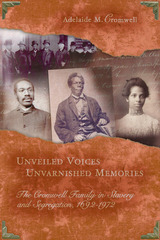 Unveiled Voices, Unvarnished Memories: The Cromwell Family in Slavery and Segregation, 1692-1972
Adelaide M. Cromwell
University of Missouri Press, 2006 When an industrious slave named Willis Hodges Cromwell earned the money to obtain liberty for his wife—who then bought freedom for him and for their children—he set in motion a family saga that resounds today. His youngest son, John Wesley Cromwell, became an educator, lawyer, and newspaper publisher—and one of the most influential men of letters in the generation that bridged Frederick Douglass and W. E. B. Du Bois. Now, in Unveiled Voices, Unvarnished Memories, his granddaughter, Adelaide M. Cromwell, documents the journey of her family from the slave marts of Annapolis to achievements in a variety of learned professions. John W. Cromwell began the family archives from which this book is drawn—letters and documents that provide an unprecedented view of how one black family thought, strived, and survived in American society from the seventeenth century to the twentieth. These papers reflect intimate thoughts about such topics as national and local leaders, moral behavior, color consciousness, and the challenges of everyday life in a racist society. They also convey a wealth of rich insights on the burdens that black parents’ demands for achievement placed on their children, the frequently bitter rivalries within the intellectual class of the African American community, and the negative impact on African American women of sexism in a world dominated by black men whose own hold on respect was tentative at best. The voices gathered here give readers an inside look at the formation and networks of the African American elite, as John Cromwell forged friendships with such figures as journalist John E. Bruce and the Reverend Theophilus Gould Steward. Letters with those two faithfully depict the forces that shaped the worldview of the small but steadily expanding community of African American intellectuals who helped transform the nation’s attitudes and policies on race, and whose unguarded comments on a wide range of matters will be of particular interest to social historians. Additional correspondence between John and his son, John Jr., brings the family story into modern times. Unveiled Voices, Unvarnished Memories is a rare look at the public and private world of individuals who refused to be circumscribed by racism and the ghetto while pursuing their own well-being. Its narrative depth breaks new ground in African American history and offers a unique primary source for that community.
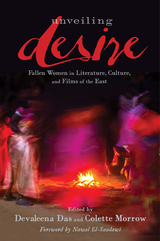 Unveiling Desire: Fallen Women in Literature, Culture, and Films of the East
Das, Devaleena
Rutgers University Press, 2018 In Unveiling Desire, Devaleena Das and Colette Morrow show that the duality of the fallen/saved woman is as prevalent in Eastern culture as it is in the West, specifically in literature and films. Using examples from the Middle to Far East, including Iran, India, Pakistan, Bangladesh, Thailand, Japan, and China, this anthology challenges the fascination with Eastern women as passive, abject, or sexually exotic, but also resists the temptation to then focus on the veil, geisha, sati, or Muslim women’s oppression without exploring Eastern women’s sexuality beyond these contexts. The chapters cover instead mind/body sexual politics, patriarchal cultural constructs, the anatomy of sex and power in relation to myth and culture, denigration of female anatomy, and gender performativity. From Persepolis to Bollywood, and from fairy tales to crime fiction, the contributors to Unveiling Desire show how the struggle for women’s liberation is truly global.
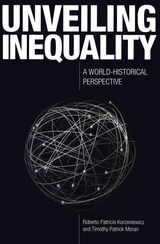 Unveiling Inequality: A World-Historical Perspective
Roberto Patricio Korzeniewicz
Russell Sage Foundation, 2009 Despite the vast expansion of global markets during the last half of the twentieth century, social science still most often examines and measures inequality and social mobility within individual nations rather than across national boundaries. Every country has both rich and poor populations making demands—via institutions, political processes, or even conflict—on how their resources will be distributed. But shifts in inequality in one country can precipitate accompanying shifts in another. Unveiling Inequality authors Roberto Patricio Korzeniewicz and Timothy Patrick Moran make the case that within-country analyses alone have not adequately illuminated our understanding of global stratification. The authors present a comprehensive new framework that moves beyond national boundaries to analyze economic inequality and social mobility on a global scale and from a historical perspective. Assembling data on patterns of inequality in more than ninety-six countries, Unveiling Inequality reframes the relationship between globalization and inequality within and between nations. Korzeniewicz and Moran first examine two different historical patterns—"High Inequality Equilibrium" and "Low Inequality Equilibrium"—and question whether increasing equality, democracy, and economic growth are inextricably linked as nations modernize. Inequality is best understood as a complex set of relational interactions that unfold globally over time. So the same institutional mechanisms that have historically reduced inequality within some nations have also often accentuated the selective exclusion of populations from poorer countries and enhanced high inequality equilibrium between nations. National identity and citizenship are the fundamental contemporary bases of stratification and inequality in the world, the authors conclude. Drawing on these insights, the book recasts patterns of mobility within global stratification. The authors detail the three principal paths available for social mobility from a global perspective: within-country mobility, mobility through national economic growth, and mobility through migration. Korzeniewicz and Moran provide strong evidence that the nation where we are born is the single greatest deter-mining factor of how we will live. Too much sociological literature on inequality focuses on the plight of "have-nots" in wealthy nations who have more opportunity for social mobility than even the average individual in nations perennially at the bottom of the wealth distribution scale. Unveiling Inequality represents a major paradigm shift in thinking about social inequality and a clarion call to reorient discussions of economic justice in world-historical global terms.
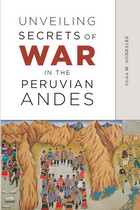 Unveiling Secrets of War in the Peruvian Andes
Olga M. González
University of Chicago Press, 2011 The Maoist guerrilla group Shining Path launched its violent campaign against the government in Peru’s Ayacucho region in 1980. When the military and counterinsurgency police forces were dispatched to oppose the insurrection, the violence quickly escalated. The peasant community of Sarhua was at the epicenter of the conflict, and this small village is the focus of Unveiling Secrets of War in the Peruvian Andes. There, nearly a decade after the event, Olga M. González follows the tangled thread of a public secret: the disappearance of Narciso Huicho, the man blamed for plunging Sarhua into a conflict that would sunder the community for years.
Drawing on extensive fieldwork and a novel use of a cycle of paintings, González examines the relationship between secrecy and memory. Her attention to the gaps and silences within both the Sarhuinos’ oral histories and the paintings reveals the pervasive reality of secrecy for people who have endured episodes of intense violence. González conveys how public secrets turn the process of unmasking into a complex mode of truth telling. Ultimately, public secrecy is an intricate way of “remembering to forget” that establishes a normative truth that makes life livable in the aftermath of a civil war.
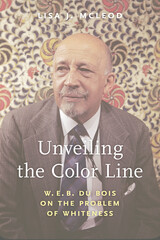 Unveiling the Color Line: W. E. B. Du Bois on the Problem of Whiteness
Lisa J. McLeod
University of Massachusetts Press, 2024 In The Souls of Black Folk, W. E. B. Du Bois brilliantly details the African American experience. Yet the renowned sociologist was also an astute chronicler of white people, particularly their racism. As Unveiling the Color Line demonstrates, Du Bois’s trenchant analysis of whiteness and white supremacy began in his earliest work—his 1890 speech on Jefferson Davis—and continued in every major book he published in his more than sixty-year career, up to The Black Flame Trilogy.
Lisa J. McLeod traces the development of Du Bois’s conception of whiteness, and the racism inherent to it, as an all-encompassing problem, whether predicated on ignorance, moral failure, or the inability to recognize the humanity in other people. In clear, elegant prose, McLeod investigates Du Bois’s complex and nuanced thinking, putting his insights into dialogue with contemporary racial theorists to demonstrate his continuing value to present-day critical thought and activism.
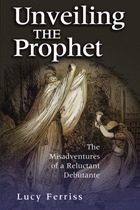 Unveiling the Prophet: The Misadventures of a Reluctant Debutante
Lucy Ferriss
University of Missouri Press, 2005 In the autumn of 1972, Lucy Ferriss, then a college student in California, was preparing for the Veiled Prophet Ball at which she was to be presented to St. Louis society. Once the largest cotillion in the country, the invitation-only ball was unique among society events not only for the legend and mystery surrounding its namesake but also for its setting in a public, taxpayer-funded arena and for its accompanying parade. In the late sixties and early seventies, with racial tensions at a boiling point and urban renewal failing, the exclusively white male Christian membership of the Veiled Prophet Society and the Veiled Prophet’s costume—eerily reminiscent of a Klansman’s—attracted the ire of ACTION, a militant civil rights group. Before the 1972 ball, ACTION founder Percy Green, himself a native St. Louisan, sent letters inviting all of the debutantes to join in the protest: “ACTION understands that you hate being part of this upcoming white racist Veiled Prophet Ball as we hate you being forced to participate by your parents.” The letter didn’t persuade Ferriss, who felt she owed it to her father to participate. She wrote back: “Don’t you have bigger fish to fry? This is just a stupid party. We are slaughtering people in Southeast Asia. Let this one go. It will fall of its own weight.” But ACTION did not let this one go. On the night of the ball, as Ferriss bowed in obeisance to the crowd and took her place on the stage, a woman swooped down onto the stage and knocked off the Veiled Prophet’s hat and veil, revealing his identity. In the era of monumental Vietnam War protests, unmasking a wealthy and powerful old man might have seemed a feeble act of revolution, but this act forever changed the Veiled Prophet Ball in St. Louis. Ferriss’s memoir blends regional history, national history, and her own personal history to create a fast-paced narrative that follows two time lines. One is the dramatic and often funny story of her attending the exclusive ball, having eaten half a pan of marijuana brownies beforehand, with a Jewish hippie who smelled of “unwashed beard.” The other story takes place thirty years later as Ferriss returns to St. Louis from her home on the East Coast to track down some of ACTION’s principal activists as well as key figures in the Veiled Prophet Society. Over the course of this engaging story, Ferriss undergoes her own unveiling, as she discusses and comes to terms with her family; the past, present, and future of St. Louis; and the cultural politics that frame young women’s entrance into society.
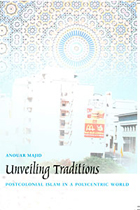 Unveiling Traditions: Postcolonial Islam in a Polycentric World
Anouar Majid
Duke University Press, 2000 In Unveiling Traditions Anouar Majid issues a challenge to the West to reimagine Islam as a progressive world culture and a participant in the building of a multicultural and more egalitarian world civilization. From within the highly secularized space it inhabits, a space endemically suspicious of religion, the West must find a way, writes Majid, to embrace Islamic societies as partners in building a more inclusive and culturally diverse global community.
Majid moves beyond Edward Said’s unmasking of orientalism in the West to examine the intellectual assumptions that have prevented a more nuanced understanding of Islam’s legacies. In addition to questioning the pervasive logic that assumes the “naturalness” of European social and political organizations, he argues that it is capitalism that has intensified cultural misunderstanding and created global tensions. Besides examining the resiliency of orientalism, the author critically examines the ideologies of nationalism and colonialist categories that have redefined the identity of Muslims (especially Arabs and Africans) in the modern age and totally remapped their cultural geographies. Majid is aware of the need for Muslims to rethink their own assumptions. Addressing the crisis in Arab-Muslim thought caused by a desire to simultaneously “catch up” with the West and also preserve Muslim cultural authenticity, he challenges Arab and Muslim intellectuals to imagine a post-capitalist, post-Eurocentric future. Critical of Islamic patriarchal practices and capitalist hegemony, Majid contends that Muslim feminists have come closest to theorizing a notion of emancipation that rescues Islam from patriarchal domination and resists Eurocentric prejudices.
Majid’s timely appeal for a progressive, multicultural dialogue that would pave the way to a polycentric world will interest students and scholars of postcolonial, cultural, Islamic, and Marxist studies.
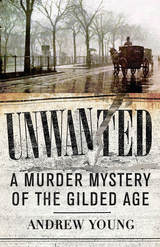 Unwanted: A Murder Mystery of the Gilded Age
Andrew Young
Westholme Publishing, 2016 A Sensational Crime and Trial that Confronted Racism, Sexism, and Privilege as America Took to the World Stage
On the foggy, cold morning of February 1, 1896, a boy came upon what he thought was a pile of clothes. It was soon discovered to be the headless body of a young woman, brutally butchered and discarded. She was found just across the river from one of the largest cities in the country, Cincinnati, Ohio. Soon the authorities, the newspapers, and the public were obsessed with finding the poor girl’s identity and killer. Misinformation and rumor spread wildly around the case and led authorities down countless wrong paths. Initially, it appeared the crime would go unsolved. An autopsy, however, revealed that the victim was four months pregnant, presenting a possible motive. It would take the hard work of a sheriff, two detectives, and the unlikely dedication of a shoe dealer to find out who the girl was; and once she had been identified, the case came together. Within a short time the police believed they had her killers—a handsome and charismatic dental student and his roommate—and enough evidence to convict them of first-degree murder. While the suspects seemed to implicate themselves, the police never got a clear answer as to what exactly happened to the girl and they were never able to find her lost head—despite the recovery of a suspicious empty valise.
Centering his riveting new book, Unwanted: A Murder Mystery of the Gilded Age, around this shocking case and how it was solved, historian Andrew Young re-creates late nineteenth- century America, where Coca-Cola in bottles, newfangled movie houses, the Gibson Girl, and ragtime music played alongside prostitution, temperance, racism, homelessness, the rise of corporations, and the women’s rights movement. While the case inspired the sensationalized pulp novel Headless Horror, songs warning girls against falling in love with dangerous men, ghost stories, and the eerie practice of random pennies left heads up on a worn gravestone, the story of an unwanted young woman captures the contradictions of the Gilded Age as America stepped into a new century, and toward a modern age.
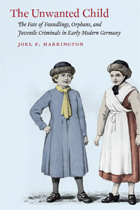 The Unwanted Child: The Fate of Foundlings, Orphans, and Juvenile Criminals in Early Modern Germany
Joel F. Harrington
University of Chicago Press, 2009 The baby abandoned on the doorstep is a phenomenon that has virtually disappeared from our experience, but in the early modern world, unwanted children were a very real problem for parents, government officials, and society. The Unwanted Child skillfully recreates sixteenth-century Nuremberg to explore what befell abandoned, neglected, abused, or delinquent children in this critical period.
Joel F. Harrington tackles this question by focusing on the stories of five individuals. In vivid and poignant detail, he recounts the experiences of an unmarried mother-to-be, a roaming mercenary who drifts in and out of his children’s lives, a civic leader handling the government’s response to problems arising from unwanted children, a homeless teenager turned prolific thief, and orphaned twins who enter state care at the age of nine. Braiding together these compelling portraits, Harrington uncovers and analyzes the key elements that link them, including the impact of war and the vital importance of informal networks among women. From the harrowing to the inspiring, The Unwanted Child paints a gripping picture of life on the streets five centuries ago.
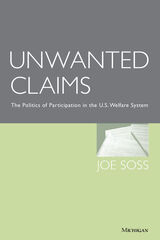 Unwanted Claims: The Politics of Participation in the U.S. Welfare System
Joe Soss
University of Michigan Press, 2002 Large numbers of Americans claim public resources and participate in direct relationships with government through the diversity of welfare programs found in the United States. Most public debates ignore the political importance of these activities, focusing instead on the economic and moral questions raised by welfare policy. By contrast, Unwanted Claims asks how different types of welfare programs, such as social insurance and public assistance, affect the lives of ordinary citizens. The author investigates why citizens turn to welfare programs, how they view the welfare system, and what they learn from experiences in welfare programs about themselves and government. The analysis shows that the welfare system plays a surprisingly important and sometimes contradictory role in modern political life. Depending on their designs, welfare programs can draw citizens into a more inclusive and vibrant democracy or treat them in ways that reinforce their social and political marginality.
Unwanted Claims is a work of political sociology that provides an illuminating account of political life in the U.S. welfare system that should be of interest to scholars, students, policy practitioners, and the general public. Written in a style that minimizes technical jargon, avoids complex statistical presentations, and makes extensive use of clients' own descriptions of their experiences, beliefs, and actions, it offers an accessible and humanizing portrait of welfare participation that challenges conventional wisdom and raises important questions about poverty, welfare, and democracy in America.
Joe Soss is Assistant Professor of Government, The American University.
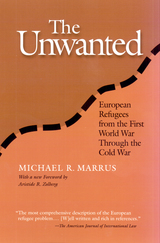 The Unwanted: European Refugees From 1St World War
Michael Marrus
Temple University Press, 2001 There have always been homeless people, but only in the twentieth century have refugees become an important part of international politics, seriously affecting relations between states. Since the 1880s, the number of displaced persons has climbed astronomically, with people scattered over vaster distances and for longer periods of time than ever before. Tracing the emergence of this new variety of collective alienation, The Unwanted covers everything from the late nineteenth century to the present, encompassing the Armenian refugees, the Jews, the Spanish Civil War émigrés, the Cold War refugees in flight from Soviet states, and much more. Marrus shows not only the astounding dimensions of the subject but also depicts the shocking apathy and antipathy of the international community toward the homeless. He also examines the impact of refugee movements on Great Power diplomacy and considers the evolution of agencies designed to assist refugees, noting outstanding successes and failures.
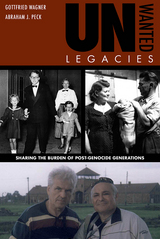 Unwanted Legacies: Sharing the Burden of Post-Genocide Generations
Gottfried Wagner and Abraham J. Peck
Texas Tech University Press, 2014 How does a society reconcile itself in a post-genocide era? How can generations of those whose families were victims and victimizers break the cycle of hate, mistrust, shame, and guilt that characterizes their relationship? What family reactions do they face as they seek to begin the act of sitting across from each other and facing their legacies?
For more than two decades, Gottfried Wagner, great-grandson of composer Richard Wagner, whose music inspired Adolf Hitler and whose family helped the Nazis rise to power, and Abraham J. Peck, the son of two survivors whose entire families were murdered in the Holocaust, have been engaged in a unique and often torturous discussion on the German-Jewish relationship after the Shoah. That discussion has focused on their family histories and on the myths and realities of the relationship between Germans and Jews since the beginning of the nineteenth century and the process of reshaping that relationship for those Germans and Jews born after 1945. Rejecting the notion that they are either victims or perpetrators, both authors examine the “unwanted legacies” they inherited and have had to confront and overcome.
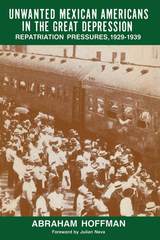 Unwanted Mexican Americans in the Great Depression: Repatriation Pressures, 1929–1939
Abraham Hoffman; Foreword by Julian Nava
University of Arizona Press, 1973 Discouraged by widespread unemployment and alarmed by anti-Mexican sentiment, nearly five hundred thousand Mexican Americans returned to Mexico between 1929 and 1939. Historian Abraham Hoffman captures the despair of these thousands of people of Mexican descent—including those with U.S. citizenship—who were actively coerced into leaving the country.
Prior to 1931, many Mexican Americans left the United States voluntarily, prompted by homesickness, unemployment, and the Mexican government’s offer of free small land parcels. As the Great Depression deepened, repatriation pressures increased. Anglo groups lobbied for laws that excluded aliens from jobs and welfare benefits. Many businessmen, government officials, and social workers believed that removing Mexican Americans would open up jobs for U.S. citizens and alleviate some of the burden placed on relief agencies.
The Department of Labor’s federal deportation drive, launched in 1931, created an atmosphere of fear and tension in Mexican American communities. Immigration agents conducted surprise searches for people who had entered the country illegally, and Mexicans who had crossed the border before restrictive legislation was passed became prime targets of the deportation campaign.
Welfare agencies throughout the United States organized repatriation programs. The Los Angeles County Welfare Bureau, with the most extensive program, was responsible for the removal of more than thirteen thousand Mexican Americans. A few well-publicized deportations had frightened Mexicans who were unsure of their immigration status. Many chose repatriation over possible deportation.
Using much archival material and many previously unpublished government documents, Hoffman focuses on the repatriation experience in Los Angeles. The city’s large Mexican American population provides an excellent case study of the entire movement. He also surveys the process of Mexican repatriation throughout the entire United States.
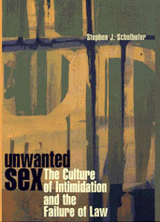 Unwanted Sex: The Culture of Intimidation and the Failure of Law
Stephen J. Schulhofer
Harvard University Press, 1981 Despite three decades of intense scrutiny and repeated attempts at ambitious reform, our laws against rape and sexual harassment still fail to protect women from sexual overreaching and abuse. What went wrong? In this original, provocative, and enlightening work, Stephen Schulhofer, a distinguished scholar in criminal law, shows the need to refocus our laws against rape and to create a new system of legal safeguards against interference with sexual autonomy.
Our laws provide comprehensive protection for property rights, labor, and other important interests, but sexual autonomy—the right to choose freely whether and when to be sexually intimate with another person—is devalued and ignored. With vivid examples, including stranger assaults, date rapes, and sexual encounters between job supervisors and subordinates, teachers and students, doctors and patients, lawyers and clients, Schulhofer shows that recent reforms of rape and sexual harassment law are overrated and inadequate. From the excessive degree of force necessary for an aggressive action to be defined as rape, to the gray areas in which coercion and exploitation can be used to elicit a false but legally valid “consent,” Schulhofer offers a clear analysis of the limits of current standards. His proposals for a radically different approach hold the promise of genuine respect and effective protection for the sexual autonomy of both women and men. It is an ambitious yet sensible vision, committed to allowing willing partners to seek consensual relationships, while fully protecting each person’s right to refuse sexual encounters that are not genuinely desired.
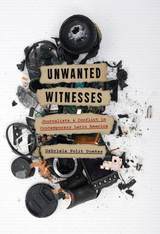 Unwanted Witnesses: Journalists and Conflict in Contemporary Latin America
Gabriela Polit Dueñas
University of Pittsburgh Press, 2019 Gabriela Polit Dueñas analyzes the work of five narrative journalists from three countries. Marcela Turati, Daniela Rea, and Sandra Rodriguez from Mexico, Patricia Nieto from Colombia, and María Eugenia Ludueña from Argentina produce compelling literary works, but also work under dangerous, intense conditions. What drives and shapes their stories are their affective responses to the events and people they cover. The book offers an insightful analysis of the emotional challenges, the stress and traumatic conditions journalists face when reporting on the region’s most pressing problems. It combines ethnographic observations of the journalists’ work, textual analysis, and a theoretical reflection on the ethical dilemmas journalists confront on a daily basis. Unwanted Witnesses puts forward a necessary discussion about the place contemporary journalists occupy in the field of production, and how the risks they run speak directly about the limits of our democracies.
Unwatchable
Baer, Nicholas
Rutgers University Press, 2019 We all have images that we find unwatchable, whether for ethical, political, or sensory and affective reasons. From news coverage of terror attacks to viral videos of police brutality, and from graphic horror films to transgressive artworks, many of the images in our media culture might strike us as unsuitable for viewing. Yet what does it mean to proclaim something “unwatchable”: disturbing, revolting, poor, tedious, or literally inaccessible?
With over 50 original essays by leading scholars, artists, critics, and curators, this is the first book to trace the “unwatchable” across our contemporary media environment, in which viewers encounter difficult content on various screens and platforms. Appealing to a broad academic and general readership, the volume offers multidisciplinary approaches to the vast array of troubling images that circulate in global visual culture.
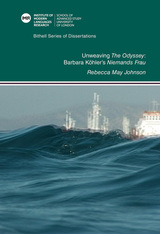 Unweaving The Odyssey: Barbara Köhler’s Niemands Frau
Rebecca May Johnson
University of London Press, 2019 How has classical literature shaped culture, knowledge, the thinkable? What happens when a canonical text is translated from his gaze into her, and their, gaze(s)? These are some of the questions Barbara Köhler pursues in her modern epic poem, Niemands Frau (2007), her response to The Odyssey. Translated and re-imagined over the centuries, Homer’s tale found critical resonance in intellectual traditions from Christianity through to Post-Colonialism. Odysseus has been viewed as an ideal, reputedly using reason rather than force to dominate, but in Niemands Frau Köhler takes inspiration from Penelope to weave a text that challenges the rationalist and patriarchal epistemological traditions to which the Odyssey contributes. Readers are invited to cast a critical and deconstructive look back as Köhler unweaves histories of misused power and patriarchy and reweaves a critically alert present, gesturing to a future when life is what counts. This study presents the first detailed analysis of Köhler’s poem, tracing the ways in which she re-invents Homer’s text, from the claim that Niemands Frau is a form of ‘translation’ to its complex re-workings of the Homeric figures Penelope, Helen of Troy, Tiresias and Odysseus. Rebecca May Johnson completed her PhD at University College London before joining Newcastle University, where she teaches literature and creative writing and is writing a book of creative non-fiction about gender, cooking and researching food in post-war British women’s writing and cookery books.
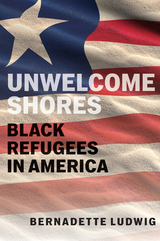 Unwelcome Shores: Black Refugees in America
Bernadette Ludwig
Rutgers University Press, 2026 Unwelcome Shores is an ethnographic study of the Liberian refugee community in Staten Island, New York, home to the largest per capita concentration of Liberians in the U.S., that sheds light on the racialization of Black refugees and the racism they have experienced at every step of their migration journey. In this pioneering study, sociologist Bernadette Ludwig explores how Liberians have responded to such racist exclusions, noting how members of this community reject the informal refugee label once they are resettled in the United States. Liberian migrants often view the label as a liability since the larger general public, the media, and the U.S. government tend to regard Black refugees as an economic and social burden unworthy of assistance. Indeed, Black refugees’ humanity is often ignored, Ludwig contends, in favor of overemphasizing presumed barbaric violence, endemic wars, cultural backwardness, and diseases. By detailing the lack of aid and support for Black refugees and describing how Liberian refugees in particular have had to overcome various struggles and barriers in coming to the U.S. and while living here, Unwelcome Shores highlights the overarching role of race and anti-Black racism in American society.
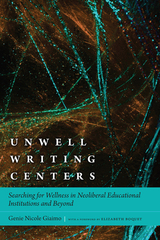 Unwell Writing Centers: Searching for Wellness in Neoliberal Educational Institutions and Beyond
Genie Nicole Giaimo
Utah State University Press, 2022 Unwell Writing Centers focuses on the inroads the wellness industry has made into higher education. Following graduate and undergraduate writing tutors during a particularly stressful period (2016–2019), Genie Nicole Giaimo examines how top-down and bottom-up wellness interventions are received and taken up by workers. Engaging sociocultural research on how workers react to and experience workplace conflict, Giaimo demonstrates the kinds of interventions welcomed by workers as well as those that fall flat, including the “easy” fixes to workplace issues that institutions provide in lieu of meaningful and community-based support.
The book is broken into sections based on journeying: searching for wellness, finding wellness, and imagining a “well” future that includes a sustainable model of writing center work. Each chapter begins with a personal narrative about wellness issues in writing centers, including the author’s experiences in and responses to local emergencies. She shares findings from a longitudinal assessment study on non-institutional interventions in writing centers and provides resources for administrators to create more ethical "well" writing centers. The book also includes an appendix of training documents, emergency planning documents, and several wellness-specific interventions developed from anti-racist, anti-neoliberal, and organizational theories.
Establishing the need for a field-specific response to the austerity-minded eruption of wellness-focused interventions in higher education, Unwell Writing Centers is a critical text for graduate students and new directors that can easily be applied in workplaces in and outside of higher education.
 Unwilling Germans: The Goldhagen Debate
Robert R. Shandley
University of Minnesota Press, 1998 A comprehensive overview of the controversy surrounding Hitler’s Willing Executioners. Few if any books of the past fifty years have moved a broad section of the German public to think about their country’s Nazi past as has Daniel Jonah Goldhagen’s Hitler’s Willing Executioners. The main argument of his book is that Germans committed the unthinkable acts of the Holocaust not because they were forced to but out of a deeply held conviction that killing Jews was morally just. Unwilling Germans? traces the intense and varied reception of a book that has created more heated debate than any other treatment of Germany’s genocidal past. When Goldhagen’s book first appeared, it was almost universally dismissed by journalists and historians alike. However, following a book tour in Germany, Goldhagen started winning over many of his ardent detractors and finding a young, receptive audience. Although German scholars reacted to Goldhagen and his argument with outrage and dismissal, ironically the German public was mesmerized by both the book and Goldhagen himself.Unwilling Germans? reprints articles that originally appeared in German newspapers, the popular press, and journals, as well as offering original essays. Among the writers whose work is represented are historians, journalists, political scientists, and literary critics, including Jürgen Habermas and Klaus Theweleit. The book traces the initial reactions in Germany to the debate surrounding the U.S. publication of the book, the subsequent reviews and reactions upon the publication of the German translation, and recent commentary by Goldhagen and the American historian Christopher Browning. A unique and fascinating collection, Unwilling Germans? will help to sort out the confusing nature of the response to the “Goldhagen Debate,” and shed light on both Germany’s continuing process of coming to terms with its Nazi past and the resonances of that debate in the United States.ISBN 0-8166-3100-X Cloth $44.95xxISBN 0-8166-3101-8 Paper $17.95224 pages 5 7/8 x 9 JuneTranslation inquiries: University of Minnesota Press
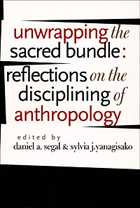 Unwrapping the Sacred Bundle: Reflections on the Disciplining of Anthropology
Daniel A. Segal and Sylvia J. Yanagisako, eds.
Duke University Press, 2005 Lively, forceful, and impassioned, Unwrapping the Sacred Bundle is a major intervention in debates about the configuration of the discipline of anthropology. In the essays brought together in this provocative collection, prominent anthropologists consider the effects of and alternatives to the standard definition of the discipline as a “holistic” study of humanity based on the integration of the four fields of archaeology, biological anthropology, sociocultural anthropology, and linguistic anthropology. Editors Daniel A. Segal and Sylvia J. Yanagisako provide a powerful introduction to the volume. Unabashed in their criticism of the four-field structure, they argue that North American anthropology is tainted by its roots in nineteenth-century social evolutionary thought. The essayists consider the complex state of anthropology, its relation to other disciplines and the public sphere beyond academia, the significance of the convergence of linguistic and cultural anthropology, and whether or not anthropology is the best home for archaeology. While the contributors are not in full agreement with one another, they all critique “official” definitions of anthropology as having a fixed, four-field core. The editors are keenly aware that anthropology is too protean to be remade along the lines of any master plan, and this volume does not offer one. It does open discussions of anthropology’s institutional structure to all possible outcomes, including the refashioning of the discipline as it now exists. Contributors. James Clifford, Ian Hodder, Rena Lederman, Daniel A. Segal, Michael Silverstein, Sylvia J. Yanagisako
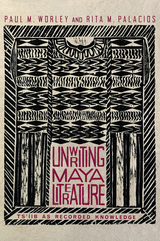 Unwriting Maya Literature: Ts'íib as Recorded Knowledge
Paul M. Worley and Rita M. Palacios
University of Arizona Press, 2019 Unwriting Maya Literature provides an important decolonial framework for reading Maya texts that builds on the work of Maya authors and intellectuals such as Q’anjob’al Gaspar Pedro González and Kaqchikel Irma Otzoy. Paul M. Worley and Rita M. Palacios privilege the Maya category ts’íib over constructions of the literary in order to reveal how Maya peoples themselves conceive of artistic creation. This offers a decolonial departure from theoretical approaches that remain situated within alphabetic Maya linguistic and literary creation.
As ts’íib refers to a broad range of artistic production from painted codices and textiles to works composed in Latin script, as well as plastic arts, the authors argue that texts by contemporary Maya writers must be read as dialoguing with a multimodal Indigenous understanding of text. In other words, ts’íib is an alternative to understanding “writing” that does not stand in opposition to but rather fully encompasses alphabetic writing, placing it alongside and in dialogue with a number of other forms of recorded knowledge. This shift in focus allows for a critical reexamination of the role that weaving and bodily performance play in these literatures, as well as for a nuanced understanding of how Maya writers articulate decolonial Maya aesthetics in their works.
Unwriting Maya Literature places contemporary Maya literatures within a context that is situated in Indigenous ways of knowing and being. Through ts’íib, the authors propose an alternative to traditional analysis of Maya cultural production that allows critics, students, and admirers to respectfully interact with the texts and their authors. Unwriting Maya Literature offers critical praxis for understanding Mesoamerican works that encompass non-Western ways of reading and creating texts.
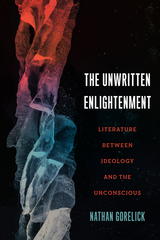 The Unwritten Enlightenment: Literature between Ideology and the Unconscious
Nathan Gorelick
Northwestern University Press, 2024 Unveiling the fantasies that drove the Enlightenment and created modern literature
Nathan Gorelick’s The Unwritten Enlightenment: Literature between Ideology and the Unconscious traces the relations between literary criticism and psychoanalysis to their shared origins in the Enlightenment era’s novels and novelistic discourse, where the period’s efforts to invent new notions of subjectivity and individualism are most apparent. Gorelick shows how modern concepts of literature and the unconscious were generated in response to these efforts and by an ethical concern for what the language of the Enlightenment excludes, represses, or struggles to erase. Troubling the idea of the Enlightenment on its own terms, subverting its supposed authority from within, Gorelick thus reveals the workings of unconscious fantasy at the foundations of our contemporary political realities. The Unwritten Enlightenment makes clear that to criticize the Enlightenment’s deficiencies, ambiguities, and legacies of violence without regard for the unconscious fantasies that drive them risks reproducing the very patterns of thought, action, and imagination that the Enlightenment novel already unsettles.
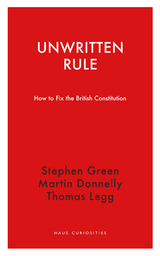 Unwritten Rule: How to Fix the British Constitution
Stephen Green, Thomas Legg, and Martin Donnelly
Haus Publishing, 2021 A consideration of how to repair the British state.
Not since Ireland broke away from the United Kingdom has the British state been so fragile. Northern Ireland now operates under trading rules that are legally separate from the rest of the nation. In Wales, support for independence is running at a historical high, and Scotland is more conscious than ever of its individual identity and has aspirations for a European future. With public trust and confidence in government at record lows, the United Kingdom faces a crisis that can only be repaired by a new constitutional settlement. Unwritten Rule calls for a radical realignment, embracing a federal approach that would accommodate devolution as the best way of bringing about a successful and diverse national life, increasing democratic control over local and national decision-making, and modernizing national political structures.
 Unwritten Verities: The Making of England's Vernacular Legal Culture, 1463-1549
Sebastian Sobecki
University of Notre Dame Press, 2015 In Unwritten Verities: The Making of England's Vernacular Legal Culture, 1463-1549, Sebastian Sobecki argues that the commitment by English common law to an unwritten tradition, along with its association with Lancastrian political ideas of consensual government, generated a vernacular legal culture on the eve of the Reformation that challenged the centralizing ambitions of Tudor monarchs, the scriptural literalism of ardent Protestants, and the Latinity of English humanists.
Sobecki identifies the widespread dissemination of legal books and William Caxton's printing of the Statutes of Henry VII as crucial events in the creation of a vernacular legal culture. He reveals the impact of medieval concepts of language, governance, and unwritten authority on such sixteenth-century humanists, reformers, playwrights, and legal writers as John Rastell, Thomas Elyot, Christopher St. German, Edmund Dudley, John Heywood, and Thomas Starkey. Unwritten Verities argues that three significant developments contributed to the emergence of a vernacular legal culture in fifteenth-century England: medieval literary theories of translation, a Lancastrian legacy of conciliar government, and an adherence to unwritten tradition. This vernacular legal culture, in turn, challenged the textual practices of English humanism and the early Reformation in the following century. Ultimately, the spread of vernacular law books found a response in the popular rebellions of 1549, at the helm of which often stood petitioners trained in legal writing. Informed by new developments in medieval literature and early modern social history, Unwritten Verities sheds new light on law printing, John Fortescue’s constitutional thought, ideas of the commonwealth, and the role of French in medieval and Tudor England.
"Sebastian Sobecki’s lucid and lively study seeks to address a major lacuna in the current understanding of English vernacularity from the fourteenth to the sixteenth centuries: English common law. This huge body of knowledge and practice, written and unwritten, awaits focused attention from historians and literary historians, particularly in the light of new scholarship on Anglo-French vernacularity in this period. Sobecki’s ambitious, original, and deeply considered account includes such figures as John Fortescue, John Rastell, and Christopher St. German and their investments in and influence on early Tudor commonality. The range and intelligence of his approach to this material, his ability to think beyond period and disciplinary boundaries, and his alertness to the complex bilingual condition of English intellectuals add a compelling dimension to the debate on the linguistic and political shapes of insular identity in these centuries." —Ardis Butterfield, John M. Schiff Professor of English, Yale University
"Unwritten Verities proposes an arresting and original thesis: that the English common law’s commitment to an oral tradition permitted it, on the eve of the Reformation, to become a transformative repository for notions of consensual government, of the inwardness of spiritual jurisdiction, and of the preeminence of English. This elegantly written and engagingly controversial book will stimulate literary scholars, legal historians, and historians of political thought to look afresh at some of their fundamental assumptions about English literature, politics, and the law at the turn of the fifteenth century." —Lorna Hutson, Berry Professor of English Literature, University of St. Andrews
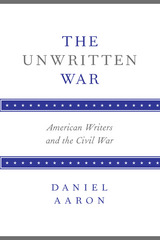 The Unwritten War: American Writers and the Civil War
Daniel Aaron
University of Alabama Press, 2003 In The Unwritten War, Daniel Aaron examines the literary output of American writers—major and minor—who treated the Civil War in their works. He seeks to understand why this devastating and defining military conflict has failed to produce more literature of a notably high and lasting order, why there is still no "masterpiece" of Civil War fiction. In his portraits and analyses of 19th- and some 20th-century writers, Aaron distinguishes between those who dealt with the war only marginally—Henry Adams, Henry James, William Dean Howells, Mark Twain-and those few who sounded the war's tragic import—Herman Melville, Walt Whitman, and William Faulkner. He explores the extent to which the war changed the direction of American literature and how deeply it entered the consciousness of American writers. Aaron also considers how writers, especially those from the South, discerned the war's moral and historical implications. The Unwritten War was originally published by Alfred A. Knopf in 1973. The New Republic declared, [This book's] major contribution will no doubt be to American literary history. In this respect it resembles Edmund Wilson's Patriotic Gore and is certain to become an indispensable guide for anyone who wants to explore the letters, diaries, journals, essays, novels, short stories, poems-but apparently no plays-which constitute Civil War literature. The mass of material is presented in a systematic, luminous, and useful way.
Up
Ronald Sukenick
University of Alabama Press, 2000
When Ronald Sukenick's first novel, UP, came out in 1968, post-modernism, avant-pop and autofiction hadn't been invented yet. UP invented them. Ronald Sukenick's ten subsequent books are typically twenty or thirty years ahead of their time, and UP is more timely than ever. Ronald Sukenick is himself the main character of his book, in which he glides undisturbed from present to future, from reality to fantasy. Some of the time he's an adolescent Brooklynite, at other times a part-time English teacher, a struggling writer living in a Lower East Side tenement, or a fantasist deftly moving in and out of numerous alter egos. His comings and goings produce a stunning tour de force of a novel—mutinous, violent, sexy, sad, and above all, funny.
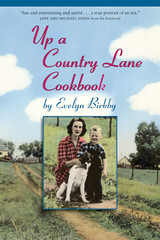 Up a Country Lane Cookbook
Evelyn Birkby
University of Iowa Press, 1993 What can Evelyn Birkby possibly do to follow up the success of Neighboring on the Air: Cooking with the KMA Radio Homemakers? She can do what she has done in writing Up a Country Lane Cookbook. For forty-three years she has written a column entitled "Up a Country Lane" for the Shenandoah Evening Sentinel. Now she has chosen the best recipes from her column and interspersed them with a wealth of stories of rural life in the 1940s and 1950s, supplemented by a generous offering of vintage photographs. She has created a book that encompasses lost time. With chapters on "The Garden," "Grocery Stores and Lockers," "Planting," and "Saturday Night in Town," to name a few, Up a Country Lane Cookbook recalls the noble simplicity of a life that has all but vanished. This is not to say that farm life in the forties and fifties was idyllic. As Birkby writes, "Underneath the pastoral exterior were threats of storms, droughts, ruined crops, low prices, sickness, and accidents." Following the Second World War, many soldiers returned to mid-America and a life of farming. From her vantage point as a farm wife living in Mill Creek Valley in southwestern Iowa, Birkby observed the changes that accompanied improved roads, telephone service, and the easy availability of electricity. Her observations have been carefully recorded in her newspaper column, read by thousands of rural Iowans. Up a Country Lane Cookbook is, then, much more than a cookbook. It is an evocation of a time in all its wonder and complexity which should be read by everyone from Evelyn Birkby's nearest neighbor in Mill Creek Valley to the city slicker seeking an education. Cook a meal of Plum-Glazed Baked Chicken, Elegant Peas, Creamed Cabbage, and Seven-Grain Bread, then finish it off with Frosted Ginger Creams with Fluffy Frosting. While the chicken is baking, read Evelyn's stories and think about the world the way it was.
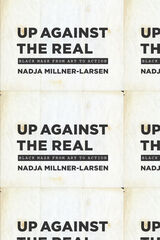 Up Against the Real: Black Mask from Art to Action
Nadja Millner-Larsen
University of Chicago Press, 2023 A history of 1960s activist art group Black Mask.
With Up Against the Real, Nadja Millner-Larsen offers the first comprehensive study of the group Black Mask and its acrimonious relationship to the New York art world of the 1960s. Cited as pioneers of now-common protest aesthetics, the group’s members employed incendiary modes of direct action against racism, colonialism, and the museum system. They shut down the Museum of Modern Art, fired blanks during a poetry reading, stormed the Pentagon in an antiwar protest, sprayed cow’s blood at the secretary of state, and dumped garbage into the fountain at Lincoln Center. Black Mask published a Dadaist broadside until 1968, when it changed its name to Up Against the Wall Motherfucker (after line in a poem by Amiri Baraka) and came to classify itself as “a street gang with analysis.” American activist Abbie Hoffman described the group as “the middle-class nightmare . . . an anti-media phenomenon simply because their name could not be printed.”
Up Against the Real examines how and why the group ultimately rejected art in favor of what its members deemed “real” political action. Exploring this notorious example of cultural activism that rose from the ruins of the avant-garde, Millner-Larsen makes a critical intervention in our understanding of political art.
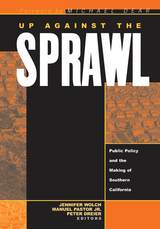 Up Against The Sprawl: Public Policy And The Making Of Southern California
Jennifer Wolch
University of Minnesota Press, 2004 Los Angeles's experience in managing urban growth and change America's first truly twenty-first-century metropolis, Los Angeles is often depicted as diverse, fragmented, polarized, and ungovernable, a city without a unifying geographic center or civic culture. The sprawling evolution of the city and its infamous problems—traffic, pollution, growing inequality—are usually attributed to a Wild West version of capitalism—the triumph of an unregulated free market over comprehensive urban planning. But market choices and lack of planning did not set the terrain of Southern California: Los Angeles has been profoundly shaped by a wide range of local, state, and federal public policies and programs. Up Against the Sprawl details how governmental policies and public agencies have dictated many aspects of the region’s growth: infrastructure, transportation, housing, immigration, finances, civic and regional administration, the environment. The authors also argue that since public policy set the landscape, it can help forge the future. They explore countermovements by progressive activists to use innovative policies—from smart growth initiatives to the actions of living wage advocates—for greater social, economic, and environmental justice. This book is a major contribution to our understanding of past and present urban processes and policy, and highlights practical lessons for urban and regional policy makers and activists in Los Angeles and beyond.Contributors: Carolyn B. Aldana, California State U, San Bernadino; Carol S. Armstrong; Michael Dear, U of Southern California; Gary Dymski, U of California Riverside; Steven P. Erie, USC; Gregory Freeman; William Fulton; Elizabeth Gearin, USC; Genevieve Giuliano, USC; Pascale Joassart-Marcelli, U of Massachusetts, Boston; Enrico A. Marcelli; Myra A. Marks, Loyola Marymount U; Juliet Musso, USC; Stephanie Pincetl, USC; Laura Pulido; Christine M. Ryan; John P. Wilson.
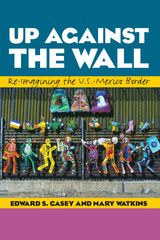 Up Against the Wall: Re-Imagining the U.S.-Mexico Border
By Edward S. Casey and Mary Watkins
University of Texas Press, 2014 Using the U.S. wall at the border with Mexico as a focal point, two experts examine the global surge of economic and environmental refugees, presenting a new vision of the relationships between citizen and migrant in an era of “Juan Crow,” which systematically creates a perpetual undercaste.
Winner, National Association for Ethnic Studies (NAES) Outstanding Book Award, 2017 As increasing global economic disparities, violence, and climate change provoke a rising tide of forced migration, many countries and local communities are responding by building walls—literal and metaphorical—between citizens and newcomers. Up Against the Wall: Re-imagining the U.S.-Mexico Border examines the temptation to construct such walls through a penetrating analysis of the U.S. wall at the U.S.-Mexico border, as well as investigating the walling out of Mexicans in local communities. Calling into question the building of a wall against a friendly neighboring nation, Up Against the Wall offers an analysis of the differences between borders and boundaries. This analysis opens the way to envisioning alternatives to the stark and policed divisions that are imposed by walls of all kinds. Tracing the consequences of imperialism and colonization as citizens grapple with new migrant neighbors, the book paints compelling examples from key locales affected by the wall—Nogales, Arizona vs. Nogales, Sonora; Tijuana/San Diego; and the lower Rio Grande Valley of Texas. An extended case study of Santa Barbara describes the creation of an internal colony in the aftermath of the U.S. conquest of Mexican land, a history that is relevant to many U.S. cities and towns. Ranging from human rights issues in the wake of massive global migration to the role of national restorative shame in the United States for the treatment of Mexicans since 1848, the authors delve into the broad repercussions of the unjust and often tragic consequences of excluding others through walled structures along with the withholding of citizenship and full societal inclusion. Through the lens of a detailed examination of forced migration from Mexico to the United States, this transdisciplinary text, drawing on philosophy, psychology, and political theory, opens up multiple insights into how nations and communities can coexist with more justice and more compassion.
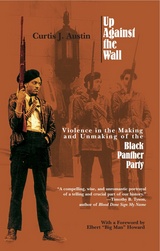 Up Against the Wall: Violence in the Making and Unmaking of the Black Panther Party
Curtis J. Austin
University of Arkansas Press, 2008 Curtis J. Austin’s Up Against the Wall chronicles how violence brought about the founding of the Black Panther Party in 1966 by Huey P. Newton and Bobby Seale, dominated its policies, and finally destroyed the party as one member after another—Eldridge Cleaver, Fred Hampton, Alex Rackley—left the party, was killed, or was imprisoned. Austin shows how the party’s early emphasis in the 1960s on self-defense, though sorely needed in black communities at the time, left it open to mischaracterization, infiltration, and devastation by local, state, and federal police forces and government agencies. Austin carefully highlights the internal tension between advocates of a more radical position than the Panthers took, who insisted on military confrontation with the state, and those such as Newton and David Hilliard, who believed in community organizing and alliance building as first priorities. Austin interviewed a number of party members who had heretofore remained silent. With the help of these stories, Austin is able to put the violent history of the party in perspective and show that the “survival” programs, such as the Free Breakfast for Children program and Free Health Clinics, helped the black communities they served to recognize their own bases of power and ability to save themselves.
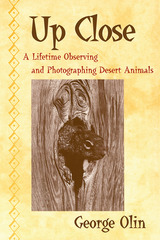 Up Close: A Lifetime Observing and Photographing Desert Animals
George Olin
University of Arizona Press, 2000 George Olin has gained a wide reputation as a keen observer of nature. In books such as Mammals of the Southwestern Deserts and House in the Sun, his writing and photography have enchanted those who want to know more about the desert and its animals—even people who already live there. In this charming memoir, Olin combines personal and natural history to recount his long fascination with animals. In addition to painting a vivid picture of his nomadic life, he describes the ingenious methods he devised to observe desert creatures and build their trust—and the lessons they taught him in return. Olin takes readers back to 1951, when he and his wife, Irene, were hired as fire lookouts in Arizona's Huachuca Mountains. There, where golden eagles soared and rock squirrels scampered, they befriended a wide variety of animals, from skunks to coatis, and knew they had found satisfaction. The following year they participated in the founding of the Arizona-Sonora Desert Museum in Tucson and were in on its construction from the ground up. As a ranger and later the park naturalist at Saguaro National Monument, Olin became acquainted with more of the desert's creatures, sharpened his photographic skills, and even studied pollination of saguaro cactus by bats and other creatures. Following eight years spent working for the Park Service in the East, the Olins returned to their beloved desert as retirees. There George embarked upon a night photography project, following foxes, skunks, raccoons, and ringtail cats on their nocturnal rounds, and later extending his study to kit foxes and kangaroo rats. Up Close contains a wealth of information about what he learned on those outings, and his engaging tales of personal encounters with these and other denizens of the desert will make even Gila monsters, wood rats, and scorpions seem less threatening for readers who flinch at the very thought of them. Up Close is a warm and enjoyable book, chock full of Olin's charming photographs, that makes the desert and its creatures come alive. It will delight all who love the Southwest and instill a sense of wonder in anyone fascinated by the natural world.
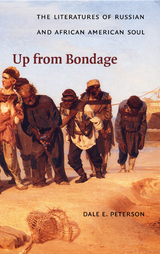 Up from Bondage: The Literatures of Russian and African American Soul
Dale E. Peterson
Duke University Press, 2000 During the nineteenth century, literate Russians and educated American blacks encountered a dominant Western narrative of world civilization that seemed to ignore the histories of Slavs and African Americans. In response, generations of Russian and black American intellectuals have asserted eloquent counterclaims for the cultural significance of a collective national “soul” veiled from prejudiced Western eyes. Up from Bondage is the first study to parallel the evolution of Russian and African American cultural nationalism in literary works and philosophical writings.
Illuminating a remarkably widespread cross-pollination between the two cultural and intellectual traditions, Dale E. Peterson frames much of his argument around W. E. B. DuBois’s concept of “double-consciousness,” wherein members of an oppressed section of society view themselves simultaneously through their own self-awareness and through the internalized standards of the dominant culture. He shows how the writings of Dostoevsky, Hurston, Chesnutt, Turgenev, Ellison, Wright, Gorky, and Naylor—texts that enacted and described this sense of double awareness—were used both to perform and to contest the established genres of Western literacy. Woven through Peterson’s textual analyses is his consideration of cultural hybridism and its effects: The writers he examines find multiple ways to testify to and challenge the symptoms of postcolonial trauma. After discussing the strong and significant affinity expressed by contemporary African American cultural theorists for the dialogic thought of Russian linguist Mikhail Bakhtin, Peterson argues that a fuller appreciation of the historic connection between the two cultures will enrich the complicated meanings of being black or Russian in a world that has traditionally avoided acknowledging pluralistic standards of civilization and cultural excellence.
This investigation of comparable moments in the development of Russian and African American ethnic self-consciousness will be valuable to students and scholars of comparative literature, philosophy, cultural theory, ethnicity, linguistics, and postcolonialism, in addition to Slavic and African American studies.
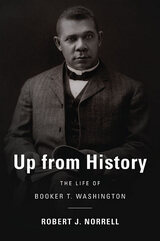 Up from History: The Life of Booker T. Washington
Robert J. Norrell
Harvard University Press, 2011 Since the 1960s, Martin Luther King, Jr., has personified black leadership with his use of direct action protests against white authority. A century ago, in the era of Jim Crow, Booker T. Washington pursued a different strategy to lift his people. In this compelling biography, Norrell reveals how conditions in the segregated South led Washington to call for a less contentious path to freedom and equality. He urged black people to acquire economic independence and to develop the moral character that would ultimately gain them full citizenship. Although widely accepted as the most realistic way to integrate blacks into American life during his time, Washington’s strategy has been disparaged since the 1960s.
The first full-length biography of Booker T. in a generation, Up from History recreates the broad contexts in which Washington worked: He struggled against white bigots who hated his economic ambitions for blacks, African-American intellectuals like W. E. B. Du Bois who resented his huge influence, and such inconstant allies as Theodore Roosevelt. Norrell details the positive power of Washington’s vision, one that invoked hope and optimism to overcome past exploitation and present discrimination. Indeed, his ideas have since inspired peoples across the Third World that there are many ways to struggle for equality and justice. Up from History reinstates this extraordinary historical figure to the pantheon of black leaders, illuminating not only his mission and achievement but also, poignantly, the man himself.
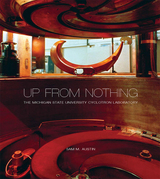 Up from Nothing: The Michigan State University Cyclotron Laboratory
Sam M. Austin
Michigan State University Press, 2016 Up from Nothing is the story of the Michigan State University Cyclotron Laboratory and its growth from the appointment of a single individual in 1958 to when the university earned the right to build the Facility for Rare Isotope Beams (FRIB) in 2008.
The cyclotron laboratory at MSU has been known for years as the best university nuclear physics laboratory in the United States, and perhaps in the world. But very few, even in its hometown of East Lansing, know how it achieved that status or why it prospered when laboratories at many other famous universities faded.
In this book Austin, a nuclear physicist who has been at the laboratory since the beginning of its ascent, gives us a remarkable story. It begins with an exceptional individual, Henry Blosser, who founded the laboratory, built a cyclotron accelerator of uniquely high precision, and recruited a team of nuclear physicists that used it to establish the laboratory’s reputation. Its credibility led to a sequence of accelerators, each operating in a different sub?eld while continuing a tradition of forefront science, and to a laboratory culture that fostered the courage and foresight to compete for the FRIB in the face of daunting odds.
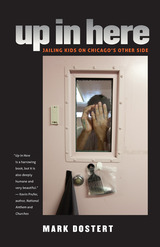 Up in Here: Jailing Kids on Chicago's Other Side
Mark Dostert
University of Iowa Press, 2014 Raised in a comfortable Dallas suburb, Mark Dostert crossed cultural and socioeconomic boundaries as a college student by volunteering as a counselor at the Cook County Juvenile Temporary Detention Center, Chicago’s infamous 500-cell juvenile jail, known locally as the Audy Home. Inmates there had been indicted on first-degree murder, rape, and carjacking charges, yet some enthusiastically met with him for weekly Bible-based lessons and discussions. Dostert formed friendly relationships with his students and envisioned becoming an even closer mentor to the legally troubled boys when he became an employee there after graduating from college.
The juveniles’ attitudes toward Dostert change, however, once he begins working as a “Children’s Attendant” at the Audy Home, clocking in for eight hours every day to enforce rules and maintain order on the cellblocks. His colorblind, altruistic volunteer world fractures into a full-time, emotionally charged reality of white and black and brown. When the boys change, he must change too. Despite wanting to help them feel human in such a dehumanizing environment, Dostert realizes he needs to make sure his kindness is not perceived as weakness. Dostert learns to march the juveniles through the facility to school, recreation activities, and chapel. He must strip-search them, interrupt their brawls, root through their cells for drugs and handcrafted weapons, and monitor group showers to thwart sexual extortion and the inscription of gang symbols in soap on walls and mirrors. Week after week and month after month, the job exposes hidden views not only of the juveniles and the “system” incarcerating them, but of Children’s Attendant Dostert himself.
From one man’s struggle to reconcile his humanitarian intentions with his actual job responsibilities in what, to him, is a strange new world, emerges a sincere effort to confront the realities of America’s persisting racial tensions and institutionalized poverty. Dostert’s story is an honest and unflinching journey from thinking he has many of the answers for how to change this world to discovering how little he really knows about the world he is trying to change.
 Up in the Air?: The Future of Public Service Media in the Western Balkans
Tarik Jusic
Central European University Press, 2021 The agenda for transition after the demise of communism in the Western Balkans made the conversion of state radio and television into public service broadcasters a priority, converting mouthpieces of the regime into public forums in which various interests and standpoints could be shared and deliberated. There is general agreement that this endeavor has not been a success. Formally, the countries adopted the legal and institutional requirements of public service media according to European standards. The ruling political elites, however, retained their control over the public media by various means. Can this trend be reversed? Instead of being marginalized or totally manipulated, can public service media become vehicles of genuine democratization? A comparison of public service media in seven countries (Albania, Bosnia & Herzegovina, Croatia, Kosovo, Montenegro, North Macedonia, and Serbia) addresses these important questions.
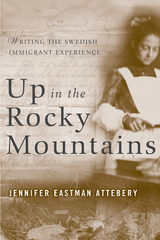 Up in the Rocky Mountains: Writing the Swedish Immigrant Experience
Jennifer Eastman Attebery
University of Minnesota Press, 2007 Before the turn of the twentieth century, many Swedish men emigrated to the American Rockies as itinerant laborers, drawn by the region’s developing industries. Single Swedish women ventured west, too, and whole families migrated, settling into farm communities. By 1920, one-fifth of all Swedish immigrants were living in the West. In Up in the Rocky Mountains, Jennifer Eastman Attebery offers a new perspective on Swedish immigrants’ experiences in Idaho, Montana, Utah, Wyoming, Colorado, and New Mexico from 1880 to 1917 by interpreting their letters home. Considering more than three hundred letters, Attebery analyzes their storytelling, repetitive language, traditional phrasing, and metaphoric images. Recognizing the letters’ power as a folk form, Attebery sees in them the writers’ relationships back in Sweden as well as their encounters with religious and labor movements, regionalism, and nationalism in their new country. By defining personal letters as a vernacular genre, Attebery provides a model for discerning immigrants’ shared culture in correspondence collections. By studying their words, she brings to life small Swedish communities throughout the Rocky Mountain region. Jennifer Eastman Attebery is professor of English and director of American studies at Idaho State University.
Up Jump the Boogie
John Murillo
Four Way Books, 2020 Poetry. African American Studies. Latino/Latina Studies. "Up jumps the boogie. That's almost all one needs to say. Murillo is headbreakingly brilliant. I didn't have a favorite poet for this year: Now I do. But with this kind of verve and intelligence and ferocity Murillo just might be a favorite for many years to come."—Junot Díaz
"The feel of now lives in John Murillo's UP JUMP THE BOOGIE, but it's tempered by bows to the tradition of soulful music and oral poetry. The lived dimensions embodied in this collection say that here's an earned street knowledge and a measured intellectual inquiry that dare to live side by side, in one unique voice. The pages of UP JUMP THE BOOGIE breathe and sing; the tributes and cultural nods are heartfelt, and in these honest poems no one gets off the hook."—Yusef Komunyakaa
Up North
Sam Cook
University of Minnesota Press, 2003 Memorable descriptions of the Northern seasons—now in paperback! In this unforgettable collection of essays, Sam Cook portrays the enchanting North Country as a state of mind as much as a geographical area. Up North captures the mystic moods, seasonal subtleties, and colorful characters that fill the region from the Minnesota canoe country to the vast expanse of the Northwest Territories. Organized by time of year, Up North describes every season’s pleasures—sled dog racing in winter, hooking a northern pike on the first spring fishing trip, building a summer campfire, watching the aurora borealis in fall. Up North is an invitation to explore canoe country through Sam Cook’s eyes and your own.
 Up North in Michigan: A Portrait of Place in Four Seasons
Jerry Dennis
University of Michigan Press, 2021 Northern Michigan is a place, like all places, in change. Over the past half century, its landscape has been bulldozed, subdivided, and built upon. Climate change warms the water of the Great Lakes at an alarming rate—Lake Superior is now the fastest-warming large body of freshwater on the planet—creating increasingly frequent and severe storm events, altering aquatic and shoreline ecosystems, and contributing to further invasions by non-native plants and animals.
And yet the essence of this region, known to many as simply “Up North,” has proved remarkably perennial. Millions of acres of state and national forests and other public lands remain intact. Small towns peppered across the rural countryside have changed little over the decades, pushing back the machinery of progress with the help of dedicated land conservancies, conservation organizations, and other advocacy groups.
Up North in Michigan, the new collection from celebrated nature writer Jerry Dennis, captures its author’s lifelong journey to better know this place he calls home by exploring it in every season, in every kind of weather, on foot, on bicycle, in canoes and cars. The essays in this book are more than an homage to a particular region, its people, and its natural wonders. They are a reflection on the Up North that can only be experienced through your feet and fingertips, through your ears, mouth, and nose—the Up North that makes its way into your bones as surely as sand makes its way into wood grain.
The paperback contains a new chapter by Jerry Dennis that has been written since the publication of the hardcover.
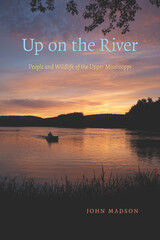 Up on the River: People and Wildlife of the Upper Mississippi
Madson, John
University of Iowa Press, 1985 @font-face { font-family: "Times";}@font-face { font-family: "Verdana";}@font-face { font-family: "Palatino";}p.MsoNormal, li.MsoNormal, div.MsoNormal { margin: 0in 0in 0.0001pt; font-size: 12pt; font-family: "Times New Roman"; }div.Section1 { page: Section1; } Up on the River is John Madson’s loving and often hilarious tribute to the people, animal life, and places of the Upper Mississippi. Madson’s Upper Mississippi is the part “between the saints,” from St. Louis to St. Paul, where for thirty years he explored the bright waters of the upper reaches of the mighty river itself as well as the tangled multitude of sloughs, cuts, and side channels that wander through its wooded islands and floodplain forests. “Some of my best time on the River has been in the company of game wardens, biologists, commercial fishermen, clammers, trappers, hunters, and a smelly, mud-smeared coterie of river rats in general, and my views of the River are far more likely to reflect theirs than those of the transportation industry,” Madson writes of his thirty-year acquaintance with the Mississippi. Traveling mainly by canoe and johnboat, he tells of encounters between archetypal commercial fishermen and archetypal game wardens over hot fish chowder, fishing for crappies in the tops of submerged trees and for walleyes amid gale force winds, nesting and migrating herons and ducks and eagles, the histories of river logging and pearling and button making, and towboats and barges and the lives of the “ramstugenous” people who move freight on the river. Learning about the Upper Mississippi via the wry tutelage of John Madson, who discovered that “whenever I am out on a river some of its freeness rubs off on me,” readers of this classic book will also come under the spell of this freeness.
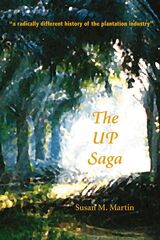 The UP Saga
Susan M. Martin
National University of Singapore Press, 2003 Histories of the plantations sector in Malaysia have largely focused on the rubber industry and on the rise and fall of big British-owned colonial enterprises. But since independence, the sector has entered a new phase of spectacular growth founded on the oil palm. This volume offers a radically different history of a firm which spans both eras. The fascinating story of United Plantations Berhad (UP) highlights a Scandinavian-founded firm that evolved along quite different lines from the normal models of British imperial business. Tracing the company’s origins before the First World War, it describes the crisis years of economic depression and Japanese occupation then on to the years of spectacular growth which has lasted since the time of the Emergency and Merdeka right up to the present day. The success of this firm - based not just on an extraordinary combination of agricultural, engineering and marketing innovation but also on the company’s engagement and commitment to its local environment - provides a glowing example of a partnership between Europeans and Asians which has benefited both sides.
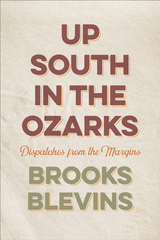 Up South in the Ozarks: Dispatches from the Margins
Brooks Blevins
University of Arkansas Press, 2022 The Ozarks is a place that defies easy categorization. Sprawling across much of Missouri and Arkansas and smaller parts of Oklahoma and Kansas, it is caught on the margins of America’s larger cultural regions: part southern, part midwestern, and maybe even a little bit western. For generations Ozarkers have been more likely than most other Americans to live near or below the poverty line—a situation that has often subjected them to unflattering stereotypes. In short, the Ozarks has been a marginal place populated by marginalized people.
Historian Brooks Blevins has spent his life studying and writing about the people of his native regions—the South and the Ozarks. He has been in the vanguard of a new and vibrant Ozarks Studies movement that has worked to refract the stories of Ozarkers through a more realistic and less exotic lens. In Up South in the Ozarks: Dispatches from the Margins, Blevins introduces us with humor and fairness to mostly unseen lives of the past and present: southern gospel singing schools and ballad collectors, migratory cotton pickers and backroad country storekeepers, fireworks peddlers and impoverished diarists.
Part historical and part journalistic, Blevins’s essays combine the scholarly sensibilities of a respected historian with the insights of someone raised in rural hill country. His stories of marginalized characters often defy stereotype. They entertain as much as they educate. And most of them originate in the same place Blevins does: up south in the Ozarks.
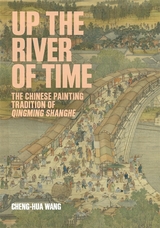 Up the River of Time: The Chinese Painting Tradition of Qingming Shanghe
Cheng-hua Wang
Harvard University Press Qingming shanghe (Up the River during Qingming), dubbed China’s Mona Lisa, is a painting whose primordial version is attributed to Zhang Zeduan, a painter who lived during the Northern Song dynasty (960–1127). It is so revered that to this day there exist more than one hundred handscroll paintings with this title, including the original and later versions produced during the late Ming through the High Qing. Up the River of Time is the first study in any language to treat the entire cultural constellation of Qingming shanghe as a painting tradition. Cheng-hua Wang investigates how the original Northern Song version—deemed a classic in art-historical research—and its later iterations shaped the norms of painting, triggered cultural associations, fostered the genre of cityscapes, and redefined the meanings of “reproduction” and “forgery.” By studying the thematic links between the painting’s various versions and tracing their development over several centuries, Wang leads us to revisit China’s painting history. Such a focus that pivots toward broad considerations of thematic and cultural significance prompts a reassessment of what defines artistic value. Over time, Qingming shanghe catalyzed a new artistic culture in China.
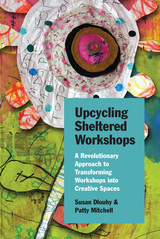 Upcycling Sheltered Workshops: A Revolutionary Approach to Transforming Workshops into Creative Spaces
Susan Dlouhy
Ohio University Press, 2015 At a time when the traditional sheltered workshop model has fallen under rightful criticism, and a new paradigm for disability programming is not yet in place, Upcycling Sheltered Workshops offers a revolutionary alternative. As many push to dismantle sheltered workshops, Susan Dlouhy and Patty Mitchell present the Creative Abundance Model, a proven method that redirects sheltered workshops from routine to creativity, putting participants in the driver’s seat. The Creative Abundance Model does away with the repetitive tasks that characterize traditional workshops. Instead, it is a structured but more open program that incorporates art, music, and other creative pursuits, freeing participants to discover their individual skills and talents. The authors both advocate for the model and provide instructions for implementing it, outlining such steps as obtaining funding, gaining the support and participation of the surrounding community, and preparing studios. Case studies from around the nation and inspiring photographs illustrate Dlouhy and Mitchell’s methods and document the many ways in which participants in Creative Abundance thrive.
 Update Culture and the Afterlife of Digital Writing
John R Gallagher
Utah State University Press, 2019 Update Culture and the Afterlife of Digital Writing explores “neglected circulatory writing processes” to better understand why and how digital writers compose, revise, and deliver arguments that undergo sometimes constant revision. John R. Gallagher also looks at how digital writers respond to comments, develop a brand, and evolve their arguments—all post-publication.
With the advent of easy-to-use websites, ordinary people have become internet writers, disseminating their texts to large audiences. Social media sites enable writers’ audiences to communicate back to the them, instantly and often. Even professional writers work within interfaces that place comments adjacent to their text, privileging the audience’s voice. Thus, writers face the prospect of attending to their writing after they deliver their initial arguments. Update Culture and the Afterlife of Digital Writing describes the conditions that encourage “published” texts to be revisited. It demonstrates—through forty case studies of Amazon reviewers, redditors, and established journalists—how writers consider the timing, attention, and management of their writing under these ever-evolving conditions.
Online culture, from social media to blog posts, requires a responsiveness to readers that is rarely duplicated in print and requires writers to consistently reread, edit, and update texts, a process often invisible to readers. This book takes questions of circulation online and shows, via interviews with both writers and participatory audience members, that writing studies must contend with writing’s afterlife. It will be of interest to researchers, scholars, and students of writing studies and the fields of rhetoric, communication, education, technical communication, digital writing, and social media, as well as all content creators interested in learning how to create more effective posts, comments, replies, and reviews.
Updike: America's Man of Letters
William H. Pritchard
University of Massachusetts Press, 2005 By the age of twenty-eight, John Updike had already been published in the three major forms—novel, poem, and short story—he would continue to explore with steadily expanding skill and authority. For the next four decades his literary career would realize itself primarily in these three forms, but also in essays, reviews, and memoirs, and in resourceful commentary on his own work—the stuff of many interviews and prefaces. In this book, William H. Pritchard offers not a biography, but an insightful portrait of the writer and his work.
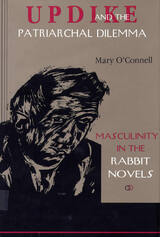 Updike and the Patriarchal Dilemma: Masculinity in the Rabbit Novels
Mary O'Connell
Southern Illinois University Press, 1996 Mary O’Connell examines the role of socially constructed masculinity in John Updike’s Rabbit tetralogy—Rabbit Run, Rabbit Redux, Rabbit Is Rich, and Rabbit at Rest—which comprises the longest and most comprehensive representation of masculinity in American literature and places Updike firmly with the precursors of the contemporary movement among men to reevaluate their cultural inheritance. A disturbing element exists, O’Connell determines, in both the texts of the Rabbit novels and in the critical community that examines them. In the novels, O’Connell finds substantial evidence to demonstrate patterns of psychological and physical abuse toward women, citing as the culminating example the mounting toll of literally or metaphorically dead women in the texts. Critics who characterize Updike as a nonviolent writer who strangely overlooks Rabbit’s repressive and violent behaviors avoid a discomforting but crucial aspect of Updike’s portrait. Because the critical verdict of nonviolence in Updike’s novels contrasts sharply with the string of female corpses, O’Connell deems that something within the text or culture—or both—is seriously amiss. Although she examines negative aspects of Rabbit’s behavior, O’Connell avoids the oversimplification of labeling Updike a misogynist. Instead, she looks closely at the forces shaping Rabbit’s gender identity as well as at the ways he experiences masculinity and the ways his gender identity affects his personal and spiritual development, his relationships, and, ultimately, his society. She shows how Updike challenges stereotypical masculinity, revealing its limitations and proscriptions as the source of much unhappiness for both men and women. Further, she substantiates the relation between gender, form, structure, perspective, and language use in the novels, alerting the reader to the ambivalence arising from the male author’s examination of masculinity. O’Connell maintains that Updike does more than write Rabbit as a stereotypical male; he instead explores in depth his character’s habitually flawed ways of seeing and responding to the world. As she discusses these issues, O’Connell uses the term patriarchy in its broadest sense to refer to the practice of centralizing the male and marginalizing the female in all areas of human life. Patriarchal ideology—the assumptions, values, ideas, and patterns of thought that perpetuate the arrangement—is written as hidden text, permeating every aspect of culture, particularly language, from which it spreads to other signifying systems. Contrary to conventional critical wisdom, Updike is not a straightforward writer; the Rabbit novels create meaning by challenging, undermining, and qualifying their own explicit content. Updike claims that his novels are "moral debates with the reader," and according to O’Connell, the resisting reader, active and skeptical, is the one most likely to discover what Rabbit conceals and to register the nuances of layered discourse.
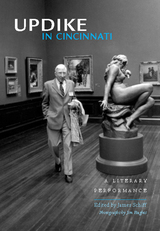 Updike in Cincinnati: A Literary Performance
James Schiff
Ohio University Press, 2007 For two spring days in 2001, John Updike visited Cincinnati, Ohio, engaging and charming his audiences, reading from his fiction, fielding questions, sitting for an interview, participating in a panel discussion, and touring the Queen City.
Successful writers typically spend a portion of their lives traveling the country to give readings and lectures. While a significant experience for author and audience alike, this public spectacle, once covered in detailed newspaper accounts, now is barely noticed by the media. Updike in Cincinnati—composed of a wealth of materials, including session transcripts, short stories discussed and read by the author, photographs, and anecdotal observations about Updike's performance and personal interactions--is unique in its comprehensive coverage of a literary visit by a major American author.
Updike's eloquence, intelligence, improvisational skills, and gift for comedy are all on display. With natural grace, he discusses a range of topics, including his novels and short stories, his mother and oldest son as writers, Pete Rose and Shoeless Joe Jackson, the Nobel Prize, his appearance on The Simpsons, the Cold War, and Hamlet.
Augmented with commentary by critics W. H. Pritchard and Donald Greiner, and an introduction and interview by James Schiff, Updike in Cincinnati provides an engaging and detailed portrait of one of America's contemporary literary giants.
Upgrading Urban Power Grids
Juan M. Gers
The Institution of Engineering and Technology, 2024 Today, more than half the global population lives in cities, and two thirds are expected to do so by 2050. Cities need technologies to reduce greenhouse gas emissions from energy, transport and heating, which requires distributed renewable electricity, from rooftop solar, small wind and other sources, in order to cleanly generate enough electricity to meet cities' needs. However, most urban electricity grids were not designed to manage distributed energy generation and the benefits of smart grids. Distribution systems therefore need to be strengthened and updated with the new technology offered by the hardware and software available, in order to maintain power quality and meet the requirements of reliability requested by regulatory bodies.
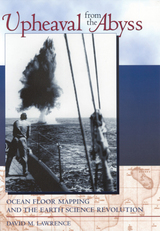 Upheaval from the Abyss: Ocean Floor Mapping and the Earth Science Revolution
Lawrence, David M.
Rutgers University Press, 2002 The deep oceans are the last great frontier remaining on Earth. Humans have conquered the vast wilderness of the terrestrial surface, from the searing deserts and dark forests of the tropics to the icy polar regions. Today, anyone with enough ambition and money can travel upriver into the heart of the Borneo jungle, climb Mount Everest, or spend the night at the South Pole. But the oceans beyond the continental shelves remain forbidding, beyond the reach of science, adventurism, and commerce. Not long ago, scientists viewed the ocean floor as a vast, featureless plain, an ancient repository of detritus eroded from the surface of an unchanging Earth. Light never reached the seemingly lifeless depths. The ocean basins were only of marginal scholarly interest. This all changed with the Herculean quest to discover what lay on the world's ocean floor—a quest that inspired the continental drift-plate tectonics revolution and overturned prevailing scientific notions of how the Earth’s surface was created, rearranged, and destroyed. Upheaval from the Abyss spans a 130-year period, beginning with the early, backbreaking efforts to map the depths during the age of sail; continuing with improvements in research methods spurred by maritime disaster and war; and culminating in the publication of the first map of the world’s ocean floor in 1977. The author brings this tale to life by weaving through it the personalities of the scientists-explorers who struggled to see the face of the deep, and reveals not only the facts of how the ocean floor was mapped, but also the human dimensions of what the scientists experienced and felt while in the process.
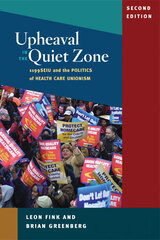 Upheaval in the Quiet Zone: 1199/SEIU and the Politics of Healthcare Unionism
Leon Fink and Brian Greenberg
University of Illinois Press, 2008 This expanded second edition of Upheaval in the Quiet Zone updates the dramatic story of an insurgent labor union that by the end of the 1980s had established itself as a vital force in the modern labor movement. But even bigger changes were on the way. Overcoming internal divisions that originated in its 1930s-inflected and civil rights-era militancy, 1199SEIU adopted a new strategy of labor-management cooperation to emerge as a key player in state and city politics. When SEIU president Andrew Stern laid plans in 2006 for a new national health care workers union that would simultaneously reach out to the unorganized and campaign for universal, national health insurance, he turned to 1199 president Dennis Rivera--and the 1199 political model--to lead the effort. With new material that updates the union's history since the 1990s, this book conveys the promise and problems of movement-building in the twenty-first century health care industry.
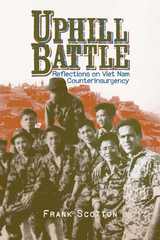 Uphill Battle: Reflections on Viet Nam Counterinsurgency
Frank Scotton
Texas Tech University Press, 2014 How could the United States lose a war that seemed easy to win?
When the Viet Nam War ended, with the United States of America defeated, many wondered how a military powerhouse lost to a “raggedy-ass, little fourth-rate country,” as President Lyndon Johnson called North Viet Nam. Frank Scotton knew why. A young Foreign Service Officer assigned to Viet Nam in 1962, Scotton drove roads others avoided, walked trails alone, and spent nights in remote hamlets. Learning the Vietnamese language, carrying a carbine, and living out of a rucksack, he proved that small teams, correctly trained and led, could compete with communist units.
In 1964, Scotton organized mobile platoons to emphasize political aspects of the conflict. Those special teams, adopted by the CIA, became models for the national pacification program. He prepared units in some provinces at the request of General Westmoreland, and in 1965 and 1966 worked with Special Forces. While organizational assistant and troubleshooter for Robert Komer in 1967, and subsequently with William Colby in the military headquarters (MACV), Scotton reluctantly concluded that improved counterinsurgency techniques could not beat back the challenges posed by North Viet Nam resolve, lack of political energy in South Viet Nam, and the dissolving American commitment. For the first time Scotton shares his important observations and reasoned conclusions about the United States’s involvement in the Viet Nam War.
Upkeep
Sara London
Four Way Books, 2019 The poems in Sara London’s Upkeep offer a guidebook for both coping with and negotiating the difficult terrain of life after great personal loss. In the book’s opening section, the speaker explains to a Martian the ways we earthlings attempt to raise our dead—“you’ll find that with dreams // we exhume our dead without the mess /of upturned dirt”—and later finds comfort in objects that connect her to her late Mr. Fix-It father. These are elegies whose solemnity has been upended by humor and the nuanced interrogations of the daily rituals that heal us. “How do you / do it, start the experiment— / gas up, each day, anew?” she asks. Oatmeal and duct tape help, London suggests, but ultimately the heart decides: The “old tubes, they play on.”
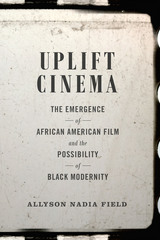 Uplift Cinema: The Emergence of African American Film and the Possibility of Black Modernity
Allyson Nadia Field
Duke University Press, 2015 In Uplift Cinema, Allyson Nadia Field recovers the significant yet forgotten legacy of African American filmmaking in the 1910s. Like the racial uplift project, this cinema emphasized economic self-sufficiency, education, and respectability as the keys to African American progress. Field discusses films made at the Tuskegee and Hampton Institutes to promote education, as well as the controversial The New Era, which was an antiracist response to D. W. Griffith's The Birth of a Nation. She also shows how Black filmmakers in New York and Chicago engaged with uplift through the promotion of Black modernity. Uplift cinema developed not just as a response to onscreen racism, but constituted an original engagement with the new medium that has had a deep and lasting significance for African American cinema. Although none of these films survived, Field's examination of archival film ephemera presents a method for studying lost films that opens up new frontiers for exploring early film culture.
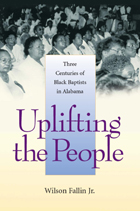 Uplifting the People: Three Centuries of Black Baptists in Alabama
Wilson Fallin Jr.
University of Alabama Press, 2007 Uplifting the People is a history of the Alabama Missionary Baptist State Convention—its origins, churches, associations, conventions, and leaders. Fallin demonstrates that a distinctive Afro-Baptist faith emerged as slaves in Alabama combined the African religious emphasis on spirit possession, soul-travel, and rebirth with the evangelical faith of Baptists. The denomination emphasizes a conversion experience that brings salvation, spiritual freedom, love, joy, and patience, and also stresses liberation from slavery and oppression and highlights the exodus experience. In examining the social and theological development of the Afro-Baptist faith over the course of three centuries, Uplifting the People demonstrates how black Baptists in Alabama used faith to cope with hostility and repression. Fallin reveals that black Baptist churches were far more than places of worship. They functioned as self-help institutions within black communities and served as gathering places for social clubs, benevolent organizations, and political meetings. Church leaders did more than conduct services; they protested segregation and disfranchisement, founded and operated schools, and provided community leaders for the civil rights movement of the mid-20th century. Through black churches, members built banking systems, insurance companies, and welfare structures. Since the gains of the civil rights era, black Baptists have worked to maintain the accomplishments of that struggle, church leaders continue to speak for social justice and the rights of the poor, and churches now house day care and Head Start programs. Uplifting the People also explores the role of women, the relations between black and white Baptists, and class formation within the black church.
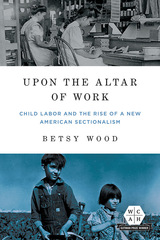 Upon the Altar of Work: Child Labor and the Rise of a New American Sectionalism
Betsy Wood
University of Illinois Press, 2020 Rooted in the crisis over slavery, disagreements about child labor broke down along sectional lines between the North and South. For decades after emancipation, the child labor issue shaped how Northerners and Southerners defined fundamental concepts of American life such as work, freedom, the market, and the state. Betsy Wood examines the evolution of ideas about child labor and the on-the-ground politics of the issue against the backdrop of broad developments related to slavery and emancipation, industrial capitalism, moral and social reform, and American politics and religion. Wood explains how the decades-long battle over child labor created enduring political and ideological divisions within capitalist society that divided the gatekeepers of modernity from the cultural warriors who opposed them. Tracing the ideological origins and the politics of the child labor battle over the course of eighty years, this book tells the story of how child labor debates bequeathed an enduring legacy of sectionalist conflict to modern American capitalist society.
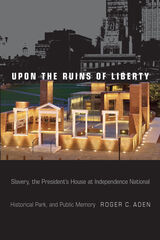 Upon the Ruins of Liberty: Slavery, the President's House at Independence National Historical Park, and Public Memory
Roger C. Aden
Temple University Press, 2014 The 2002 revelation that George Washington kept slaves in his executive mansion at Philadelphia's Independence National Historical Park in the 1790s prompted an eight-year controversy about the role of slavery in America's commemorative landscape. When the President's House installation opened in 2010, it became the first federal property to feature a slave memorial.
In Upon the Ruins of Liberty, Roger Aden offers a compelling account that explores the development of this important historic site and how history, space, and public memory intersected with contemporary racial politics. Aden constructs this engrossing tale by drawing on archival material and interviews with principal figures in the controversy-including historian Ed Lawler, site activist Michael Coard, and site designer Emanuel Kelly.
Upon the Ruins of Liberty chronicles the politically-charged efforts to create a fitting tribute to the place where George Washington (and later, John Adams) shaped the presidency while denying freedom to the nine enslaved Africans in his household. From design to execution, the plans prompted advocates to embrace stories informed by race, and address difficulties that included how to handle the results of the site excavation. As such, this landmark project raised concerns and provided lessons about the role of public memory and how places are made to shape the nation's identity.
Upper Level Disturbances
Kevin Goodan
University Press of Colorado, 2012 Mountain West Poetry Series
Published by the Center for Literary Publishing at Colorado State University
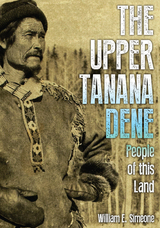 The Upper Tanana Dene: People of This Land
by William E. Simeone
University of Alaska Press, 2022 The Upper Tanana Dene conveys the history and knowledge of Dene elders to current and future generations. Oral accounts reveal a unique and compelling perspective on a traditional way of life and offer fascinating commentary on a holistic way of life that is as relevant today as it was generations ago. These narratives, along with photographs and illustrations, show the history of the region alongside a detailed portrait of the people themselves.
As young Dene migrate to towns and cities far from their homeland on the upper Tanana River of east central Alaska, they may never learn what it was like living from the land. In these interviews elders express concern that young Dene are becoming ignorant of the traditions that made their ancestors disciplined and strong enough to withstand the rigors of life on the land. The old life was taxing and made demands on the body and soul, and the struggle to achieve security placed a premium on knowledge, endurance, and constant effort. Modern conveniences have made life easier, but elders believe their knowledge is still vital to the survival of future generations.
With text in both Dene and English, The Upper Tanana Dene is a link to Dene experiences, lives, and understanding of the world and is meant for those interested in Dene heritage, as well as students and scholars of cultural and ethnic studies and history.
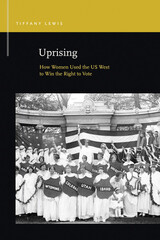 Uprising: How Women Used the US West to Win the Right to Vote
Tiffany Lewis
Michigan State University Press, 2021 Decades before white women won the right to vote throughout the United States, they first secured that right in its Western region—beginning in Wyoming in 1869. Many scholars have studied why and how the Western states enfranchised women before the Eastern ones; this book instead examines the influence of the West on the national US suffrage movement. As the campaign for woman suffrage intensified, US suffragists often invoked the West in their verbal, visual, and embodied advocacy. In deploying this region as a persuasive resource, they challenged the traditional meanings of the West and East, thus gaining additional persuasive strategies. Tiffany Lewis’s analysis of the public discourse, images, and performances of suffragists and their opponents shows that the West played a pivotal role in the successful campaign for white women’s enfranchisement that culminated in 1920. In addition to offering a history of this political movement’s rhetorical strategy, Lewis illustrates the usefulness of region in protest—the way social movements can tactically employ region to motivate social change.
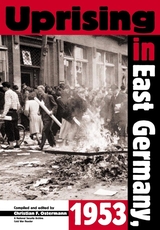 Uprising in East Germany, 1953: The Cold War, the German Question, and the First Major Upheaval behind the Iron Curtain
The National Security Archive Ostermann
Central European University Press, 2001 This volume is the second in the series Cold War Documentary Readers, a project of the US National Security Archive and the Cold War International History Project. The volume is the first documented account of this early Cold War crisis from both sides of the Iron Curtain. Based on the recent unprecedented access to the once-closed archives of several member states of the Warsaw Pact, this collection of primary-source documents presents one of the most notorious events of post-war European history in a highly readable format. Previously unreleased Kremlin records, once highly classified American documents, materials from the Soviet Foreign Ministry, and transcripts of internal East German Communist Party Politburo meetings in the days leading to the uprising in the German Democratic Republic (GDR) are among the highlights of this sensational documentary. In this volume, as in the previous one in the series, each part is preceded by a detailed introductory essay to provide the necessary historical and political context. The individual documents are introduced by short headnotes summarizing the contents and orienting the reader. A chronology, glossary and bibliography offer further background information.
Upriver
Carolyn Kremers
University of Alaska Press, 2013 Poet, nonfiction writer, and lifelong musician Carolyn Kremers moved to Alaska to teach in the remote Bering Sea coast village of Tununak when she was thirty-four. Her first book, Place of the Pretend People: Gifts from a Yup’ik Eskimo Village (a memoir), probed and celebrated that experience. Upriver continues the chronicle of Kremers’ personal journey deep into Alaska and the human soul. Mixing music, Yup’ik language, the natural world, honesty, and an intimate sense of the spiritual and the unobtainable, Kremers presents a cascade of poems made of beauty and pain. The poems fall into five settings—Tununak, the Interior, Shape-Shifting, Return to the Y-K Delta, and Fairbanks. Like salmon swimming instinctively upriver—toward home—this story confronts what it means and how it feels to love a person or a place, no matter the consequences.
 Upriver Journeys: Diaspora and Empire in Southern China, 1570–1850
Steven B. Miles
Harvard University Press Tracing journeys of Cantonese migrants along the West River and its tributaries, this book describes the circulation of people through one of the world’s great river systems between the late sixteenth and mid-nineteenth centuries. Steven B. Miles examines the relationship between diaspora and empire in an upriver frontier, and the role of migration in sustaining families and lineages in the homeland of what would become a global diaspora. Based on archival research and multisite fieldwork, this innovative history of mobility explores a set of diasporic practices ranging from the manipulation of household registration requirements to the maintenance of split families.
Many of the institutions and practices that facilitated overseas migration were not adaptations of tradition to transnational modernity; rather, they emerged in the early modern era within the context of riverine migration. Likewise, the extension and consolidation of empire required not only unidirectional frontier settlement and sedentarization of indigenous populations. It was also responsible for the regular circulation between homeland and frontier of people who drove imperial expansion—even while turning imperial aims toward their own purposes of socioeconomic advancement.
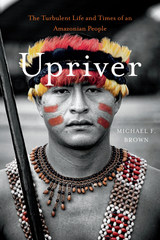 Upriver: The Turbulent Life and Times of an Amazonian People
Michael F. Brown
Harvard University Press, 2014 In this remarkable story of one man’s encounter with an indigenous people of Peru, Michael Brown guides his readers upriver into a contested zone of the Amazonian frontier, where more than 50,000 Awajún—renowned for their pugnacity and fierce independence—remain determined, against long odds, to live life on their own terms.
When Brown took up residence with the Awajún in 1976, he knew little about them other than their ancestors’ reputation as fearsome headhunters. The fledgling anthropologist was immediately impressed by his hosts’ vivacity and resourcefulness. But eventually his investigations led him into darker corners of a world where murderous vendettas, fear of sorcery, and a shocking incidence of suicide were still common. Peru’s Shining Path insurgency in the 1980s forced Brown to refocus his work elsewhere. Revisiting his field notes decades later, now with an older man’s understanding of life’s fragility, Brown saw a different story: a tribal society trying, and sometimes failing, to maintain order in the face of an expanding capitalist frontier. Curious about how the Awajún were faring, Brown returned to the site in 2012, where he found a people whose combative self-confidence had led them to the forefront of South America’s struggle for indigenous rights.
Written with insight, sensitivity, and humor, Upriver paints a vivid picture of a rapidly growing population that is refashioning its warrior tradition for the twenty-first century. Embracing literacy and digital technology, the Awajún are using hard-won political savvy to defend their rainforest home and right of self-determination.
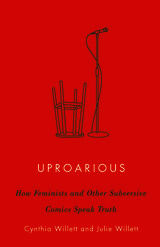 Uproarious: How Feminists and Other Subversive Comics Speak Truth
Cynthia Willett
University of Minnesota Press, 2019 A radical new approach to humor, where traditional targets become its agents
Humor is often dismissed as cruel ridicule or harmless fun. But what if laughter is a vital force to channel rage against patriarchy, Islamophobia, or mass incarceration? To create moments of empathy and dialogue between Black Lives Matter and the police? These and other such questions are at the heart of this powerful reassessment of humor. Placing theorists in conversation with comedians, Uproarious offers a full-frontal approach to the very foundation of comedy and its profound political impact.
Here Cynthia Willett and Julie Willett address the four major theories of humor—superiority, relief, incongruity, and social play—through the lens of feminist and game-changing comics such as Wanda Sykes, Margaret Cho, Hannah Gadsby, Hari Kondabolu, and Tig Notaro. They take a radical and holistic approach to the understanding of humor, particularly of humor deployed by those from groups long relegated to the margins, and propose a powerful new understanding of humor as a force that can engender politically progressive social movements. Drawing on a range of cross-disciplinary sources, from philosophies and histories of humor to the psychology and physiology of laughter to animal studies, Uproarious offers a richer understanding of the political and cathartic potential of humor.
A major new contribution to a wider dialogue on comedy, Uproarious grounds for us explorations of outsider humor and our golden age of feminist comics—showing that when women, prisoners, even animals, laugh back, comedy along with belly laughs forge new identities and alter the political climate.
Uprooted Children: The Early Life of Migrant Farm Workers
Robert Coles
University of Pittsburgh Press, 1970 Uprooted Children is a study of migrant farm children in Florida and the eastern seaboard. It describes how black, white, and Mexican-American children of migrant families grow up in rural America under conditions of extreme hardship and how they come to terms with the world and themselves. In preparation for this book, Dr. Coles spent years among migrants, drawing his research through interviews and every day life.
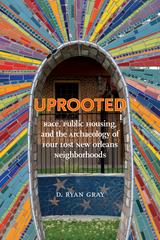 Uprooted: Race, Public Housing, and the Archaeology of Four Lost New Orleans Neighborhoods
D. Ryan Gray
University of Alabama Press, 2020 The archaeology of four New Orleans neighborhoods that were replaced by public housing projects
Uprooted: Race, Public Housing, and the Archaeology of Four Lost New Orleans Neighborhoods uses archaeological research on four neighborhoods that were razed during the construction of public housing in World War II–era New Orleans. Although each of these neighborhoods was identified as a “slum” historically, the material record challenges the simplicity of this designation. D. Ryan Gray provides evidence of the inventiveness of former residents who were marginalized by class, color, or gender and whose everyday strategies of survival, subsistence, and spirituality challenged the city’s developing racial and social hierarchies.
These neighborhoods initially appear to have been quite distinct, ranging from the working-class Irish Channel, to the relatively affluent Creole of Color–dominated Lafitte area, to the former location of Storyville, the city’s experiment in semilegal prostitution. Archaeological and historical investigations suggest that race was the crucial factor in the areas’ selection for clearance. Each neighborhood manifested a particular perceived racial disorder, where race intersected with ethnicity, class, or gender in ways that defied the norms of Jim Crow segregation.
Gray’s research makes use of both primary documents—including census records, city directories, and even the brothel advertising guides called “Blue Books”—and archaeological data to examine what this entailed at a variety of scales, reconstructing narratives of the households and communities affected by clearance. Public housing, both in New Orleans and elsewhere, imposed a new kind of control on urban life that had the effect of making cities both more segregated and less equal. The story of the neighborhoods that were destroyed provides a reminder that their erasure was not an inevitable outcome, and that a more equitable and just city is still possible today. A critical examination of the rise of public housing helps inform the ongoing debates over its demise, especially in light of the changing face of post-Katrina New Orleans.
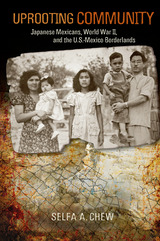 Uprooting Community: Japanese Mexicans, World War II, and the U.S.-Mexico Borderlands
Selfa A. Chew
University of Arizona Press, 2015 Joining the U.S.’ war effort in 1942, Mexican President Manuel Ávila Camacho ordered the dislocation of Japanese Mexican communities and approved the creation of internment camps and zones of confinement. Under this relocation program, a new pro-American nationalism developed in Mexico that scripted Japanese Mexicans as an internal racial enemy. In spite of the broad resistance presented by the communities wherein they were valued members, Japanese Mexicans lost their freedom, property, and lives.
In Uprooting Community, Selfa A. Chew examines the lived experience of Japanese Mexicans in the U.S.-Mexico borderlands during World War II. Studying the collaboration of Latin American nation-states with the U.S. government, Chew illuminates the efforts to detain, deport, and confine Japanese residents and Japanese-descent citizens of Latin American countries during World War II. These narratives challenge the notion that Japanese Mexicans enjoyed the protection of the Mexican government during the war and refute the mistaken idea that Japanese immigrants and their descendants were not subjected to internment in Mexico during this period. Through her research, Chew provides evidence that, despite the principles of racial democracy espoused by the Mexican elite, Japanese Mexicans were in fact victims of racial prejudice bolstered by the political alliances between the United States and Mexico.
The treatment of the ethnic Japanese in Mexico was even harsher than what Japanese immigrants and their children in the United States endured during the war, according to Chew. She argues that the number of persons affected during World War II extended beyond the first-generation Japanese immigrants “handled” by the Mexican government during this period, noting instead that the entire multiethnic social fabric of the borderlands was reconfigured by the absence of Japanese Mexicans.
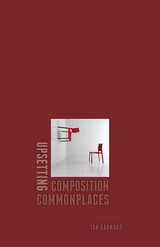 Upsetting Composition Commonplaces
Ian Barnard
Utah State University Press, 2014 In Upsetting Composition Commonplaces, Ian Barnard argues that composition still retains the bulk of instructional practices that were used in the decades before poststructuralist theory discredited them. While acknowledging that some of the foundational insights of poststructuralist theory can be difficult to translate to the classroom, Barnard upends several especially intransigent tenets that continue to influence the teaching of writing and how students are encouraged to understand writing. Using six major principles of writing classrooms and textbooks—clarity, intent, voice, ethnography, audience, and objectivity—Barnard looks at the implications of poststructuralist theory for pedagogy. While suggesting some evocative poststructuralist pedagogical practices, the author focuses on diagnosing the fault lines of composition's refusal of poststructuralism rather than on providing "solutions” in the form of teaching templates. Upsetting Composition Commonplaces addresses the need to more effectively engage in poststructuralist concepts in composition in an accessible and engaging voice that will advance the conversation about relations between the theory and teaching of writing.
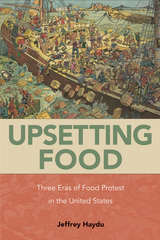 Upsetting Food: Three Eras of Food Protests in the United States
Jeffrey Haydu
Temple University Press, 2021 Battle lines have long been drawn over how food is produced, what food is made available to whom, and how best to protect consumers from risky or unhealthy food. Jeffrey Haydu resurrects the history of food reform and protest in Upsetting Food, showing how activists defined food problems, articulated solutions, and mobilized for change in the United States. Haydu’s sociological history starts in the 1830s with diet reformer Sylvester Graham, who blamed alcohol and store-bought bread—signs of a commercializing urban society—for poor health and moral decline. His successors at the turn of the twentieth century rallied against impure food and pushed for women to be schooled in scientific food preparation and nutrition. Decades later, in the 1960s and ’70s, a grassroots movement for organic food battled commercial food production in favor of food grown ecologically, by small farmers, and without artificial chemicals. Each campaign raised doubts about food safety, health, and transparency, reflecting how a capitalist system can undermine trust in food. But Haydu also considers how each movement reflects the politics, inequalities, and gender relations of its time. And he traces how outcomes of each campaign laid the groundwork for the next. The three eras thus come together as parts of a single, recurring food movement. Upsetting Food offers readers a historical background to better understand contemporary and contentious food politics.
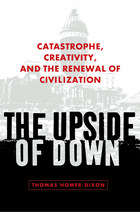 The Upside of Down: Catastrophe, Creativity, and the Renewal of Civilization
Thomas Homer-Dixon
Island Press, 2006 Environmental disasters. Terrorist wars. Energy scarcity. Is this the world's fate, a downward spiral that ultimately spells the collapse of society? Perhaps, says acclaimed author Thomas Homer-Dixon—or perhaps these crises can actually lead to renewal for ourselves and planet earth. The Upside of Down takes the reader on a mind-stretching tour of societies' management, or mismanagement, of disasters over time. From the demise of ancient Rome to contemporary climate change, this spellbinding book analyzes what happens when multiple crises compound to cause what the author calls "synchronous failure." But crisis doesn't have to mean total calamity. Through catagenesis, or creative, bold reform in the wake of breakdown, it is possible to
reinvent our future. Drawing on the worlds of archeology, poetry, politics, science, and economics, The Upside of Down is certain to provoke controversy and stir imaginations across the globe. The author's wide-ranging expertise makes his insights and proposals particularly acute, as people of all nations try to grapple with how we can survive tomorrow's inevitable shocks to our global system. There is no guarantee of success, but there are ways to begin thinking about a better world, and The Upside of Down is the ideal place to start thinking.
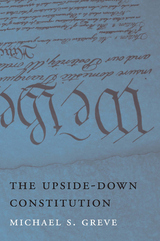 The Upside-Down Constitution
Michael S. Greve
Harvard University Press, 2012 Over the course of the nation’s history, the Constitution has been turned upside-down, Michael Greve argues in this provocative book. The Constitution’s vision of a federalism in which local, state, and federal government compete to satisfy the preferences of individuals has given way to a cooperative, cartelized federalism that enables interest groups to leverage power at every level for their own benefit. Greve traces this inversion from the Constitution’s founding through today, dispelling much received wisdom along the way.
The Upside-Down Constitution shows how federalism’s transformation was a response to states’ demands, not an imposition on them. From the nineteenth-century judicial elaboration of a competitive federal order, to the New Deal transformation, to the contemporary Supreme Court’s impoverished understanding of constitutional structure, and the “devolution” in vogue today, Greve describes a trend that will lead to more government and fiscal profligacy, not less. Taking aim at both the progressive heirs of the New Deal and the vocal originalists of our own time, The Upside-Down Constitution explains why the current fiscal crisis will soon compel a fundamental renegotiation of a new federalism grounded in constitutional principles.
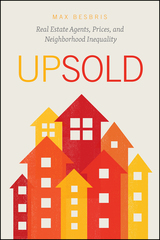 Upsold: Real Estate Agents, Prices, and Neighborhood Inequality
Max Besbris
University of Chicago Press, 2020 What do you want for yourself in the next five, ten years? Do your plans involve marriage, kids, a new job? These are the questions a real estate agent might ask in an attempt to unearth information they can employ to complete a sale, which as Upsold shows, often results in upselling. In this book, sociologist Max Besbris shows how agents successfully upsell, inducing buyers to spend more than their initially stated price ceilings. His research reveals how face-to-face interactions influence buyers’ ideas about which neighborhoods are desirable and which are less-worthy investments and how these preferences ultimately contribute to neighborhood inequality.
Stratification defines cities in the contemporary United States. In an era marked by increasing income segregation, one of the main sources of this inequality is housing prices. A crucial part of wealth inequality, housing prices are also directly linked to the uneven distribution of resources across neighborhoods and to racial and ethnic segregation. Upsold shows how the interactions between real estate agents and buyers make or break neighborhood reputations and construct neighborhoods by price.
Employing revealing ethnographic and quantitative housing data, Besbris outlines precisely how social influences come together during the sales process. In Upsold, we get a deep dive into the role that the interactions with sales agents play in buyers’ decision-making and how neighborhoods are differentiated, valorized, and deemed to be worthy of a certain price.
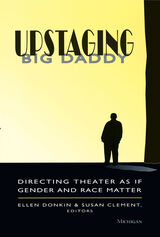 Upstaging Big Daddy: Directing Theater as if Gender and Race Matter
Ellen Donkin and Susan Clement, Editors
University of Michigan Press, 1993 The essays in Upstaging Big Daddy: Directing Theater as if Gender and Race Matter argue that directing, as it has been taught and handed down over the years, has worked in the service of a body of dramatic literature that has routinely minimized or distorted the lives of women, people of color, gay men, and lesbians. The book’s contributors see directing not as an ideologically neutral set of skills, but as something that has served historically to preserve existing forms of authority.
What happens, then, when a feminist who directs for the theater decides that there is something called a feminist director, someone who sees her job as protesting and intervening in the existing system of representation? The contributors to this volume provide a wide range of answers, in original essays that disrupt traditional approaches of directing by showing how feminist theory might be applied in practice.
Essays and interviews by a wide variety of directors, scholars, and other theater specialists offer fresh new models for thinking about directing. The collection includes essays on African-American theater, feminist “classics,” and male directors working on feminist plays, as well as concrete suggestions for directing a variety of plays, from works by Shakespeare and Euripides to those by Caryl Churchill, Aishah Rahman, and Helene Cixous. The theoretical material, drawing from a wide range of contemporary critics and theorists, has been written with the director in mind, partly for the purpose of analyzing texts but also for inspiring creative directorial and design solutions.
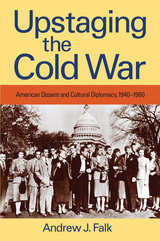 Upstaging the Cold War: American Dissent and Cultural Diplomacy, 1940-1960
Andrew J. Falk
University of Massachusetts Press, 2010 Traditional interpretations of the 1950s have emphasized how American anti-communists deployed censorship and the blacklist to silence dissent, particularly in the realm of foreign policy. Yet those efforts at repression did not always succeed. Throughout the early years of the Cold War, a significant number of writers and performers continued to express controversial views about international relations in Hollywood films, through the new medium of television, on the Broadway stage, and from behind the scenes.
By promoting superpower cooperation, decolonization, nuclear disarmament, and other taboo causes, dissident artists such as Lillian Hellman, Arthur Miller, Rod Serling, Dalton Trumbo, Reginald Rose, and Paddy Chayefsky managed both to stretch the boundaries of Cold War ideology and to undermine some of its basic assumptions. Working at times under assumed names and in some cases outside the United States, they took on the role of informal diplomats who competed with Washington in representing America to the world.
Ironically, the dissidents' international appeal eventually persuaded the U.S. foreign policy establishment that their unconventional views could be an asset in the Cold War contest for "hearts and minds," and their artistic work an effective means to sell American values and culture abroad. By the end of the 1950s, the Eisenhower administration not only appropriated the work of these talented artists but enlisted some of them to serve as official voices of Cold War cultural diplomacy.
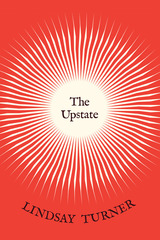 The Upstate
Lindsay Turner
University of Chicago Press, 2023 Poetry that sings of southern Appalachian beauty and crisis.
Set in a landscape of red sunsets and wildfire smoke, Queen Anne’s lace on the roadsides, and toxic chemicals in the watershed, Lindsay Turner’s The Upstate is a book about southern Appalachia in a contemporary moment of change and development. Layering a personal lyric voice with a broader awareness of labor issues and political and ecological crises, The Upstate redefines a regional poetics as one attuned to national and global systems. These poems observe and emote, mourning acts of devastation and raging in their own quiet way against their continuation.
The poems in The Upstate arise from moments of darkness and desperation, mobilizing a critical intelligence against the status quo of place and history, all while fiercely upholding belief in the role of poetry to affect these conditions. Turner’s poems weave spells around beloved places and people, yearning to shield them from destruction and to profess faith in the delicate beauties of the world at hand.
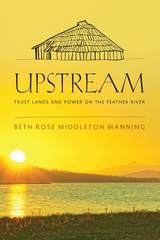 Upstream: Trust Lands and Power on the Feather River
Beth Rose Middleton Manning
University of Arizona Press, 2018 From Mandan, Hidatsa, and Arikara lands in South Dakota; to Cherokee lands in Tennessee; to Sin-Aikst, Lakes, and Colville lands in Washington; to Chemehuevi lands in Arizona; to Maidu, Pit River, and Wintu lands in northern California, Native lands and communities have been treated as sacrifice zones for national priorities of irrigation, flood control, and hydroelectric development.
Upstream documents the significance of the Allotment Era to a long and ongoing history of cultural and community disruption. It also details Indigenous resistance to both hydropower and disruptive conservation efforts. With a focus on northeastern California, this book highlights points of intervention to increase justice for Indigenous peoples in contemporary natural resource policy making.
Author Beth Rose Middleton Manning relates the history behind the nation’s largest state-built water and power conveyance system, California’s State Water Project, with a focus on Indigenous resistance and activism. She illustrates how Indigenous history should inform contemporary conservation measures and reveals institutionalized injustices in natural resource planning and the persistent need for advocacy for Indigenous restitution and recognition.
Upstream uses a multidisciplinary and multitemporal approach, weaving together compelling stories with a study of placemaking and land development. It offers a vision of policy reform that will lead to improved Indigenous futures at sites of Indigenous land and water divestiture around the nation.
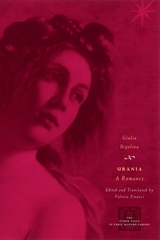 Urania: A Romance
Giulia Bigolina
University of Chicago Press, 2004 Presented for the first time in a critical English edition, Urania: A Romance provides modern readers with a rare glimpse into the novel and novella forms at a time when narrative genres were not only being invented but, in the hands of women like Giulia Bigolina (1518?-1569?), used as vehicles for literary experimentation.
The first known prose romance written by a woman in Italian, Bigolina's Urania centers on the monomaniacal love of a female character falling into melancholy when her beloved leaves her for a more beautiful woman. A tale that includes many of the conventions that would later become standards of the genre—cross-dressing, travel, epic skirmishes, and daring deeds—Urania also contains the earliest treatise on the worth of women.
Also included in this volume, the novella Giulia Camposampiero is the only extant part of a probable longer narrative written in the style of the Decameron. While employing some of those same gender and role reversals as Urania, including the privileging of heroic constancy in both men and women, it chronicles the tribulations that a couple undergoes until their secret marriage is publicly recognized.
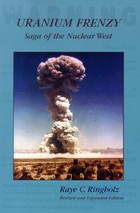 Uranium Frenzy: Saga of the Nuclear West
Raye C. Ringholz
Utah State University Press, 2002 Now expanded to include the story of nuclear testing and its consequences, Uranium Frenzy has become the classic account of the uranium rush that gripped the Colorado Plateau region in the 1950s. Instigated by the U.S. government's need for uranium to fuel its growing atomic weapons program, stimulated by Charlie Steen's lucrative Mi Vida strike in 1952, manned by rookie prospectors from all walks of life, and driven to a fever pitch by penny stock promotions, the boom created a colorful era in the Four Corners region and Salt Lake City (where the stock frenzy was centered) but ultimately went bust. The thrill of those exciting times and the good fortune of some of the miners were countered by the darker aspects of uranium and its uses. Miners were not well informed regarding the dangers of radioactive decay products. Neither the government nor anyone else expended much effort educating them or protecting their health and safety. The effects of exposure to radiation in poorly ventilated mines appeared over time.
The uranium boom is only part of the larger story of atomic weapons testing and its impact in the western United States. Nuclear explosions at the Nevada Test Site not only spurred uranium mining, they also had a disastrous impact on many Americans: downwinders in the eastward path of radiation clouds, military observers and guinea pigs in exposed positions, and Navajo and other uranium mill workers all became victims, as deaths from cancer and other radiation-caused diseases reached much higher than normal rates among them. Tons of radioactive waste left by mines, mills, and the nuclear industry and how to dispose of them are other nagging legacies of the nuclear era. Recent decades have brought multiple attempts by victims to obtain compensation from the federal government and other legal battles over disposal of nuclear waste. When courts refused to grant relief to downwinders and others, Congress eventually interceded and legislated compensation for a limited number of victims able to meet strict criteria, but did not adequately fund the program. Recently, Congress attempted to fix this shortfall, but in the meantime many downwinders and others holding compensation IOUs had died. Congressional and other efforts to dispose of waste have lately focused on Nevada and Utah, two states all too familiar with nuclear issues and reluctant to take on further radioactive burdens.
Uranium Matters: Central European Uranium in International Politics, 19001960
Rainer Karlsch
Central European University Press, 2008 Examines the impact of the Czechoslovak and East German uranium industries on local politics and on societies, particularly in the decade or so after the end of the Second World War. The Erzgebirge – the Ore Mountains – on the border of Czechoslovakia and East Germany of the time, was the oldest uranium mine in the world, whose important resources were badly needed for Stalin's atomic bomb.
Uranus
Jay T. Bergstralh
University of Arizona Press, 1991 Uranus occupies a unique niche in the history of western thought; for while the planets from Mercury to Saturn had been known since pre-antiquity, Uranus was the first to be discovered, in 1781, through scientific investigation. Contemporary investigation of Uranus culminated in the Voyager 2 encounter in 1986. The results of that achievement, as well of concurrent research on the planet, are reviewed by 84 international authorities in this massive volume. Because Uranus' remoteness has prevented its being studied as intensively by earth-based observation as have other members of the solar system, most of what is known about the planet—its magnetic field and magnetosphere and satellites—were learned from the Voyager data, which is viewed here from a variety of perspectives. While the book is intended to serve as a comprehensive review, it also reports a substantial amount of original research results not previously published.
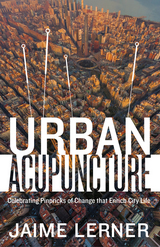 Urban Acupuncture
Jaime Lerner
Island Press, 2016 During his three terms as mayor of Curitiba, Brazil in the 1970s and ‘80s, architect and urbanist Jaime Lerner transformed his city into a global model of the sustainable and livable community. From the pioneering Bus Rapid Transit system to parks designed to catch runoff and reduce flooding and the creation of pedestrian-only zones, Lerner has been the driving force behind a host of innovative urban projects. In more than forty years of work in cities around the globe, Lerner has found that changes to a community don’t need to be large-scale and expensive to have a transformative impact—in fact, one block, park, or a single person can have an outsized effect on life in the surrounding city.
In Urban Acupuncture, Lerner celebrates these “pinpricks” of urbanism—projects, people, and initiatives from around the world that ripple through their communities to uplift city life. With meditative and descriptive prose, Lerner brings readers around the world to streets and neighborhoods where urban acupuncture has been practiced best, from the bustling La Boqueria market in Barcelona to the revitalization of the Cheonggyecheon River in Seoul, South Korea. Through this journey, Lerner invites us to re-examine the true building blocks of vibrant communities—the tree-lined avenues, night vendors, and songs and traditions that connect us to our cities and to one another.
Urban Acupuncture is the first of Jaime Lerner’s visionary work to be published in English. It is a love letter to the elements that make a street hum with life or a neighborhood feel like home, penned by one of the world’s most successful advocates for sustainable and livable urbanism.
 The Urban Apparatus: Mediapolitics and the City
Reinhold Martin
University of Minnesota Press, 2017 Urbanization is a system of power and knowledge, and today’s city functions through the expansive material infrastructures of the urban order. In The Urban Apparatus, Reinhold Martin analyzes urbanization and the contemporary city in aesthetic, socioeconomic, and mediapolitical terms. He argues that understanding the city as infrastructure reveals urbanization to be a way of imparting functional, aesthetic, and cognitive order to a contradictory, doubly bound neoliberal regime. Blending critical philosophy, political theory, and media theory, The Urban Apparatus explores how the aesthetics of cities and their political economies overlap. In a series of ten essays, with a detailed theoretical introduction, Martin explores questions related to urban life, drawn from a wide range of global topics—from the fiscal crisis in Detroit to speculative development in Mumbai to the landscape of Mars, from discussions of race and the environment to housing and economic inequality. Each essay proposes a particular “mediator” (or a material complex) that is shaped by imaginative practices, each answering the question “What is a city, today?” The Urban Apparatus serves as an “urban” bookend to the architectural questions explored by Martin in his earlier book Utopia’s Ghost, and ultimately offers readers a way to think politically about urbanization.
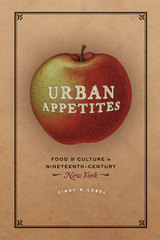 Urban Appetites: Food and Culture in Nineteenth-Century New York
Cindy R. Lobel
University of Chicago Press, 2014 Glossy magazines write about them, celebrities give their names to them, and you’d better believe there’s an app (or ten) committed to finding you the right one. They are New York City restaurants and food shops. And their journey to international notoriety is a captivating one. The now-booming food capital was once a small seaport city, home to a mere six municipal food markets that were stocked by farmers, fishermen, and hunters who lived in the area. By 1890, however, the city’s population had grown to more than one million, and residents could dine in thousands of restaurants with a greater abundance and variety of options than any other place in the United States.
Historians, sociologists, and foodies alike will devour the story of the origins of New York City’s food industry in Urban Appetites. Cindy R. Lobel focuses on the rise of New York as both a metropolis and a food capital, opening a new window onto the intersection of the cultural, social, political, and economic transformations of the nineteenth century. She offers wonderfully detailed accounts of public markets and private food shops; basement restaurants and immigrant diners serving favorites from the old country; cake and coffee shops; and high-end, French-inspired eating houses made for being seen in society as much as for dining. But as the food and the population became increasingly cosmopolitan, corruption, contamination, and undeniably inequitable conditions escalated. Urban Appetites serves up a complete picture of the evolution of the city, its politics, and its foodways.
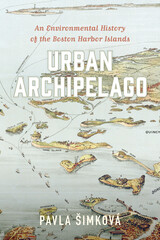 Urban Archipelago: An Environmental History of the Boston Harbor Islands
Pavla Šimková
University of Massachusetts Press, 2021 The Boston Harbor Islands have been called Boston's "hidden shores." While some are ragged rocks teeming with coastal wildlife, such as oystercatchers and harbor seals, others resemble manicured parks or have the appearance of wooded hills rising gently out of the water. Largely ignored by historians and previously home to prisons, asylums, and sewage treatment plants, this surprisingly diverse ensemble of islands has existed quietly on the urban fringe over the last four centuries. Even their latest incarnation as a national park and recreational hub has emphasized their separation from, rather than their connection to, the city.
In this book, Pavla Šimková reinterprets the Boston Harbor Islands as an urban archipelago, arguing that they have been an integral part of Boston since colonial days, transformed by the city's changing values and catering to its current needs. Drawing on archival sources, historic maps and photographs, and diaries from island residents, this absorbing study attests that the harbor islands' story is central to understanding the ways in which Boston has both shaped and been shaped by its environment over time.
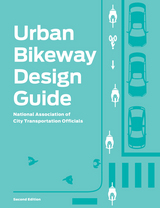 Urban Bikeway Design Guide, Second Edition
National Association of City Transportation Officials
Island Press, 2014 The NACTO Urban Bikeway Design Guide, Second Edition, is based on the experience of the best cycling cities in the world. Completely re-designed with an accessible, four-color layout, this second edition continues to build upon the fast-changing state of the practice at the local level. The designs in this book were developed by cities for cities, since unique urban streets require innovative solutions.
To create the Guide, the authors conducted an extensive worldwide literature search from design guidelines and real-life experience. They worked closely with a panel of urban bikeway planning professionals from NACTO member cities and from numerous other cities worldwide, as well as traffic engineers, planners, and academics with deep experience in urban bikeway applications. The Guide offers substantive guidance for cities seeking to improve bicycle transportation in places where competing demands for the use of the right-of-way present unique challenges.
First and foremost, the NACTO Urban Bikeway Design Guide, Second Edition will help practitioners make good decisions about urban bikeway design. The treatments outlined in this updated Guide are based on real-life experience in the world's most bicycle friendly cities and have been selected because of their utility in helping cities meet their goals related to bicycle transportation. Praised by Former Transportation Secretary Ray LaHood as an “extraordinary piece of work,” the Guide is an indispensable tool every planner must have for their daily transportation design work.
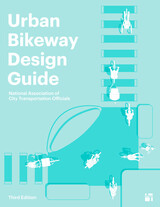 Urban Bikeway Design Guide, Third Edition
National Association of City Transportation Officials, NACTO
Island Press, 2024 Over a decade ago, the first edition of the NACTO Urban Bikeway Design Guide sparked a design revolution in cities. City streets are now understood as key elements in confronting the intertwined safety, equity, and climate crises in North America.
The completely revised and updated third edition of the NACTO Urban Bikeway Design Guide sets a new standard for street design in North America. Developed for cities, by cities, the new guide is more than a permission slip for better street design--it's a prescription for safe, connected, equitable bike networks. It captures lessons learned and emerging practices to set a new bar for the design of city streets.
The NACTO Urban Bikeway Design Guide, Third Edition, will help city leaders and street designers meet the needs of our time. New topics address critical gaps in existing guidance for planning and project development. Contextual guidance for bikeway design encompasses the needs of a wider swath of potential riders, across genders, ages, races, ethnicities, incomes, and abilities. The guide offers substantive guidance for safe intersection design, with a focus on conflict reduction. It is a blueprint for implementing safe, connected, and equitable bike networks. Every transportation professional, from design to maintenance and from field staff to executives, needs a copy for their daily work.
Praise for the second edition
“NACTO's Urban Bikeway Design Guide gives American planners and designers the tools they need to make cycling accessible to more people.”
—Janette Sadik-Khan, former New York City Transportation Commissioner
“This is an extraordinary piece of work that's long overdue.”
—Ray LaHood, former United States Secretary of Transportation
“The guide will serve as an essential blueprint for safe, active, multi-modal streets.”
—Gabe Klein, former Chicago Transportation Commissioner
“A Must-read… Landscape architects, planners, and city officials should find this guide invaluable. Anyone who advocates for increasing bicycle infrastructure in our cities will find many useful tools for implementing best practice infrastructure.”
―ASLA's The Dirt
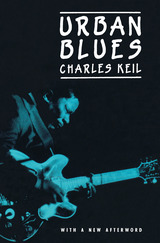 Urban Blues
Charles Keil
University of Chicago Press, 1968 Charles Keil examines the expressive role of blues bands and performers and stresses the intense interaction between performer and audience. Profiling bluesmen Bobby Bland and B. B. King, Keil argues that they are symbols for the black community, embodying important attitudes and roles—success, strong egos, and close ties to the community. While writing Urban Blues in the mid-1960s, Keil optimistically saw this cultural expression as contributing to the rising tide of raised political consciousness in Afro-America. His new Afterword examines black music in the context of capitalism and black culture in the context of worldwide trends toward diversification.
"Enlightening. . . . [Keil] has given a provocative indication of the role of the blues singer as a focal point of ghetto community expression."—John S. Wilson, New York Times Book Review "A terribly valuable book and a powerful one. . . . Keil is an original thinker and . . . has offered us a major breakthrough."—Studs Terkel, Chicago Tribune
"[Urban Blues] expresses authentic concern for people who are coming to realize that their past was . . . the source of meaningful cultural values."—Atlantic
"An achievement of the first magnitude. . . . He opens our eyes and introduces a world of amazingly complex musical happening."—Robert Farris Thompson, Ethnomusicology
"[Keil's] vigorous, aggressive scholarship, lucid style and sparkling analysis stimulate the challenge. Valuable insights come from treating urban blues as artistic communication."—James A. Bonar, Boston Herald
 Urban Bush Women: Twenty Years of African American Dance Theater, Community Engagement, and Working It Out
Nadine George-Graves
University of Wisconsin Press, 2010 Provocative, moving, powerful, explicit, strong, unapologetic. These are a few words that have been used to describe the groundbreaking Brooklyn-based dance troupe Urban Bush Women. Their unique aesthetic borrows from classical and contemporary dance techniques and theater characterization exercises, incorporates breath and vocalization, and employs space and movement to instill their performances with emotion and purpose. Urban Bush Women concerts are also deeply rooted in community activism, using socially conscious performances in places around the country—from the Kennedy Center, the Lincoln Center, and the Joyce, to community centers and school auditoriums—to inspire audience members to engage in neighborhood change and challenge stereotypes of gender, race, and class.
Nadine George-Graves presents a comprehensive history of Urban Bush Women since their founding in 1984. She analyzes their complex work, drawing on interviews with current and former dancers and her own observation of and participation in Urban Bush Women rehearsals. This illustrated book captures the grace and power of the dancers in motion and provides an absorbing look at an innovative company that continues to raise the bar for socially conscious dance.
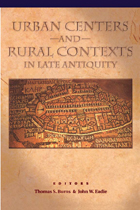 Urban Centers and Rural Contexts in Late Antiquity
Thomas S. Burns
Michigan State University Press, 2001 Recent publications on urbanism and the rural environment in Late Antiquity, most of which explore a single region or narrow chronological niche, have emphasized either textual or archeological evidence. None has attempted the more ambitious task of bringing together the full range of such evidence within a multiregional perspective and around common themes. Urban Centers and Rural Contexts seeks to redress this omission.
While ancient literature and the physical remains of cities attest to the power that urban values held over the lives of their inhabitants, the rural areas in which the majority of imperial citizens lived have not been well served by the historical record. Only recently have archeological excavations and integrated field surveys sufficiently enhanced our knowledge of the rural contexts to demonstrate the continuing interdependence of urban centers and rural communities in Late Antiquity. These new data call into question the conventional view that this interdependence progressively declined as a result of governmental crises, invasions, economic dislocation, and the success of Christianization.
The essays in this volume require us to abandon the search for a single model of urban and rural change; to reevaluate the cities and towns of the Empire as centers of habitation, rather than archeological museums; and to reconsider the evidence of continuous and pervasive cultural change across the countryside. Deploying a wide range of material as well as literary evidence, the authors provide access not only into the world of élites, but also to the scarcely known lives of those without a voice in the literature, those men and women who worked in the shops, labored in the fields, and humbled themselves before their gods. They bring us closer to the complexity of life in late ancient communities and, in consequence, closer to both urban and rural citizens.
Urban Childhoods: Growing up in Inequality and Hope
Edited by Claire Cameron
University College London, 2025 A guide to supporting children’s wellbeing in cities, through their own perspectives.
Bringing together insights from critical childhood studies, urban studies, and child public health, Urban Childhoods examines the distinct experiences of children growing up in English cities with an emphasis on centering the voices of children and their families. The volume explores how to prioritize children’s wellbeing in urban planning, focusing primarily on children’s definitions of what they need to thrive: stable relationships, access to engaging activities, and having a voice in decisions that affect their lives. Alongside the more theoretical literature on urban childhood, authors regularly reference strategies from a major prevention program conducted in two English cities between 2019 and 2025.
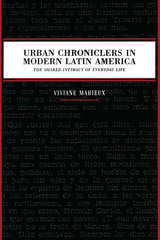 Urban Chroniclers in Modern Latin America: The Shared Intimacy of Everyday Life
By Viviane Mahieux
University of Texas Press, 2011 An unstructured genre that blends high aesthetic standards with nonfiction commentary, the journalistic crónica, or chronicle, has played a vital role in Latin American urban life since the nineteenth century. Drawing on extensive archival research, Viviane Mahieux delivers new testimony on how chroniclers engaged with modernity in Mexico City, Buenos Aires, and São Paulo during the 1920s and 1930s, a time when avant-garde movements transformed writers' and readers' conceptions of literature. Urban Chroniclers in Modern Latin America: The Shared Intimacy of Everyday Life examines the work of extraordinary raconteurs Salvador Novo, Cube Bonifant, Roberto Arlt, Alfonsina Storni, and Mário de Andrade, restoring the original newspaper contexts in which their articles first emerged. Each of these writers guided their readers through a constantly changing cityscape and advised them on matters of cultural taste, using their ties to journalism and their participation in urban practice to share accessible wisdom and establish their role as intellectual arbiters. The intimate ties they developed with their audience fostered a permeable concept of literature that would pave the way for overtly politically engaged chroniclers of the 1960s and 1970s. Providing comparative analysis as well as reflection on the evolution of this important genre, Urban Chroniclers in Modern Latin America is the first systematic study of the Latin American writers who forged a new reading public in the early twentieth century.
Urban Cinematics: Understanding Urban Phenomena through the Moving Image
Edited by François Penz and Andong Lu
Intellect Books, 2011 Urban Cinematics surveys the mechanisms by which cinema contributes to our understanding of cities to address two key issues: How do filmmakers make use of urban spaces, and how do urban spaces make use of cinema? Merging the disciplines of architecture, landscape design, and urban planning with film studies, this book explores the potential of cinema as a tool to investigate the communal narratives of cities. A series of dialogues with filmmakers rounds out this insightful and methodologically innovative volume.
Urban Claims and the Right to the City: Grassroots Perspectives from Salvador da Bahia and London
Edited by Julian Walker, Marcos Bau Carvalho, and Ilinca Diaconescu
University College London, 2020 Urban Claims and the Right to the City explores how contested processes of urban development, and the rights of city dwellers, are understood and interpreted from the perspective of women and men working, in different ways, at the grassroots in Salvador da Bahia, Brazil, and London, UK. In doing so, it represents the grounded voices of authors whose work and lives mean that they engage, on a daily basis, with issues related to housing and spatial rights, and identity struggles around race, gender, disability, sexuality, citizenship, and class.
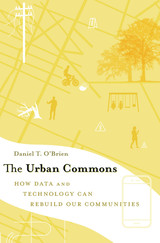 The Urban Commons: How Data and Technology Can Rebuild Our Communities
Daniel T. O'Brien
Harvard University Press, 2018 The future of smart cities has arrived, courtesy of citizens and their phones. To prove it, Daniel T. O’Brien explains the transformative insights gleaned from years researching Boston’s 311 reporting system, a sophisticated city management tool that has revolutionized how ordinary Bostonians use and maintain public spaces. Through its phone service, mobile app, website, and Twitter account, 311 catalogues complaints about potholes, broken street lights, graffiti, litter, vandalism, and other issues that are no one citizen’s responsibility but affect everyone’s quality of life. The Urban Commons offers a pioneering model of what modern digital data and technology can do for cities like Boston that seek both prosperous growth and sustainability.
Analyzing a rich trove of data, O’Brien discovers why certain neighborhoods embrace the idea of custodianship and willingly invest their time to monitor the city’s common environments and infrastructure. On the government’s side of the equation, he identifies best practices for implementing civic technologies that engage citizens, for deploying public services in collaborative ways, and for utilizing the data generated by these efforts.
Boston’s 311 system has narrowed the gap between residents and their communities, and between constituents and local leaders. The result, O’Brien shows, has been the creation of more effective policy and practices that reinvigorate the way citizens and city governments approach their mutual interests. By unpacking when, why, and how the 311 system has worked for Boston, The Urban Commons reveals the power and potential of this innovative system, and the lessons learned that other cities can adapt.
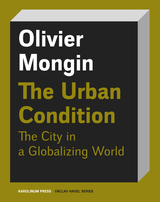 The Urban Condition
Olivier Mongin
Karolinum Press, 2016 The first installment in Karolinum’s new Václav Havel Series—which aims to continue the philosophical discourse of that thinker, playwright, dissident, and president—this book asks whether it will be possible to reestablish urban spaces that are in tune with our times. By recalling the distinctive elements that comprise the urban experience, Olivier Mongin lays the basis for reflection on the contemporary urban condition. We live in an epoch in which information exchange takes place according to flows rather than in locations, in which globalization has thrust us into a post-city, post-urban world.
In the past, we were accustomed to seeing the city as a circumscribed space, the setting for cultural, social, and political life that enabled the civic integration of individuals. Now we find ourselves confronted by both seemingly limitless, gigantic megalopolises and the emergence of global networks of entities cut off from a physical environment. The current reconfiguration is cause for concern: Are we witnessing the terminal decline of the urban values that have been a concomitant part of recent human history? Will fragmentation and chaotic urban sprawl inevitably prevail? Are we doomed to lament the lost legacies of the Greek polis, the Renaissance city, Enlightenment Paris, and the great industrial cities of the nineteenth century?
The Urban Crisis: Linking Research to Action
Burton Weisbrod and James C. Worthy
Northwestern University Press, 1997 While the problems facing our cities increase in number and magnitude, there are few coordinated mechanisms in place for effecting change. In an effort to bridge existing gaps in communication and information, Burton A. Weisbrod and James C. Worthy, in conjunction with Northwestern University's Center for Urban Affairs and Policy Research, organized a conference to address these issues. The Urban Crisis collects the papers from this conference, opening a dialogue between academicians and practitioners and offering a blueprint for improving both the process and the substance of policy.
The Urban Crucible: The Northern Seaports and the Origins of the American Revolution, Abridged Edition
Gary B. Nash
Harvard University Press, 1986 The Urban Crucible boldly reinterprets colonial life and the origins of the American Revolution. Through a century-long history of three seaport towns—Boston, New York, and Philadelphia—Gary Nash discovers subtle changes in social and political awareness and describes the coming of the revolution through popular collective action and challenges to rule by custom, law and divine will. A reordering of political power required a new consciousness to challenge the model of social relations inherited from the past and defended by higher classes. While retaining all the main points of analysis and interpretation, the author has reduced the full complement of statistics, sources, and technical data contained in the original edition to serve the needs of general readers and undergraduates.
 Urban Design
Alex Krieger
University of Minnesota Press, 2009 Highlights key issues in contemporary urban design through a discussion of its origins, current state, and future Fifty years ago a landmark conference at Harvard University established urban design as a distinct architectural and planning practice. Today, with the world’s urban population surpassing three billion people, urban design has become more crucial than ever. Indeed, the concerns that initially brought leading architects and city planners together—including concerns over sprawl, pollution, and aging infrastructure—have only intensified over the past half century. In Urban Design, Alex Krieger and William S. Saunders have assembled prominent figures in architecture, planning, and landscape design to look back on the evolution of the discipline of urban design; assess the current state of the field; and anticipate the challenges posed by the unprecedented rate of urbanization, particularly in the developing world, and how the profession will need to adapt in order to confront them. The volume opens with excerpts from transcripts of the 1956 Harvard conference followed by essays that contextualize and critique its assumptions and ambitions. Subsequent essays address such topics as the social conscience of urban design and stake out the competing sensibilities in the field, from New Urbanism to avant-garde. As humanity becomes an urban species to a degree that was unimaginable fifty years ago, this comprehensive volume seeks to encourage today’s designers to draw on the energy and messy vitality of cities in shaping tomorrow’s urban environments.Contributors: Jonathan Barnett, Denise Scott Brown, Joan Busquets, Kenneth Greenberg, John Kaliski, Timothy Love, Fumihiko Maki, Richard Marshall, Eric Mumford, Michelle Provoost, Peter G. Rowe, Edward W. Soja, Richard M. Sommer, Michael Sorkin, Emily Talen, Marilyn Jordan Taylor, Wouter Vanstiphout, Charles Waldheim.
Urban Design Governance: Soft Powers and the European Experience
Matthew Carmona, João Bento, and Tommaso Gabrieli
University College London, 2023 A detailed exploration of the governance of urban design around Europe.
Urban Design Governance takes a deep dive into the governance of urban design around Europe. It examines interventions in the means and processes of designing the built environment as devised by public authorities and other stakeholders across the continent, paying particular attention to the use of soft powers and allied financial mechanisms to influence design quality in the public interest. In doing so, the book traces the scope, use, and effectiveness of the range of informal, non-regulatory urban design governance tools that governments, municipalities, and others have at their disposal.
Urban Design in Western Europe: Regime and Architecture, 900-1900
Wolfgang Braunfels
University of Chicago Press, 1990 What makes a city endure and prosper? In this masterful survey of a thousand years of urban architecture, Wolfgang Braunfels identified certain themes common to cities as different as Siena and London, Munich and Venice. Most important is an architecture that expresses the city's personality and most particularly its political personality. Braunfels describes and classifies scores of cities—cathedral cities, city-state, maritime cities, imperial cities—and examines the links between their political and architectural histories. Lavishly illustrated with city plans, bird's-eye views, early renderings, and modern photographs, this book will delight and instruct architects, urban planners, historians, and travelers.
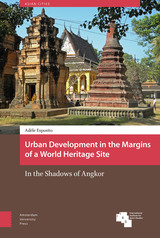 Urban Development in the Margins of a World Heritage Site: In the Shadows of Angkor
Adèle Esposito
Amsterdam University Press, 2018 This volume addresses the relationship between the UNESCO World Heritage Site of Angkor (Cambodia), and the nearby town of Siem Reap. While previous work on heritage sites has mainly focused on protected areas, this book shifts the attention to the margins, where detrimental, tourism-driven urban development may take place. By delimiting a protected site, a non-heritage space is created in which spatial fragmentation, disruptive development processes, and unjust power plays can occur. In post-war Cambodia, liberalization and collective aspirations for progress have provided a strong incentive for modernization. Controversial interests compete in the arena of urban development, and real estate development prevails over planned growth. At the same time, Siem Reap’s marginal position allows for some freedom in architectural and urban design. In the shadow of institutional control, this architectural space expresses alternative visions of the Khmer heritage and connects them with images of urban modernity.
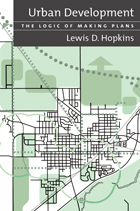 Urban Development: The Logic Of Making Plans
Lewis Hopkins
Island Press, 2001 With increased awareness of the role of plans in shaping urban and suburban landscapes has come increased criticism of planners and the planning profession. Developers, politicians, and citizens alike blame "poor planning" for a host of community ills. But what are plans really supposed to do? How do they work? What problems can they successfully address, and what is beyond their scope? In Urban Development, leading planning scholar Lewis Hopkins tackles these thorny issues as he explains the logic of plans for urban development and justifies prescriptions about when and how to make them. He explores the concepts behind plans, some that are widely accepted but seldom examined, and others that modify conventional wisdom about the use and usefulness of plans. The book: - places the role of plans and planners within the complex system of urban development
- offers examples from the history of plans and planning
- discusses when plans should be made (and when they should not be made)
- gives a realistic idea of what can be expected from plans
- examines ways of gauging the success or failure of plans
The author supports his explanations with graphics, case examples, and hypothetical illustrations that enliven, clarify, and make concrete the discussions of how decisions about plans are and should be made. Urban Development will give all those involved with planning human settlements a more thorough understanding of why and how plans are made, enabling them to make better choices about using and making plans. It is an important contribution that will be essential for students and faculty in planning theory, land use planning, and planning project courses.
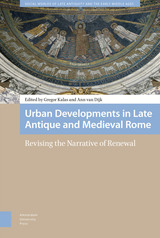 Urban Developments in Late Antique and Medieval Rome: Revising the Narrative of Renewal
Gregor Kalas
Amsterdam University Press, 2021 A narrative of decline punctuated by periods of renewal has long structured perceptions of Rome’s late antique and medieval history. In their probing contributions to this volume, a multi-disciplinary group of scholars provides alternative approaches to understanding the period. Addressing developments in governance, ceremony, literature, art, music, clerical education and the construction of the city’s identity, the essays examine how a variety of actors, from poets to popes, productively addressed the intermittent crises and shifting dynamics of these centuries in ways that bolstered the city’s resilience. Without denying that the past (both pre-Christian and Christian) consistently remained a powerful touchstone, the studies in this volume offer rich new insights into the myriad ways that Romans, between the fifth and the eleventh centuries, creatively assimilated the past as they shaped their future.
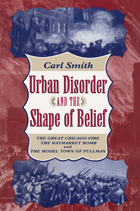 Urban Disorder and the Shape of Belief: The Great Chicago Fire, the Haymarket Bomb, and the Model Town of Pullman
Carl Smith
University of Chicago Press, 1994 The Great Chicago Fire of 1871, the Haymarket bombing of 1886, and the making and unmaking of the model town of Pullman—these remarkable events in what many considered the quintessential American city forced people across the country to confront the disorder that seemed inevitably to accompany urban growth and social change. In this book, Carl Smith explores the imaginative dimensions of these events as he traces the evolution of beliefs that increasingly linked city, disorder, and social reality in the minds of Americans. Studying a remarkable range of writings and illustrations, as well as protests, public gatherings, trials, hearings, and urban reform and construction efforts, Smith argues that these three events—and the public awareness of the them—not only informed one another, but collectively shaped how Americans saw, and continue to see, the city.
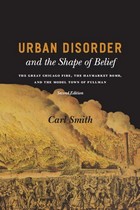 Urban Disorder and the Shape of Belief: The Great Chicago Fire, the Haymarket Bomb, and the Model Town of Pullman, Second Edition
Carl Smith
University of Chicago Press, 2007 The Great Chicago Fire of 1871, the Haymarket bombing of 1886, and the making and unmaking of the model town of Pullman—these remarkable events in what many considered the quintessential American city forced people across the country to confront the disorder that seemed inevitably to accompany urban growth and social change.
In Urban Disorder and the Shape of Belief, Carl Smith explores the imaginative dimensions of these events as he traces the evolution of interconnected beliefs and actions that increasingly linked city, disorder, and social reality in the minds of Americans. Examining a remarkable range of writings and illustrations, as well as protests, public gatherings, trials, hearings, and urban reform and construction efforts, Smith argues that these three events—and the public awareness of them—not only informed one another, but collectively shaped how Americans understood, and continue to understand, Chicago and modern urban life.
This classic of urban cultural history is updated with a foreword by the author that expands our understanding of urban disorder to encompass such recent examples as Hurricane Katrina, the Oklahoma City Bombing, and 9/11.
“Cultural history at its finest. By utilizing questions and methodologies of urban studies, social history, and literary history, Smith creates a sophisticated account of changing visions of urban America.”—Robin F. Bachin, Journal of Interdisciplinary History
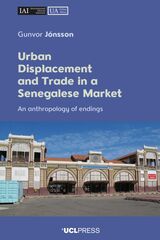 Urban Displacement and Trade in a Senegalese Market: An Anthropology of Endings
Gunvor Jónsson
University College London, 2024 A close look at people’s adaptivity and their capacities to adjust to new circumstances and environments in the face of urban displacement, with a special focus on Dakar.
The Malian market at the terminus in Dakar was bulldozed in 2009 and, following the privatization of the railway, passenger services in Senegal soon ceased altogether. The consequences were felt especially by women traders who had traveled the line since its inauguration, making the terminus in Dakar the center of a thriving network of traders and migrants. To examine the fates of those whose livelihoods were destroyed or disrupted, Gunvor Jónsson spent a year with the women evicted from the terminus. Urban Displacement and Trade in a Senegalese Market explores what happens at the end of urban displacement, when people find themselves scattered in sometimes unfamiliar surroundings, trying to pick up the pieces and create something meaningful.
In this book, Jónsson argues that rupture and ensuing displacement do not produce a clean slate where identities, networks, and histories must be produced from scratch. When evicted, traders and their markets do not simply vanish into thin air. The book examines not only what is lost but what emerges when a dense node, such as the terminus, is dissolved and fragmented. The ethnography of the traders reveals that the aftermath of eviction in cities may lead to diasporic forms of consciousness and identity formations. Displacement, whether on a local or global scale, demands difficult adjustments, and people’s capacities to adapt to new circumstances and environments vary. This book uncovers the different capacities and variations in traders’ reactions to displacement.
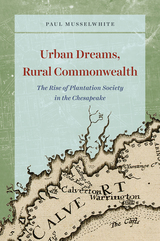 Urban Dreams, Rural Commonwealth: The Rise of Plantation Society in the Chesapeake
Paul Musselwhite
University of Chicago Press, 2018 The English settlers who staked their claims in the Chesapeake Bay were drawn to it for a variety of reasons. Some sought wealth from the land, while others saw it as a place of trade, a political experiment, or a potential spiritual sanctuary. But like other European colonizers in the Americas, they all aspired to found, organize, and maintain functioning towns—an aspiration that met with varying degrees of success, but mostly failure. Yet this failure became critical to the economy and society that did arise there. As Urban Dreams, Rural Commonwealth reveals, the agrarian plantation society that eventually sprang up around the Chesapeake Bay was not preordained—rather, it was the necessary product of failed attempts to build cities.
Paul Musselwhite details the unsuccessful urban development that defined the region from the seventeenth century through the Civil War, showing how places like Jamestown and Annapolis—despite their small size—were the products of ambitious and cutting-edge experiments in urbanization comparable to those in the largest port cities of the Atlantic world. These experiments, though, stoked ongoing debate about commerce, taxation, and self-government. Chesapeake planters responded to this debate by reinforcing the political, economic, and cultural authority of their private plantation estates, with profound consequences for the region’s laborers and the political ideology of the southern United States. As Musselwhite makes clear, the antebellum economy around this well-known waterway was built not in the absence of cities, but upon their aspirational wreckage.
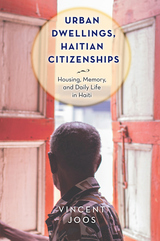 Urban Dwellings, Haitian Citizenships: Housing, Memory, and Daily Life in Haiti
Vincent Joos
Rutgers University Press, 2022 Urban Dwellings, Haitian Citizenships explores the failed international reconstruction of Port-au-Prince after the devastating 2010 earthquake. It describes the failures of international aid in Haiti while it analyzes examples of Haitian-based reconstruction and economic practices. By interrogating the relationship between indigenous uses of the cityscape and the urbanization of the countryside within a framework that centers on the violence of urban planning, the book shows that the forms of economic development promoted by international agencies institutionalize impermanence and instability. Conversely, it shows how everyday Haitians use and transform the city to create spaces of belonging and forms of citizenship anchored in a long history of resistance to extractive economies. Taking readers into the remnants of failed industrial projects in Haitian provinces and into the streets, rubble, and homes of Port-au-Prince, this book reflects on the possibilities and meanings of dwelling in post-disaster urban landscapes.
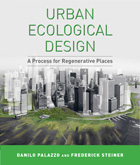 Urban Ecological Design: A Process for Regenerative Places
Danilo Palazzo and Frederick Steiner
Island Press, 2011 This trailblazing book outlines an interdisciplinary "process model" for urban design that has been developed and tested over time. Its goal is not to explain how to design a specific city precinct or public space, but to describe useful steps to approach the transformation of urban spaces. Urban Ecological Design illustrates the different stages in which the process is organized, using theories, techniques, images, and case studies. In essence, it presents a "how-to" method to transform the urban landscape that is thoroughly informed by theory and practice.
The authors note that urban design is viewed as an interface between different disciplines. They describe the field as "peacefully overrun, invaded, and occupied" by city planners, architects, engineers, and landscape architects (with developers and politicians frequently joining in). They suggest that environmental concerns demand the consideration of ecology and sustainability issues in urban design. It is, after all, the urban designer who helps to orchestrate human relationships with other living organisms in the built environment.
The overall objective of the book is to reinforce the role of the urban designer as an honest broker and promoter of design processes and as an active agent of social creativity in the production of the public realm.
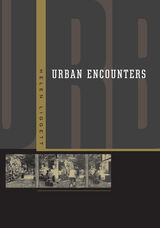 Urban Encounters
Helen Liggett
University of Minnesota Press, 2003 In words and photographs, reimagining the city as lived space In contrast to Walter Benjamin, Henri Lefebvre, and other European thinkers engaged with the concept of the urban, American intellectuals tend to envision the modern city as a dystopia, their perception of urban life influenced by negative stereotypes and fictional depictions in popular culture. In Urban Encounters, Helen Liggett challenges this fatalism by approaching the city as a vibrant, lived space. Combining a sophisticated critique of the urban with striking, street-level images, Liggett reclaims the human experience of the city. Liggett’s “encounters” with the urban are sequences of images and text that combine the joy of observing with the pleasure of making connections. For Liggett, this entails recognizing both beauty and danger. Alternately complementing and complicating her text, Liggett’s photographs capture the small details—the gestures, glances, and reflections—that together compose the urban experience. As a whole, Urban Encounters reimagines the city as a site of profound engagement with life.
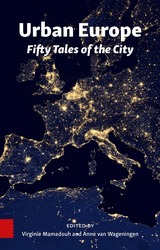 Urban Europe: Fifty Tales of the City
Virginie Mamadouh
Amsterdam University Press, 2017 In Urban Europe, urban researchers and practitioners based in Amsterdam tell the story of the European city, sharing their knowledge of and insights into urban dynamics in short, thought-provoking pieces.
Their essays were collected on the occasion of the adoption of the Pact of Amsterdam with an Urban Agenda for the European Union during the Dutch Presidency of the Council in 2016.
The fifty essays gathered in this volume present perspectives from diverse academic disciplines in the humanities and the social sciences.
The authors “ including the Mayor of Amsterdam, urban activists, civil servants and academic observers “ cover a wide range of topical issues, inviting and encouraging us to rethink citizenship, connectivity, innovation, sustainability and representation as well as the role of cities in administrative and political networks.
With the Urban Agenda for the European Union, EU Member States have acknowledged the potential of cities to address the societal challenges of the 21st century. This is part of a larger, global trend. These are all good reasons to learn more about urban dynamics and to understand the challenges that cities have faced in the past and that they currently face. Often but not necessarily taking Amsterdam as an example, the essays in this volume will help you grasp the complexity of urban Europe and identify the challenges your own city is confronting.
 Urban Exodus: Why the Jews Left Boston and the Catholics Stayed
Gerald Gamm
Harvard University Press, 2001 Across the country, white ethnics have fled cities for suburbs. But many have stayed in their old neighborhoods. When the busing crisis erupted in Boston in the 1970s, Catholics were in the forefront of resistance. Jews, 70,000 of whom had lived in Roxbury and Dorchester in the early 1950s, were invisible during the crisis. They were silent because they departed the city more quickly and more thoroughly than Boston's Catholics. Only scattered Jews remained in Dorchester and Roxbury by the mid-1970s.
In telling the story of why the Jews left and the Catholics stayed, Gerald Gamm places neighborhood institutions--churches, synagogues, community centers, schools--at its center. He challenges the long-held assumption that bankers and real estate agents were responsible for the rapid Jewish exodus. Rather, according to Gamm, basic institutional rules explain the strength of Catholic attachments to neighborhood and the weakness of Jewish attachments. Because they are rooted, territorially defined, and hierarchical, parishes have frustrated the urban exodus of Catholic families. And because their survival was predicated on their portability and autonomy, Jewish institutions exacerbated the Jewish exodus.
Gamm shows that the dramatic transformation of urban neighborhoods began not in the 1950s or 1960s, but in the 1920s. Not since Anthony Lukas's Common Ground has there been a book that so brilliantly explores not just Boston's dilemma but the roots of the American urban crisis.
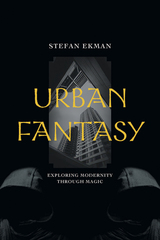 Urban Fantasy: Exploring Modernity through Magic
Stefan Ekman
Lever Press, 2024 Urban fantasy, the genre of fantastic literature in which magic and monsters meet modern society, is fairly young but has old roots. Stefan Ekman’s book, Urban Fantasy: Exploring Modernity through Magic, examines the genre in depth, including its inherent social commentary, its historical development, and its interplay between modernity and the fantastic.
The author draws on a wide range of urban fantasy texts from five decades, combining detailed analysis of dozens of novels and other media with broad discussions to provide a comprehensive understanding of the genre across three sections. The first section presents an overview of what the genre looks like today—both in terms of its common traits and its variety of settings—and how it has developed over time, including the history of urban fantasy scholarship. The second section examines urban fantasy’s core concern with the unseen, for example through a focus on unseen individuals overlooked by society or hiding within it, and on ignored urban spaces or labyrinthine undergrounds. The third section addresses how urban fantasy explores the relationship between the supernatural and modernity. Ekman offers readings of fiction by Ben Aaronovitch, Lauren Beukes, P. Djelí Clark, Charles de Lint, Neil Gaiman, Max Gladstone, Kim Harrison, N.K. Jemisin, and Megan Lindholm, among others.
Urban Fantasy will appeal to teachers and students of the fantastic as well as to urban fantasy enthusiasts and literary scholars. Ekman illuminates the genre’s evolution and defining traits, inviting readers to rethink urban fantasy as a creative tool for using magic to explore modernity.
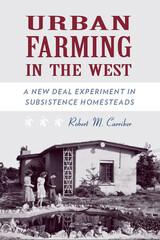 Urban Farming in the West: A New Deal Experiment in Subsistence Homesteads
Robert Carriker
University of Arizona Press, 2010 From 1933 to 1935, the federal government’s Division of Subsistence Homesteads created thirty-four New Deal communities that sought to provide a healthier and more economically secure life for disadvantaged Americans. These settlements were designed to combine the benefits of rural and urban living by offering part-time farming, uplifting social functions, and inexpensive homes. Four were located in the West: in Phoenix, Arizona; El Monte and San Fernando, California; and Longview, Washington.
Robert Carriker examines for the first time the intricate histories of these subsistence homestead projects, which have long been buried in bureaucratic records and clouded by misunderstanding, showing that in many ways they were among the agency’s most successful efforts. He provides case studies of the projects, rescuing their obscure histories using archival documents and rare photographs. He also reveals the machinations of civic groups and private citizens across the West who jockeyed for access to the funds being allotted for New Deal community building.
By describing what took place on these western homesteads, Carriker shows that the DSH’s agenda was not as far-fetched as some have reported. The tendency to condemn the Division and its projects, he argues, has failed to appreciate the good that came from some of the individual homestead communities—particularly those in the Far West.
Although overshadowed by the larger undertakings of the New Deal, some of these western communities remain thriving neighborhoods—living legacies to FDR’s efforts that show how the country once chose to deal with economic hardship. Too often the DSH is noted for its failures; Carriker’s study shows that its western homesteads were instead qualified accomplishments.
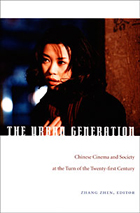 The Urban Generation: Chinese Cinema and Society at the Turn of the Twenty-First Century
Zhen Zhang, ed.
Duke University Press, 2007 Since the early 1990s, while mainland China’s state-owned movie studios have struggled with financial and ideological constraints, an exciting alternative cinema has developed. Dubbed the “Urban Generation,” this new cinema is driven by young filmmakers who emerged in the shadow of the events at Tiananmen Square in 1989. What unites diverse directors under the “Urban Generation” rubric is their creative engagement with the wrenching economic and social transformations underway in China. Urban Generation filmmakers are vanguard interpreters of the confusion and anxiety triggered by the massive urbanization of contemporary China. This collection brings together some of the most recent original research on this emerging cinema and its relationship to Chinese society. The contributors analyze the historical and social conditions that gave rise to the Urban Generation, its aesthetic innovation, and its ambivalent relationship to China’s mainstream film industry and the international film market. Focusing attention on the Urban Generation’s sense of social urgency, its documentary impulses, and its representations of gender and sexuality, the contributors highlight the characters who populate this new urban cinema—ordinary and marginalized city dwellers including aimless bohemians, petty thieves, prostitutes, postal workers, taxi drivers, migrant workers—and the fact that these “floating urban subjects” are often portrayed by non-professional actors. Some essays concentrate on specific films (such as Shower and Suzhou River) or filmmakers (including Jia Zhangke and Zhang Yuan), while others survey broader concerns. Together the thirteen essays in this collection give a multifaceted account of a significant, ongoing cinematic and cultural phenomenon. Contributors. Chris Berry, Yomi Braester, Shuqin Cui, Linda Chiu-han Lai, Charles Leary, Sheldon H. Lu, Jason McGrath, Augusta Palmer, Bérénice Reynaud, Yaohua Shi, Yingjin Zhang, Zhang Zhen, Xueping Zhong
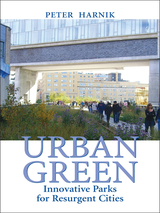 Urban Green: Innovative Parks for Resurgent Cities
Peter Harnik
Island Press, 2010 For years American urban parks fell into decay due to disinvestment, but as cities began to rebound—and evidence of the economic, cultural, and health benefits of parks grew— investment in urban parks swelled. The U.S. Conference of Mayors recently cited meeting the growing demand for parks and open space as one of the biggest challenges for urban leaders today. It is now widely agreed that the U.S. needs an ambitious and creative plan to increase urban parklands.
Urban Green explores new and innovative ways for “built out” cities to add much-needed parks. Peter Harnik first explores the question of why urban parkland is needed and then looks at ways to determine how much is possible and where park investment should go. When presenting the ideas and examples for parkland, he also recommends political practices that help create parks.
The book offers many practical solutions, from reusing the land under defunct factories to sharing schoolyards, from building trails on abandoned tracks to planting community gardens, from decking parks over highways to allowing more activities in cemeteries, from eliminating parking lots to uncovering buried streams, and more. No strategy alone is perfect, and each has its own set of realities. But collectively they suggest a path toward making modern cities more beautiful, more sociable, more fun, more ecologically sound, and more successful.
 Urban Growth and City-Systems in the United States, 1840–1860
Allan R. Pred
Harvard University Press, 1980 In this major new work of urban geography, Allan Pred interprets the process by which major cities grew and the entire city-system of the United States developed during the antebellum decades. The book focuses on the availability and distribution of crucial economic information. For as cities developed, this information helped determine the new urban areas in which business opportunities could be exploited and productive innovations implemented.
Pred places this original approach to urbanization in the context of earlier, more conventional studies, and he supports his view by a wealth of evidence regarding the flow of commodities between major cities. He also draws on an analysis of newspaper circulation, postal services, business travel, and telegraph usage. Pred's book goes far beyond the usual “biographies” of individual cities or the specialized studies of urban life. It offers a large and fascinating view of the way an entire city-system was put together and made to function. Indeed, by providing the first full account of these two decades of American urbanization, Pred has supplied a vital and hitherto missing link in the history of the United States.
 Urban Growth and the Circulation of Information: The United States System of Cities, 1790–1840
Allan R. Pred
Harvard University Press, 1973 This book analyzes how information circulated before the telegraph. Using newspapers and their contents, postal services, the volume of commodity trade, and travel patterns to analyze information circulation, Allan Pred provides a cogent and complete description of interrelationships among the large cities during the period from 1790 to 1840. His principal concern, however, is with general urban-growth and locational processes. Developments between 1790 and 1840 are studied in order to understand the growth process of all systems of cities, both past and present.
Allan Pred has developed a multiple-loop feedback model to describe the process by which a few cities established their long-term dominance, or high rank, during the early growth of particular urban systems and subsystems. The model includes non-local multiplier effects generated by local urban growth, allows interurban trade and information flows mutually to reinforce one another, and permits “spatially biased” information circulation to influence where business opportunities are exploited and how economic innovations are diffused. Several interurban innovation diffusion processes are examined to confirm the validity of certain aspects of the model.
Examples of both hierarchical and non-hierarchical diffusion processes are given, including the spread of the Bank Panic of 1837, daily newspapers, and steam engines. Much information is presented in the form of clear and illuminating tables, figures, and maps. This study, by historical perspective on social change and deeper insight into the importance of information circulation in urban growth, should be immensely valuable to current regional and locational planning.
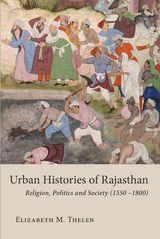 Urban Histories of Rajasthan: Religion, Politics and Society (1550–1800)
Elizabeth M. Thelen
Gingko, 2022 An exploration of religious conflicts in premodern urban India.
Diverse peoples intermingled in the streets and markets of premodern Indian cities. This book considers how these diverse residents lived together and negotiated their differences. Which differences mattered, when and to whom? How did state actions and policies affect urban society and the lives of various communities? How and why did conflict occur in urban spaces? Through these questions, this book explores the histories of urban communities in the three cities of Ajmer, Nagaur, and Pushkar in Rajasthan, between the sixteenth and eighteenth centuries. The focus of this study is on everyday life, contextualizing religious practices and conflicts by considering patterns of patronage and broader conflict patterns within society. The book examines various archival documents, from family and institutional records to state registers, and uses these documents to demonstrate the complex and sometimes contradictory ways religion intersected with politics, economics, and society. The author shows how many patronage patterns and processes persisted in altered forms, and how the robustness of these structures contributed to the resilience of urban spaces and society in precolonial Rajasthan.
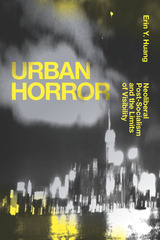 Urban Horror: Neoliberal Post-Socialism and the Limits of Visibility
Erin Y. Huang
Duke University Press, 2020 In Urban Horror Erin Y. Huang theorizes the economic, cultural, and political conditions of neoliberal post-socialist China. Drawing on Marxist phenomenology, geography, and aesthetics from Engels and Merleau-Ponty to Lefebvre and Rancière, Huang traces the emergence and mediation of what she calls urban horror—a sociopolitical public affect that exceeds comprehension and provides the grounds for possible future revolutionary dissent. She shows how documentaries, blockbuster feature films, and video art from China, Hong Kong, and Taiwan made between the 1990s and the present rehearse and communicate urban horror. In these films urban horror circulates through myriad urban spaces characterized by the creation of speculative crises, shifting temporalities, and dystopic environments inhospitable to the human body. The cinematic image and the aesthetics of urban horror in neoliberal post-socialist China lay the groundwork for the future to such an extent, Huang contends, that the seeds of dissent at the heart of urban horror make it possible to imagine new forms of resistance.
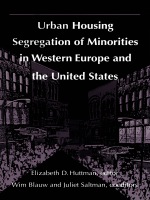 Urban Housing Segregation of Minorities in Western Europe and the United States
Elizabeth Huttman, Juliet Saltman and Wim Blauw, eds.
Duke University Press, 1991 This book provides an expert examination and comparison of housing segregation in major population centers in the United States and Western Europe and analyzes successes and failures of government policies and desegregation programs in the United States, the United Kingdom, the Netherlands, Sweden, France, and West Germany. The collection begins with a review of the historical development of housing segregation in these countries, describing current housing conditions, concentration of housing in each country’s leading cities, minority populations and the housing they occupy—specifically public, nonprofit, and owner-occupied dwellings. When focusing on the United States, the contributors assess housing segregation, antisegregation measures, and institutional racism toward blacks in the Midwest and South, and toward Mexican-Americans throughout American cities. Chapters dealing with Western Europe include housing segregation of South Asian and West Indian immigrants in Britain, immigrants in Sweden, Turkish, and Yugoslav “guest workers” in West Germany, and Algerian and other Arab groups in France. The book concludes with discussions of public housing policies; suburban desegregation, resegregation, and integration maintenance programs; specific integration stabilization programs; and desegregation efforts in one specific place. Contributors. Elizabeth Huttman, Michal Arend, Cihan Arin, Maurice Blanc, Wim Blauw, Ger Mik, Clyde McDaniels, Jürgen Friedrichs, Hannes Alpheis, John M. Goering, Len Gordon, Albert Mayer, Rosemary Helper, Barry V. Johnston, Terry Jones, Valerie Karn, Göran Lindberg, Anna Lisa Lindén, Deborah Phillips, Dennis Keating, Juliet Saltman, Alan Murie
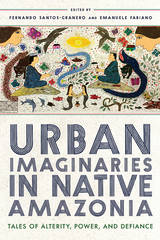 Urban Imaginaries in Native Amazonia: Tales of Alterity, Power, and Defiance
Fernando Santos-Granero
University of Arizona Press, 2023 Urban life has long intrigued Indigenous Amazonians, who regard cities as the locus of both extraordinary power and danger. Modern and ancient cities alike have thus become models for the representation of extreme alterity under the guise of supernatural enchanted cities. This volume seeks to analyze how these ambiguous urban imaginaries—complex representations that function as cognitive tools and blueprints for social action—express a singular view of cosmopolitical relations, how they inform and shape forest-city interactions, and the history of how they came into existence.
Featuring analysis from historical, ethnological, and philosophical perspectives, contributors seek to explain the imaginaries’ widespread diffusion, as well as their influence in present-day migration and urbanization. Above all, it underscores how these urban imaginaries allow Indigenous Amazonians to express their concerns about power, alterity, domination, and defiance.
Contributors
Natalia Buitron
Philippe Erikson
Emanuele Fabiano
Fabiana Maizza
Daniela Peluso
Fernando Santos-Granero
Pirjo Kristiina Virtanen
Robin M. Wright
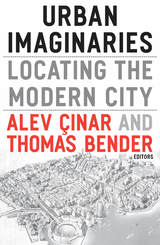 Urban Imaginaries: Locating the Modern City
Alev Cinar
University of Minnesota Press, 2007 For millennia, the city stood out against the landscape, walled and compact. This concept of the city was long accepted as adequate for characterizing the urban experience. However, the nature of the city, both real and imagined, has always been more permeable than this model reveals. The essays in Urban Imaginaries respond to this condition by focusing on how social and physical space is conceived as both indefinite and singular. They emphasize the ways this space is shared and thus made into urban culture. Urban Imaginaries offers case studies on cities in Brazil, Israel, Turkey, Lebanon, and India, as well as in the United States and France, and in doing so blends social, cultural, and political approaches to better understand the contemporary urban experience. Contributors: Margaret Cohen, Stanford U; Camilla Fojas, De Paul U; Beatriz Jaguaribe, Federal U of Rio de Janeiro; Anthony D. King, SUNY Binghamton; Mark LeVine, U of California, Irvine; Srirupa Roy, U of Massachusetts, Amherst; Seteney Shami, Social Science Research Council; AbdouMaliq Simone, New School U; Maha Yahya; Deniz Yükseker, Koç U, Istanbul. Alev Çinar is associate professor of political science and public administration at Bilkent University, Turkey. Thomas Bender is university professor of the humanities and history at New York University.
Urban Indians of Arizona: Phoenix, Tucson, and Flagstaff
Joyotpaul Chaudhuri
University of Arizona Press, 1974 Originally published in 1974, this report offers a snapshot in time of the Native populations of three of Arizona's most populous cities, Phoenix, Tucson, and Flagstaff.
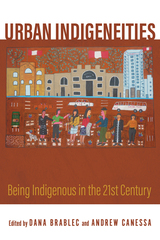 Urban Indigeneities: Being Indigenous in the Twenty-First Century
Dana Brablec
University of Arizona Press, 2023 Today a majority of Indigenous peoples live in urban areas: they are builders and cleaners, teachers and lawyers, market women and masons, living in towns and cities surrounded by the people and pollution that characterize life for most individuals in the twenty-first century. Despite this basic fact, the vast majority of studies on Indigenous peoples concentrate solely on rural Indigenous populations.
Aiming to highlight these often-overlooked communities, this is the first book to look at urban Indigenous peoples globally and present the urban Indigenous experience—not as the exception but as the norm. The contributing essays draw on a wide range of disciplines, including sociology, anthropology, architecture, land economy, and area studies, and are written by both Indigenous and non-Indigenous scholars. The analysis looks at Indigenous people across the world and draws on examples not usually considered within the study of indigeneity, such as Fiji, Japan, and Russia.
Indigeneity is often seen as being “authentic” when it is practiced in remote rural areas, but these essays show that a vigorous, vibrant, and meaningful indigeneity can be created in urban spaces too. The book challenges many of the imaginaries and tropes of what constitutes “the Indigenous” and offers perspectives and tools to understand a contemporary Indigenous urban reality. As such, it is a must-read for anyone interested in the real lives of Indigenous people today.
Contributors
Aiko Ikemura Amaral
Chris Andersen
Giuliana Borea
Dana Brablec
Andrew Canessa
Sandra del Valle Casals
Stanislav Saas Ksenofontov
Daniela Peluso
Andrey Petrov
Marya Rozanova-Smith
Kate Stevens
Kanako Uzawa
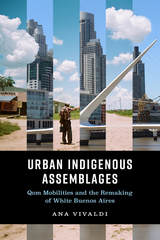 Urban Indigenous Assemblages: Qom Mobilities and the Remaking of White Buenos Aires
Ana Vivaldi
Vanderbilt University Press, 2025 Over the past two decades, Latin American politicians and activists have reckoned with their nations’ histories of racism, forced displacement of native peoples, and inequality by embracing Indigenous communities. In Argentina—a nation long fixated on presenting itself as “white” and “European”—this shift has been dramatic. After decades of erasure and racism toward Indigenous peoples, Argentinian politicians are now presenting Indigenous groups as central to the country’s culturally plural and multiracial identity.
In Urban Indigenous Assemblages, Ana Vivaldi considers how Argentina’s urban Indigenous population fits into this recent political and social movement. To do this, she focuses on how the Qom Indigenous people—whose traditional territories are in northern Argentina—have moved to Buenos Aires, made homes in shantytowns alongside other migrants, and remade urban space by building Indigenous lives in the city. Starting from a Qom barrio in Greater Buenos Aires, Vivaldi traces how Qom peoples’ travels to rural communities and movement across the city create complex networks and produce an urban life always in connection to other places. She argues that urban racialized indigeneities represent sites of contradictory relations visible and invisible to state actors and hypervisible to development agencies, as the Qom are expected to prove their authenticity and remove themselves from important relationships with nonwhite neighbors to access rights and recognition.
Based on eighteen months of fieldwork, this book analyzes the historical process that created the barrio: the constant remaking of this Indigenous space in interaction with state institutions and NGOs, the links between the barrio and northern Argentina through travels “far out” to rural communities in the Chaco, and the expansion of “Indigenous territories” beyond bounded location.
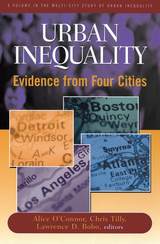 Urban Inequality: Evidence From Four Cities
Alice O'Connor
Russell Sage Foundation, 2001 Despite today's booming economy, secure work and upward mobility remain out of reach for many central-city residents. Urban Inequality presents an authoritative new look at the racial and economic divisions that continue to beset our nation's cities. Drawing upon a landmark survey of employers and households in four U.S. metropolises, Atlanta, Boston, Detroit, and Los Angeles, the study links both sides of the labor market, inquiring into the job requirements and hiring procedures of employers, as well as the skills, housing situation, and job search strategies of workers. Using this wealth of evidence, the authors discuss the merits of rival explanations of urban inequality. Do racial minorities lack the skills and education demanded by employers in today's global economy? Have the jobs best matched to the skills of inner-city workers moved to outlying suburbs? Or is inequality the result of racial discrimination in hiring, pay, and housing? Each of these explanations may provide part of the story, and the authors shed new light on the links between labor market disadvantage, residential segregation, and exclusionary racial attitudes. In each of the four cities, old industries have declined and new commercial centers have sprung up outside the traditional city limits, while new immigrant groups have entered all levels of the labor market. Despite these transformations, longstanding hostilities and lines of segregation between racial and ethnic communities are still apparent in each city. This book reveals how the disadvantaged position of many minority workers is compounded by racial antipathies and stereotypes that count against them in their search for housing and jobs. Until now, there has been little agreement on the sources of urban disadvantage and no convincing way of adjudicating between rival theories. Urban Inequality aims to advance our understanding of the causes of urban inequality as a first step toward ensuring that the nation's cities can prosper in the future without leaving their minority residents further behind. A Volume in the Multi-City Study of Urban Inequality
 Urban Informality and the Built Environment: Infrastructure, Exchange and Image
Edited by Nerea Amorós Elorduy, Nikhilesh Sinha, and Colin Marx
University College London, 2024 An innovative collection that explores how informal urban structures, from unauthorized residential areas to unregulated economic activities, shape urbanity through insights from architects, planners, political scientists, geographers, and urban theorists.
Urban Informality and the Built Environment demonstrates the value of greater and more diverse forms of engagement of built-environment disciplines with what constitutes urban informality and its politics. This collection lays forth a range of new methodologies to the study of urban informality, by exploring case studies from multiple geographies, including the creative place-making of street artists in Accra, the morphological evolution of urban Tirana, urban agriculture in la Habana, and social reproduction in Greece. Together these case studies offer ways to promote cross-fertilization between disciplines, lenses, geographies, and methodologies. Drawing on recent research by architects, planners, political scientists, geographers, and urban theorists, this book brings a multi-disciplinary approach to the study of informality and the built environment in diverse contexts.
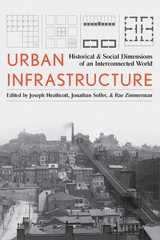 Urban Infrastructure: Historical and Social Dimensions of an Interconnected World
Rae Zimmerman, Jonathan Soffer, and Joseph Heathcott
University of Pittsburgh Press, 2022 Urban Infrastructures creates space for an encounter between historians, humanists, and social scientists who seek new methodological approaches to the history of urban infrastructure. It draws on recent work across history, anthropology, science and technology studies, geography, resilience/sustainability, and other disciplines to explore the social effects of infrastructure. The volume rejects narrow conceptions of infrastructure history as only the history of public works, and instead expands the definition to all business enterprises and public bodies that provide the goods and services essential for the day-to-day lives of most people. Essays examine traditional artifacts such as roads, highways, and waterworks, as well as nontraditional topics like regimes of heating and cooling, the processing and distribution of food, and even the metaphysics of electromagnetic infrastructure. Contributors reveal both the material grounding of urban social relations and the social life of material infrastructure. In the end, they show that infrastructure profoundly reshapes urban life even as residents fight to reshape infrastructure to their own ends.
 Urban Land Use Planning, Fifth Edition
Philip R. Berke, David R. Godschalk, and Edward J. Kaiser, with Daniel A. Rodriguez
University of Illinois Press, 2006 Divided into three sections, this edition of Urban Land Use Planning deftly balances an authoritative, up-to-date discussion of current practices with a vision of what land use planning should become. It explores the societal context of land use planning and proposes a model for understanding and reconciling the divergent priorities among competing stakeholders; it explains how to build planning support systems to assess future conditions, evaluate policy choices, create visions, and compare scenarios; and it sets forth a methodology for creating plans that will influence future land use change. Discussions new to the fifth edition include how to incorporate the three Es of sustainable development (economy, environment, and equity) into sustainable communities, methods for including livability objectives and techniques, the integration of transportation and land use, the use of digital media in planning support systems, and collective urban design based on analysis and public participation.
 Urban Land Uses: Amounts Of Land Used And Needed For Various Purposes By Typical American Cities. An Aid To Scientific Zoning Practice
Harland Bartholomew
Harvard University Press A leading city planning and zoning consultant has here assembled and analyzed detailed information as to the amounts of land actually in use for apartments, single-family houses, stores, streets, parks, and the other important urban purposes in twenty-two representative American cities for which he has prepared plans. On the basis of these facts, he suggests the amounts of land that should properly be allotted for the essential urban uses in cities in various population groups between 5,000 and 300,000. Blighted districts and severe economic losses, he maintains, have resulted from the excessive land speculation and undue optimism which have too often warped the zoning of American cities. This study supplies an indispensable fact basis for scientific zoning, of value to everyone concerned with urban land and its best use.
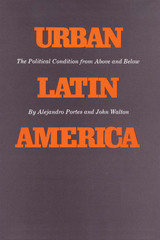 Urban Latin America: The Political Condition from Above and Below
By Alejandro Portes and John Walton
University of Texas Press, 1976 Much research on the city in developing societies has focused mainly on one of three areas—planning, demography, or economics—and has emphasized either power elites or the masses, but not both. The published literature on Latin America has reflected these interests and has so far failed to provide a comprehensive view of Latin American urbanization. Urban Latin America is an attempt to integrate research on Latin American social organization within a single theoretical framework: development as fundamentally a political problem. Alejandro Portes and John Walton have included material on both elites and marginal populations and on the three major areas of research in order to formulate and address some of the key questions about the structure of urban politics in Latin America. Following an introduction that delineates the scope of Latin American urban studies, Portes discusses the Latin American city as a creation of European colonialism. He goes on to examine political behavior among the poor, with central reference to system support and countersystem potential. Walton provides material for a comparative study of four cities: Monterrey and Guadalajara in Mexico and Medellín and Cali in Colombia. He also summarizes a large number of urban elite studies and develops a theoretical interpretation of their collective results, based on class structure and vertical integration. Material in each chapter is cross-referenced to other chapters, and the authors have used a common methodological approach in synthesizing and interpreting the research literature. In the final chapter they generalize current findings, elaborating on the interface between elite and mass politics in the urban situation. They make some observations on approaching changes and pinpoint possible research strategies for the future.
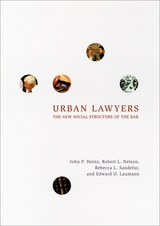 Urban Lawyers: The New Social Structure of the Bar
John P. Heinz, Robert L. Nelson, Rebecca L. Sandefur, and Edward O. Laumann
University of Chicago Press, 2005 Over the past several decades, the number of lawyers in large cities has doubled, women have entered the bar at an unprecedented rate, and the scale of firms has greatly expanded. This immense growth has transformed the nature and social structure of the legal profession. In the most comprehensive analysis of the urban bar to date, Urban Lawyers presents a compelling portrait of how these changes continue to shape the field of law today.
Drawing on extensive interviews with Chicago lawyers, the authors demonstrate how developments in the profession have affected virtually every aspect of the work and careers of urban lawyers-their relationships with clients, job tenure and satisfaction, income, social and political values, networks of professional connections, and patterns of participation in the broader community. Yet despite the dramatic changes, much remains the same. Stratification of income and power based on gender, race, and religious background, for instance, still maintains inequality within the bar.
The authors of Urban Lawyers conclude that organizational priorities will likely determine the future direction of the legal profession. And with this landmark study as their guide, readers will be able to make their own informed predictions.
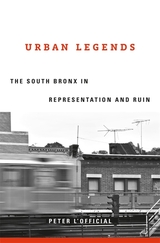 Urban Legends: The South Bronx in Representation and Ruin
Peter L’Official
Harvard University Press, 2020 A cultural history of the South Bronx that reaches beyond familiar narratives of urban ruin and renaissance, beyond the “inner city” symbol, to reveal the place and people obscured by its myths.
For decades, the South Bronx was America’s “inner city.” Synonymous with civic neglect, crime, and metropolitan decay, the Bronx became the preeminent symbol used to proclaim the failings of urban places and the communities of color who lived in them. Images of its ruins—none more infamous than the one broadcast live during the 1977 World Series: a building burning near Yankee Stadium—proclaimed the failures of urbanism.
Yet this same South Bronx produced hip hop, arguably the most powerful artistic and cultural innovation of the past fifty years. Two narratives—urban crisis and cultural renaissance—have dominated understandings of the Bronx and other urban environments. Today, as gentrification transforms American cities economically and demographically, the twin narratives structure our thinking about urban life.
A Bronx native, Peter L’Official draws on literature and the visual arts to recapture the history, people, and place beyond its myths and legends. Both fact and symbol, the Bronx was not a decades-long funeral pyre, nor was hip hop its lone cultural contribution. L’Official juxtaposes the artist Gordon Matta-Clark’s carvings of abandoned buildings with the city’s trompe l’oeil decals program; examines the centrality of the Bronx’s infamous Charlotte Street to two Hollywood films; offers original readings of novels by Don DeLillo and Tom Wolfe; and charts the emergence of a “global Bronx” as graffiti was brought into galleries and exhibited internationally, promoting a symbolic Bronx abroad.
Urban Legends presents a new cultural history of what it meant to live, work, and create in the Bronx.
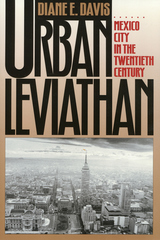 Urban Leviathan: Mexico City in the Twentieth Century
Diane E. Davis
Temple University Press, 1994 Why, Diane Davis asks, has Mexico City, once known as the city of palaces, turned into a sea of people, poverty, and pollution? Through historical analysis of Mexico City, Davis identifies political actors responsible for the uncontrolled industrialization of Mexico's economic and social center, its capital city. This narrative biography takes a perspective rarely found in studies of third-world urban development: Davis demonstrates how and why local politics can run counter to rational politics, yet become enmeshed, spawning ineffective policies that are detrimental to the city and the nation. The competing social and economic demand of the working poor and middle classes and the desires of Mexico's ruling Partido Revolucionario Institutional (PRI) have led to gravely diminished services, exorbitant infrastructural expenditures, and counter-productive use of geographic space. Though Mexico City's urban transport system has evolved over the past seven decades from trolley to bus to METRO (subway), it fails to meet the needs of the population, despite its costliness, and is indicative of the city's disastrous and ill-directed overdevelopment. Examining the political forces behind the thwarted attempts to provide transportation in the downtown and sprawling outer residential areas, Davis analyzes the maneuverings of local and national politicians, foreign investors, middle classes, agency bureaucrats, and various factions of the PRI. Looking to Mexico's future, Davis concludes that growing popular dissatisfaction and frequent urban protests demanding both democratic reform and administrative autonomy in the capital city suggest an unstable future for corporatist politics and the PRI's centralized one-party government.
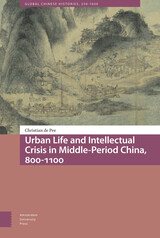 Urban Life and Intellectual Crisis in Middle-Period China, 800-1100
Christian de Pee
Amsterdam University Press, 2022 In the eleventh century, the cities of the Song Empire (960-1279) emerged into writing. Literati in prior centuries had looked away from crowded streets, but literati in the eleventh century found beauty in towering buildings and busy harbors. Their purpose in writing the city was ideological. On the written page, they tried to establish a distinction that eluded them in the avenues and to discern an immanent pattern in the movement of people, goods, and money. By the end of the eleventh century, however, they recognized that they had failed in their efforts. They had lost the Way in the city. Urban Life and Intellectual Crisis in Middle-Period China, 800-1100 reveals the central place of urban life in the history of the eleventh century. Important developments in literary innovation and monetary policy, in canonical exegesis and civil engineering, in financial reform and public health, converge in this book as they converged in the city.
Urban Life in Contemporary China
Martin King Whyte and William L. Parish
University of Chicago Press, 1984 Through interviews with city residents, Martin King Whyte and William L. Parish provide a unique survey of urban life in the last decade of Mao Zedong's rule. They conclude that changes in society produced under communism were truly revolutionary and that, in the decade under scrutiny, the Chinese avoided ostensibly universal evils of urbanism with considerable success. At the same time, however, they find that this successful effort spawned new and equally serious urban problems—bureaucratic rigidity, low production, and more.
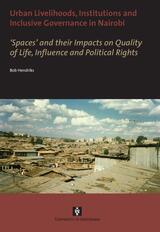 Urban Livelihoods, Institutions and Inclusive Governance in Nairobi: 'Spaces' and their Impacts on Quality of Life, Influence and Political Rights
Bob Hendriks
Amsterdam University Press, 2010 This study formulates conditions for sustainable impacts of inclusive and responsive governance through ‘invited spaces’ offered by the government and ‘claimed spaces’ created by the poor. The study questions how increased contributions to poverty reduction and improvement of quality of life for Nairobi citizens can be realised in an equitable and responsible way, while contributing to development of the city and country. To adequately address this two-sided objective of economic growth and poverty reduction in the contemporary context, the study analyses both processes and impacts; moreover it examines impacts in terms of quality of life as well as influence and political rights. The study explores the individually claimed spaces of households in Nairobi’s slums, the collectively claimed spaces of hybrid mechanisms for access to peri-urban land and tenure, and the invited spaces of city-wide governance networks.
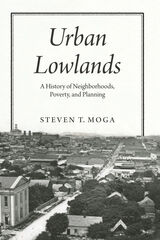 Urban Lowlands: A History of Neighborhoods, Poverty, and Planning
Steven T. Moga
University of Chicago Press, 2020 Interrogates the connections between a city’s physical landscape and the poverty and social problems that are often concentrated at its literal lowest points.
In Urban Lowlands, Steven T. Moga looks closely at the Harlem Flats in New York City, Black Bottom in Nashville, Swede Hollow in Saint Paul, and the Flats in Los Angeles, to interrogate the connections between a city’s actual landscape and the poverty and social problems that are often concentrated at its literal lowest points. Taking an interdisciplinary perspective on the history of US urban development from the nineteenth to the mid-twentieth century, Moga reveals patterns of inequitable land use, economic dispossession, and social discrimination against immigrants and minorities. In attending to the landscapes of neighborhoods typically considered slums, Moga shows how physical and policy-driven containment has shaped the lives of the urban poor, while wealth and access to resources have been historically concentrated in elevated areas—truly “the heights.” Moga’s innovative framework expands our understanding of how planning and economic segregation alike have molded the American city.
 Urban Lowlands: A History of Neighborhoods, Poverty, and Planning
Steven T. Moga
University of Chicago Press, 2020 This is an auto-narrated audiobook version of this book.
Interrogates the connections between a city’s physical landscape and the poverty and social problems that are often concentrated at its literal lowest points.
In Urban Lowlands, Steven T. Moga looks closely at the Harlem Flats in New York City, Black Bottom in Nashville, Swede Hollow in Saint Paul, and the Flats in Los Angeles, to interrogate the connections between a city’s actual landscape and the poverty and social problems that are often concentrated at its literal lowest points. Taking an interdisciplinary perspective on the history of US urban development from the nineteenth to the mid-twentieth century, Moga reveals patterns of inequitable land use, economic dispossession, and social discrimination against immigrants and minorities. In attending to the landscapes of neighborhoods typically considered slums, Moga shows how physical and policy-driven containment has shaped the lives of the urban poor, while wealth and access to resources have been historically concentrated in elevated areas—truly “the heights.” Moga’s innovative framework expands our understanding of how planning and economic segregation alike have molded the American city.
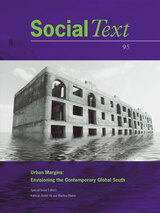 Urban Margins: Envisioning the Contemporary Global South, Volume 26
Kamran Asdar Ali and Martina Rieker, eds.
Duke University Press Urban studies of the global South have paid particular attention to megacities, such as Mumbai or Johannesburg, while more peripheral urban landscapes—including small and medium-sized towns as well as the margins of megacities themselves—remain overlooked. Emerging from the work of the Shehr Comparative Urban Landscapes Network, an academic initiative that seeks to further a social-historical and critical understanding of contemporary cities and urban practices, this special issue of Social Text takes up the question of marginality in contemporary urban cartographies in the Middle East, South Asia, and Africa. “Urban Margins” explores the complex processes through which citizens produce and negotiate these marginalized landscapes and in turn are informed by them. Focusing on Douala in Cameroon and Dakar in Senegal, one essay discusses how the state’s failure to provide for its citizens has led many to turn to informal networks and affiliations—whether kin-based, local, translocal, gendered, religious, or secular—for survival. Rendering the urban landscape of these cities in terms of these networks and the ways that they shape a citizen’s interaction with the city, the essay considers the political possibilities for African cities where diverse multilingual and ethnic populations face the challenges, pitfalls, and compromises of coexistence. Examining how female migrant workers negotiate various spaces within the urban landscape of the free trade zone outside of Colombo, Sri Lanka, another essay details how the city represents a site of personal autonomy and political possibilities for both women and men. One contributor addresses the city of Ramallah in the embattled West Bank—the de facto Palestinian capital and the only cosmopolitan space within the occupied territories—to consider how the Palestinian urban middle class remains haunted by the “unmodern” within its own history and present. Another surveys changes in the cultural significance of roads, forts, and town walls in Bahla, Oman, in the aftermath of the country’s 1970 coup d’etat. Contributors. Kamran Asdar Ali, Allen Feldman, Sandya Hewamanne, Mandana E. Limbert, Rosalind Morris, Martina Rieker, AbdouMaliq Simone, Lisa Taraki
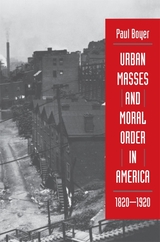 Urban Masses and Moral Order in America, 1820-1920
Paul Boyer
Harvard University Press, 1992 For over a century, dark visions of moral collapse and social disintegration in American cities spurred an anxious middle class to search for ways to restore order. In this important book, Paul Boyer explores the links between the urban reforms of the Progressive era and the long efforts of prior generations to tame the cities. He integrates the ideologies of urban crusades with an examination of the careers and the mentalities of a group of vigorous activists, including Lyman Beecher; the pioneers of the tract societies and Sunday schools; Charles Loring Brace of the Children's Aid Society; Josephine Shaw Lowell of the Charity Organization movement; the father of American playgrounds, Joseph Lee; and the eloquent city planner Daniel Hudson Burnham.
Boyer describes the early attempts of Jacksonian evangelicals to recreate in the city the social equivalent of the morally homogeneous village; he also discusses later strategies that tried to exert a moral influence on urban immigrant families by voluntarist effort, including, for instance, the Charity Organizations' "friendly visitors." By the 1890s there had developed two sharply divergent trends in thinking about urban planning and social control: the bleak assessment that led to coercive strategies and the hopeful evaluation that emphasized the importance of environmental betterment as a means of urban moral control.
Urban Memory and Visual Culture in Berlin: Framing the Asynchronous City, 1957-2012
Simon Ward
Amsterdam University Press, 2016 As sites of continual change and transformation, cities are fundamentally forgetful places. Yet at the same time, urban areas are also homes to museums and archives that collect and exhibit the past-a key cultural, political, and economic activity. This book looks at that paradox through the example of Berlin to see how the city has responded to challenges to memory created by rapid changes in politics, economics, society, and the built environment, ultimately arguing that the recovery of the experience of time is central to the practices of an emergent memory culture in the contemporary city.
 Urban Microcosms 1789-1940
Edited by Margit Dirscherl and Astrid Köhler
University of London Press, 2019 Urban microcosms are small-scale communal spaces that are integral to, or integrated into, city life. Some, such as railway stations or department stores, are typically located in city centres. Others, such as parks, are less quintessentially metropolitan, whilst harbours or beaches are often located on the peripheries of cities or outside them altogether. All are part of a network of nodes establishing connections in and beyond the city. Together, they shape and inflect the infrastructure of modern life. By introducing the concept of urban microcosm into social, cultural, and literary studies, this interdisciplinary volume challenges the widely held assumption that city life is evenly spread across its spaces. Sixteen case studies focus on selected urban microcosms from across Europe between 1789 and 1940, and examine the external appearance, representation, histories, and internal rules of these organizational structures and facilities. In so doing, they contribute to an understanding of modernity, and of the impact of the dynamics of urban life on human experience and intersubjectivity. Margit Dirscherl is Lecturer in German at St Hugh’s, University of Oxford. Astrid Köhler is Professor of German Literature and Comparative Cultural Studies at Queen Mary University of London.
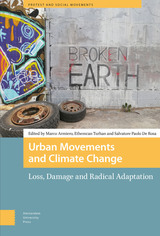 Urban Movements and Climate Change: Loss, Damage and Radical Adaptation
Marco Armiero
Amsterdam University Press, 2024 From the social uprisings in Santiago de Chile to the radical municipalism experiments in Naples, this volume takes the reader on an intellectual journey at the frontlines across global South and global North where climate breakdown meets social innovations. While the effects of the climate crisis are becoming more extreme and tangible across the globe with every passing day, urban social movements and their radical strategies to resist climate injustice often remain concealed from sight. Contributors to this volume ask how would it be to look at the politics of urban loss-and-damage not from the highly securitized zones of climate summits, but from favelas in Rio de Janeiro, flood-prone communities in São Paulo, urban gardens in Naples, or neighborhoods resisting climate gentrification in New York City? This book explores diverse worlds and praxis of urban social movements resisting the rising tides of climate crisis and social injustice.
 Urban Music Governance: What Busking Can Teach Us about Data, Policy and Our Cities
Jess Reia
Intellect Books, 2025 This insightful investigation of busking culture confronts relevant truths about power relations, policy, and inequality in contemporary cities across the globe.
What happens when precarious urban cultural laborers take data collection, laws, and policymaking into their own hands? Buskers have been part of our cities for hundreds of years, but they remain invisible to governments and in datasets. From nuisance to public art, this cultural practice can help us understand the politics of data collection, archives, regulatory frameworks, and urban planning. Busking also responds to underlying questions on the boundaries of the rights to the city, and who has a voice in shaping how our cities are planned and governed.
A transnational exploration of street performance, Urban Music Governance examines the intricate limits of legality, data visibility, and resistance from the perspective of those working at the social and regulatory margins of society. Based on a decade of fieldwork in Rio de Janeiro and Montreal, this book offers a lively account of why such an often-overlooked practice matters today.
By investigating the role of busking in contemporary society, Urban Music Governance presents an original interdisciplinary study that exposes how power dynamics in policymaking decide issues of access—and exclusion—around us, above and below ground.
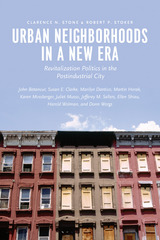 Urban Neighborhoods in a New Era: Revitalization Politics in the Postindustrial City
Clarence N. Stone and Robert P. Stoker
University of Chicago Press, 2015 For decades, North American cities racked by deindustrialization and population loss have followed one primary path in their attempts at revitalization: a focus on economic growth in downtown and business areas. Neighborhoods, meanwhile, have often been left severely underserved. There are, however, signs of change. This collection of studies by a distinguished group of political scientists and urban planning scholars offers a rich analysis of the scope, potential, and ramifications of a shift still in progress. Focusing on neighborhoods in six cities—Baltimore, Chicago, Denver, Los Angeles, Phoenix, and Toronto—the authors show how key players, including politicians and philanthropic organizations, are beginning to see economic growth and neighborhood improvement as complementary goals. The heads of universities and hospitals in central locations also find themselves facing newly defined realities, adding to the fluidity of a new political landscape even as structural inequalities exert a continuing influence.
While not denying the hurdles that community revitalization still faces, the contributors ultimately put forth a strong case that a more hospitable local milieu can be created for making neighborhood policy. In examining the course of experiences from an earlier period of redevelopment to the present postindustrial city, this book opens a window on a complex process of political change and possibility for reform.
 Urban Nightlife and Contested Spaces: Cultural Encounters After Dusk
Sara Brandellero
Amsterdam University Press, 2025 Urban Nightlife and Contested Spaces: Cultural Encounters after Dusk captures the multifarious nature of the urban night and how it is lived, structured, and reflected upon in diverse cultural and artistic expressions. The volume acknowledges the urban night as an often-overlooked key dimension necessary to understand the complexities of today’s urban spaces, including the often-polarizing question of migration. After dusk, urban social challenges are often magnified, as questions of who can be where and when – along ethnic, racial or gender lines, for example – gain an additional dimension.
The volume underscores, indeed, the multi-dimensionality of night spaces, where bottom-up, grassroot initiatives provide opportunities for self-expression by traditionally marginalized and silenced groups. Chapters span disciplines of urbanism and urban history, literary, film and cultural studies, music, sociology of labour, anthropology of migration, alongside autoethnographic contributions and practice-based photo essays by artists for whom the night is their habitual setting and canvas.
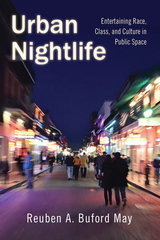 Urban Nightlife: Entertaining Race, Class, and Culture in Public Space
May, Reuben A. Buford
Rutgers University Press, 2014 Sociologists have long been curious about the ways in which city dwellers negotiate urban public space. How do they manage myriad interactions in the shared spaces of the city? In Urban Nightlife, sociologist Reuben May undertakes a nuanced examination of urban nightlife, drawing on ethnographic data gathered in a Deep South college town to explore the question of how nighttime revelers negotiate urban public spaces as they go about meeting, socializing, and entertaining themselves. May’s work reveals how diverse partiers define these spaces, in particular the ongoing social conflict on the streets, in bars and nightclubs, and in the various public spaces of downtown. To explore this conflict, May develops the concept of “integrated segregation”—the idea that diverse groups are physically close to one another yet rarely have meaningful interactions—rather, they are socially bound to those of similar race, class, and cultural backgrounds. May’s in-depth research leads him to conclude that social tension is stubbornly persistent in part because many participants fail to make the connection between contemporary relations among different groups and the historical and institutional forces that perpetuate those very tensions; structural racism remains obscured by a superficial appearance of racial harmony.
Through May’s observations, Urban Nightlife clarifies the complexities of race, class, and culture in contemporary America, illustrating the direct influence of local government and nightclub management decision-making on interpersonal interaction among groups. Watch a video with Reuben A. Buford May: Watch video now. (http://www.youtube.com/watch?v=VCs1xExStPw).
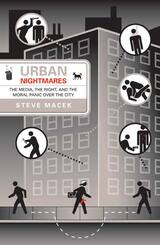 Urban Nightmares: The Media, The Right, And The Moral Panic Over The City
Steve Macek
University of Minnesota Press, 2006 For the past twenty-five years, American culture has been marked by an almost palpable sense of anxiety about the nation's inner cities. Urban America has been consistently depicted as a site of moral decay and uncontrollable violence, held in stark contrast to the allegedly moral, orderly suburbs and exurbs. In Urban Nightmares, Steve Macek documents the scope of these alarmist representations of the city, examines the ideologies that informed them, and exposes the interests they ultimately served. Macek begins by exploring the conservative analysis of the urban poverty, joblessness, and crime that became entrenched during the post-Vietnam War era. Instead of attributing these conditions to broad social and economic conditions, right-wing intellectuals, pundits, policy analysts, and politicians blamed urban problems on the urban underclass itself. This strategy was successful, Macek argues, in deflecting attention from growing income disparities and in helping to secure popular support both for reactionary social policies and the assumptions underwriting them.Turning to the media, Macek explains how Hollywood filmmakers, advertisers, and journalists validated the right-wing discourse on the urban crisis, popularizing its vocabulary. Network television news and weekly news magazines, he shows, covered the inner city and its inhabitants in ways consonant with the right's alarmist discourse. At the same time, Hollywood zealously recycled this antiurban bias in films ranging from genre thrillers like Falling Down and Judgment Night to auteurist efforts like Batman and Seven. Even advertising, Macek argues, mobilized fears of a perilous urban realm to sell products from SUVs to home alarm systems.Published during the second term of an American president whose conservative agenda has been an ongoing disaster for the poor and the working class, Urban Nightmares exposes a divisive legacy of media bias against the cities and their inhabitants and issues a wake-up call to readers to recognize that media images shape what we believe about others' (and our own) place in the real world-and the consequences of those beliefs can be devastating.Steve Macek teaches media studies, urban and suburbia studies, and speech communication at North Central College in Naperville, Illinois.
Urban Open Space: Designing For User Needs
Mark Francis; Landscape Architecture Foundation
Island Press, 2003 Research has shown that successful public spaces are ones that are responsive to the needs of their users, are democratic in their accessibility, and are meaningful for the larger community and society. While considerable research has been done on needs and conflicts in open space, no one document integrates all this knowledge and makes it available to professionals, students, and researchers. Based on archival research; published case studies; site visits; and interviews with researchers, open space designers, managers, and users, Urban Open Space looks across several seminal studies to glean significant findings and design implications related to user needs and conflicts. It reviews and identifies those critical user needs that must be considered in the planning, design, and management of outdoor spaces, and synthesizes that knowledge into an accessible and useful document.
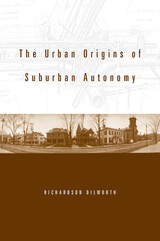 The Urban Origins of Suburban Autonomy
Richardson Dilworth
Harvard University Press, 2005 Using the urbanized area that spreads across northern New Jersey and around New York City as a case study, this book presents a convincing explanation of metropolitan fragmentation—the process by which suburban communities remain as is or break off and form separate political entities. The process has important and deleterious consequences for a range of urban issues, including the weakening of public finance and school integration. The explanation centers on the independent effect of urban infrastructure, specifically sewers, roads, waterworks, gas, and electricity networks. The book argues that the development of such infrastructure in the late nineteenth century not only permitted cities to expand by annexing adjacent municipalities, but also further enhanced the ability of these suburban entities to remain or break away and form independent municipalities. The process was crucial in creating a proliferation of municipalities within metropolitan regions.
The book thus shows that the roots of the urban crisis can be found in the interplay between technology, politics, and public works in the American city.
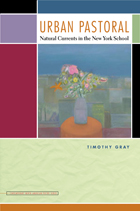 Urban Pastoral: Natural Currents in the New York School
Timothy Gray
University of Iowa Press, 2010 Were the urbane, avant-garde poets of the New York School secretly nature lovers like Edward Abbey, Wendell Berry, and Annie Dillard? In Urban Pastoral, Timothy Gray urges us to reconsider our long-held appraisals of Frank O’Hara, John Ashbery, Barbara Guest, and their peers as celebrants of cosmopolitan culture and to think of their more pastoral impulses. As Gray argues, flowers are more beautiful in the New York School’s garden of verse because no one expects them to bloom there. Along with the poets whose careers he chronicles, Gray shows us that startlingly new approaches to New York City art and literature emerge when natural and artificial elements collide kaleidoscopically, as when O’Hara likens blinking stars to a hairnet, when painter Jane Freilicher places a jar of irises in her studio window to mirror purple plumes rising from Consolidated Edison smokestacks, or when poet Kathleen Norris equates rooftop water towers with grain silos as she plans her escape route to the Great Plains. The New York School poets and their coterie have become a staple of poetics, literary criticism and biography, cultural studies, and art criticism, but Urban Pastoral is the first study of the original New York School poets to offer sustained discussion of the pastoral and natural imagery within the work of these renowned “city poets” and also consider poets from the second generation of the New York School—Diane di Prima, Jim Carroll, and Kathleen Norris. Moving beyond the traditional boundaries of literary criticism to embrace the creative spirit of New York poets and artists, Gray’s accessible, lively, and blithely experimental book will shape future discussions of contemporary urban literature and literary nature writing, offering new evidence of avant-garde poetry’s role within those realms.
 Urban Planning and Civic Order in Germany, 1860–1914
Brian Ladd
Harvard University Press, 1990 This unique contribution to social and urban history describes the struggle of prosperous German bourgeois leaders to bring order to their rapidly growing cities during the tumultuous age of industrial expansion in the decades before World War I. Brian Ladd sets the emerging theory and practice of city planning in the context of debates about the nature of the modern city and the possibility of improving society by regulating its physical environment. In so doing, he reveals the extent to which modern city planning is a product of the aspirations, prejudices, and frustrations of the German burghers who created it.
He sifts through the often contradictory motives underlying public health works (including waterworks, sewers, baths, and parks); plans for streets and squares, especially in new developments; working-class housing, zoning, public transit, and aesthetic concerns. He examines planning as civic boosterism and as social reform, identifying the reformers and describing their role in urban politics and society. His analysis focuses on Düsseldorf, Cologne, and Frankfurt-am-Main, but also pays considerable attention to Berlin and other cities.
This broad-gauged view of an increasingly popular subject will enlighten historians of Germany and of modern Europe, urban historians, city planners, and architectural historians.
 Urban Policy In 20th Century
Hirsch, Arnold
Rutgers University Press, 1992 The recent riots in Los Angeles brought the urban crisis back to the center of public policy debates in Washington, D.C., and in urban areas throughout the United States. The contributors to this volume examine the major policy issues--race, housing, transportation, poverty, the changing environment, the effects of the global economy--confronting contemporary American cities. Raymond A. Mohl begins with an extended discussion of the origins, evolution, and current state of Federal involvement in urban centers. Michael B. Katz follows with an insightful look at poverty in turn-of-the-century New York and the attempts to ameliorate the desperate plight of the poor during this period of rapid economic growth. Arnold R. Hirsch, Mohl, and David R. Goldfield then pursue different facets of the racial dilemma confronting American cities. Hirsch discusses historical dimensions of residential segregation and public policy, while Mohl uses Overtown, Miami, as a case study of the social impact of the construction of interstate highways in urban communities. David Goldfield explores the political ramifications and incongruities of contemporary urban race relations. Finally, Carl Abbott and Sam Bass Warner, Jr., examine the impact of global economic developments and the environmental implications of past policy choices. Collectively, the authors show us where we have been, some of the needs that must be addressed, and the urban policy alternatives we face.
 Urban Policy in the Time of Obama
James DeFilippis
University of Minnesota Press, 2016 With his background as a community organizer and as a state legislator representing Chicago’s South Side, Barack Obama became America’s most “urban” president since Teddy Roosevelt. But what has been his record in dealing with the issues most impacting our metropolitan areas today? Looking past the current administration, what are the future prospects of the nation’s cities, and how have they been shaped by our policies in this century? Seeking to answer these questions, the contributors to Urban Policy in the Time of Obama explore a broad range of policy arenas that shape, both directly and indirectly, metropolitan areas and urbanization processes. This volume reveals the Obama administration’s surprisingly limited impact on cities, through direct policy initiatives such as Strong Cities, Strong Communities, Promise Neighborhoods, and Choice Neighborhood Initiatives. There has been greater impact with broader policies that shape urban life and governance, including immigration reform, education, and health care. Closing with Cedric Johnson’s afterword illuminating the Black Lives Matter movement and what its broader social context says about city governance in our times, Urban Policy in the Time of Obama finds that most of the dominant policies and policy regimes of recent years have fallen short of easing the ills of America’s cities, and calls for a more equitable and just urban policy regime. Contributors: Rachel G. Bratt, Tufts University; Christine Thurlow Brenner, University of Massachusetts Boston; Karen Chapple, University of California, Berkeley; James Fraser, Vanderbilt University; Edward G. Goetz, University of Minnesota; Dan Immergluck, Georgia Tech; Amy T. Khare, University of Chicago; Robert W. Lake, Rutgers University; Pauline Lipman, University of Illinois at Chicago; Lorraine C. Minnite, Rutgers University–Camden; Kathe Newman, Rutgers University; Deirdre Oakley, Georgia State; Frances Fox Piven, City University of New York; Hilary Silver, Brown University; Janet Smith, University of Illinois at Chicago; Preston H. Smith II, Mount Holyoke College; Todd Swanstrom, University of Missouri–St. Louis; Nik Theodore, University of Illinois at Chicago; J. Phillip Thompson, MIT.
Urban Poverty, Political Participation, and the State: Lima, 1970–1990
Henry Dietz
University of Pittsburgh Press, 1998 Urban Poverty, Political Participation, and the State offers an unparalleled longitudinal view of how the urban poor saw themselves and their neighborhoods and how they behaved and organized to provide their neighborhoods with basic goods and services. Grounding research on theoretical notions from Albert Hirschman and an analytical framework from Verba and Nie, Dietz produces findings that hold great interest for comparativists and students of political behavior in general.
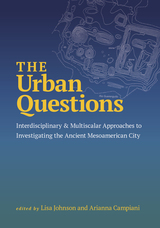 The Urban Questions: Interdisciplinary and Multiscalar Approaches to Investigating the Ancient Mesoamerican City
Lisa Johnson and Arianna Campiani
University of Utah Press, 2025 Connecting community, infrastructure, and expansion in ancient Mesoamerica
This groundbreaking volume presents a fresh and comprehensive look at the urban development of Mesoamerican cities. Moving beyond traditional methods, The Urban Questions adopts a dynamic, multidisciplinary approach to understanding the complexity and diversity of ancient settlements. By examining urbanism at multiple scales—from individual events to households, neighborhoods, and entire regions—it offers a nuanced view of how these cities evolved over time.
Contributors explore key themes such as community identity, infrastructure management, and the intersection of social, political, and economic processes. Rich in both spatial and material analysis, the chapters provide insights into the lived experience of ancient Mesoamerican inhabitants and the gradual expansion of their cities. With innovative archaeological methodologies and theoretical frameworks, this volume is an essential resource for scholars of Mesoamerican studies, archaeology, and urban history, shedding new light on the dynamic nature of ancient cities.
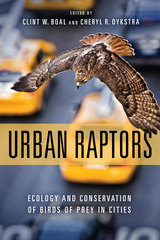 Urban Raptors: Ecology and Conservation of Birds of Prey in Cities
Edited by Clint W. Boal and Cheryl R. Dykstra
Island Press, 2018 Raptors are an unusual success story of wildness thriving in the heart of our cities—they have developed substantial populations around the world in recent decades. But there are deeper issues around how these birds make their urban homes. New research provides insight into the role of raptors as vital members of the urban ecosystem and future opportunities for protection, management, and environmental education. A cutting-edge synthesis of over two decades of scientific research, Urban Raptors is the first book to offer a complete overview of urban ecosystems in the context of bird-of-prey ecology and conservation. This comprehensive volume examines urban environments, explains why some species adapt to urban areas but others do not, and introduces modern research tools to help in the study of urban raptors. It also delves into climate change adaptation, human-wildlife conflict, and the unique risks birds of prey face in urban areas before concluding with real-world wildlife management case studies and suggestions for future research and conservation efforts. Boal and Dykstra have compiled the go-to single source of information on urban birds of prey. Among researchers, urban green space planners, wildlife management agencies, birders, and informed citizens alike, Urban Raptors will foster a greater understanding of birds of prey and an increased willingness to accommodate them as important members, not intruders, of our cities.
 Urban Reform and Its Consequences: A Study in Representation
Susan Welch and Timothy Bledsoe
University of Chicago Press, 1988 Throughout this century, reformers have fought to eliminate party control of city politics. As a result, the majority of American cities today elect council members in at-large and nonpartisan elections. This result of the turn-of-the-century Progressive movement, which worked for election rules that eliminated the power of the urban machine and the working class on which it was based, is today still a subject of lively debate. For example, in the mid-1980s, regular Democrats in Chicago sought to institute a nonpartisan mayoral election. Supporters thought that reform would make the electoral process more democratic, while opponents charged that it was meant to dilute the voting powers of blacks. Clearly, the effect of urban reform remains an important issue for scholars and politicians alike.
Susan Welch and Timothy Bledsoe clarify a portion of the debate by investigating how election structures affect candidates and the nature of representation. They examine the different effects of district versus at-large elections and of partisan versus nonpartisan elections. Who gets elected? Are representatives' socioeconomic status and party affiliation related to election form? Are election structures related to how those who are elected approach their jobs? Do they see themselves as representatives concerned with the good of the city as a whole?
Urban Reform and Its Consequences reports an unprecedented wealth of data drawn from a sample of nearly 1,000 council members and communities with populations between 50,000 and 1 million across 42 states. The sample includes communities that use a variety of election procedures. This study is therefore the most comprehensive and accurate to date.
Welch and Bledsoe conclude that nonpartisan and at-large elections do give city councils a more middle- and upper-middle-class character and have changed the way representatives view their jobs. Reform measures have not, however, produced councils that are significantly more conservative or more prone to conflict. Overall, the authors conclude that partisan and district elections are more likely to represent the whole community and to make the council more accountable to the electorate.
 Urban Regimes and Strategies: Building Europe's Central Executive District in Brussels
Alex G. Papadopoulos
University of Chicago Press, 1996 If a city based its planning decisions on the needs of an international bureaucracy rather than on the traditional needs of local residents and businesses, how would that city change? How might it look?
In Brussels, Belgium—since 1957 home to the European Union—such change is taking place. Observing the change, Alexis G. Papadopoulos explores a new geographical concept, the Central Executive District. This urban form is significantly different from the Central Business District, its conventional counterpart. Drawing on game and rational choice theories, spatial analysis, and land economics, the author analyzes how the landscape of the city's center has evolved over the last three decades under the influence of successive coalitions of local and foreign elites. He describes how foreign diplomats, international corporate executives, and real-estate developers cooperate with one another to carry out major urban projects in the face of resistance from local neighborhood groups, conservationists, and political factions.
This study makes a substantial contribution to geography and urban studies both for its implications about the future of world cities like New York, London, and Paris and for its original application of the notion of cooperative regimes.
 Urban Religion in Roman Corinth: Interdisciplinary Approaches
Daniel Schowalter
Harvard University Press, 2005 This book discusses the history, topography, and urban development of Corinth with special attention to civic and private religious practices in the Roman colony. Expert analysis of the latest archaeological data is coupled with consideration of what can be known about the emergence and evolution of religions in Corinth. Several scholars consider specific aspects of archaeological evidence and ask how enhanced knowledge of such topics as burial practice, water supply, and city planning strengthens our understanding of religious identity and practice in the ancient city. This volume seeks to gain insight into the nature of the Greco-Roman city visited by Paul, and the ways in which Christianity gradually emerged as the dominant religion.
This is a collaborative effort by scholars of archaeology, Greco-Roman studies, and early Christian literature who met at Harvard University in January 2002. It is the third in a series of volumes on ancient cities utilizing an interdisciplinary approach to understand urban life in ancient times. The earlier books are Ephesos, Metropolis of Asia (1995) and Pergamon: Citadel of the Gods (1998).
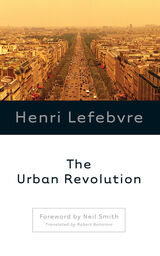 The Urban Revolution
Henri Lefebvre
University of Minnesota Press, 2003 Originally published in 1970, The Urban Revolution marked Henri Lefebvre’s first sustained critique of urban society, a work in which he pioneered the use of semiotic, structuralist, and poststructuralist methodologies in analyzing the development of the urban environment. Although it is widely considered a foundational book in contemporary thinking about the city, The Urban Revolution has never been translated into English—until now. This first English edition, deftly translated by Robert Bononno, makes available to a broad audience Lefebvre’s sophisticated insights into the urban dimensions of modern life.Lefebvre begins with the premise that the total urbanization of society is an inevitable process that demands of its critics new interpretive and perceptual approaches that recognize the urban as a complex field of inquiry. Dismissive of cold, modernist visions of the city, particularly those embodied by rationalist architects and urban planners like Le Corbusier, Lefebvre instead articulates the lived experiences of individual inhabitants of the city. In contrast to the ideology of urbanism and its reliance on commodification and bureaucratization—the capitalist logic of market and state—Lefebvre conceives of an urban utopia characterized by self-determination, individual creativity, and authentic social relationships.A brilliantly conceived and theoretically rigorous investigation into the realities and possibilities of urban space, The Urban Revolution remains an essential analysis of and guide to the nature of the city.Henri Lefebvre (d. 1991) was one of the most significant European thinkers of the twentieth century. His many books include The Production of Space (1991), Everyday Life in the Modern World (1994), Introduction to Modernity (1995), and Writings on Cities (1995).Robert Bononno is a full-time translator who lives in New York. His recent translations include The Singular Objects of Architecture by Jean Baudrillard and Jean Nouvel (Minnesota, 2002) and Cyberculture by Pierre Lévy (Minnesota, 2001).
|
|
